Tuesday, 7 February 2017

CUCAM Carolinum opening ceremony
On February 7, 2017 was held at Carolinum opening ceremony of the presentation of the newly established Centre of Excellence at Charles University in the field of material science.
Opening ceremony attended for instance the Rector of Charles University prof. Tomáš Zima, HM Ambassador to the Czech Republic Jan Thompson, Deputy Vice Prime Minister for science, research and innovation Ing. Lucie Orgonikova and deputy director for management section of the operational programs of the Ministry of Education, Youth and Sports Dr. Mgr. Vaclav Velčovský, Ph.D.
It is a Centre for Advanced Materials: design, synthesis and applications (CUCAM), whose main initiator is Professor Petr Nachtigall. The centre focuses on research and development of new materials for adsorption, catalytic, optical and medical applications. The centre will deal with the preparation of new materials with appropriate application properties using unconventional methods of synthesis.
The centre is led by Prof. Russell E. Morris of the University of St. Andrews in Scotland, which is an internationally recognized authority in the field of synthesis, characterization and application of porous materials.
This centre of excellence was supported by funds prompted the Ministry of Education, Youth and Sports OP VVV to support excellent research teams.
Feb. 7, 2017 -
On February 7, 2017 was held at Carolinum opening ceremony of the presentation of the newly established Centre of Excellence at Charles University in the field of material science.
Opening ceremony attended for instance the Rector of Charles University prof. Tomáš Zima, HM Ambassador to the Czech Republic Jan Thompson, Deputy Vice Prime Minister for science, research and innovation Ing. Lucie Orgonikova and deputy director for management section of the operational programs of the Ministry of Education, Youth and Sports Dr. Mgr. Vaclav Velčovský, Ph.D.
It is a Centre for Advanced Materials: design, synthesis and applications (CUCAM), whose main initiator is Professor Petr Nachtigall. The centre focuses on research and development of new materials for adsorption, catalytic, optical and medical applications. The centre will deal with the preparation of new materials with appropriate application properties using unconventional methods of synthesis.
The centre is led by Prof. Russell E. Morris of the University of St. Andrews in Scotland, which is an internationally recognized authority in the field of synthesis, characterization and application of porous materials.
This centre of excellence was supported by funds prompted the Ministry of Education, Youth and Sports OP VVV to support excellent research teams.
Wednesday, 3 October 2018

Seminar: Mechanosensitive fluorescent polymer
by , Martin Krupicka, PhD
Mechanochemistry is dealing with the application of mechanical force on the molecule, which increases energy of the system, and complements the other typical methods of activation, ie. heating, irradiation or application of electric current. The main aim of our work is to design mechoanochemical indicators, which instantly and reversibly change their spectral properties as a function of external force. Experimentally, the force is obtained by covalently binding the indicator into the polymer and applying ultrasound to the solution. The polymer chain is stretched and transduces the force towards the indicator. Currently, the PEG is used due to its avaliablility and solubility. Nevertheless, the choice of polymer is almost arbitrary and could open a path to mechanosensitive materials. The first synthetically obtained molecule in the series is fluorescent tetraphenylethylene, decorated via click reaction by two 10 kDa PEG chains. Change in emission spectra was seen upon sonication of the solution.
CH3 lecture hall, Hlavova 8, Prague
Oct. 3, 2018 - (14:00 )
Mechanochemistry is dealing with the application of mechanical force on the molecule, which increases energy of the system, and complements the other typical methods of activation, ie. heating, irradiation or application of electric current. The main aim of our work is to design mechoanochemical indicators, which instantly and reversibly change their spectral properties as a function of external force. Experimentally, the force is obtained by covalently binding the indicator into the polymer and applying ultrasound to the solution. The polymer chain is stretched and transduces the force towards the indicator. Currently, the PEG is used due to its avaliablility and solubility. Nevertheless, the choice of polymer is almost arbitrary and could open a path to mechanosensitive materials. The first synthetically obtained molecule in the series is fluorescent tetraphenylethylene, decorated via click reaction by two 10 kDa PEG chains. Change in emission spectra was seen upon sonication of the solution.
CH3 lecture hall, Hlavova 8, PragueThursday, 25 October 2018

Meeting of Advisory Board of Charles University Centre of Advanced Materials
The report is available here
Oct. 25, 2018 - (14:00 )
The report is available here
Wednesday, 31 October 2018

Charge control in polymeric materials --- from reversible adsorption to catalytically active block copolymer membranes
Well-defined copolymers and block copolymers featuring charge-tunable groups in the side chain are ideal materials for the design and modification of interfaces in various settings [1] or for controlling and directing self-assembly processes [2]. We herein report on the synthesis of polyelectrolytes, polyampholytes, and polyzwitterions as well as the corresponding block copolymers using free radical and controlled radical polymerization techniques. One key building block in our setting is polydehydroalanine (PDha),[3,4] a polyzwitterion with high charge density and, depending on the pH, tunable net charge (Figure 1). Apart from interesting solution characteristics [5], we have used PDha and partially protected derivatives as coating materials for iron oxide nanoparticles or within polyelectrolyte multilayers and could show that this allows reversible adsorption / desorption experiments using various oppositely counterparts, including proteins and model pollutants such as methylene blue [6,7]. Besides PDha, we are also interested in the incorporation of polymerizable naphthol derivatives to create polymeric photoacids which show different charge characteristics and solubility in aqueous environment with and without irradiation [8]. Finally, once charge-tunable building blocks are introduced as responsive segment in block copolymer membranes, electrostatic adsorption can be used to immobilize powerful oxidation catalysts such as polyoxometalates based on Mn and V. We could show that such self-supporting hybrid and heterogeneous oxidation catalysts can be used in different model reactions both under static conditions as well as under flow (Figure 2)[9]
References:
1. C. Barner-Kowollik, A. S. Goldmann, F. H. Schacher, Macromolecules 2016, 49, 5001-5016 (Perspective Article).
2. F. H. Schacher, J. C. Brendel, Chem. Asian J. 2018, 13, 230-239.
3. U. Günther, L. V. Sigolaeva, D. V. Pergushov, F. H. Schacher, Macromol. Chem. Phys. 2013, 214, 2202-2212.
4. M. Billing, F. H. Schacher, Macromolecules 2016, 49, 3696-3705.
5. M. Billing, G. Festag, P. Bellstedt, F. H. Schacher, Polym. Chem. 2017, 8, 936-945.
6. M. v. d. Lühe, A. Weidner, S. Dutz, F. H. Schacher, ACS Appl. Nano Mater. 2018, 1, 232-244.
7. P. Biehl, M. V. D. Lühe, F. H. Schacher, Macromol. Rapid Commun. 2018, 39, 1800017
8. F. Wendler, K. Schneider, B. Dietzek, F. H. Schacher, Polym. Chem. 2017, 8, 2959-2971.
9. I. Romanenko, M. Lechner, F. Wendler, C. Hörenz, C. Streb, F. H. Schacher, J. Mater. Chem. A 2017, 5, 15789-15796.
CH3 lecture hall, Hlavova 8, Prague
Oct. 31, 2018 - (14:00 )
Well-defined copolymers and block copolymers featuring charge-tunable groups in the side chain are ideal materials for the design and modification of interfaces in various settings [1] or for controlling and directing self-assembly processes [2]. We herein report on the synthesis of polyelectrolytes, polyampholytes, and polyzwitterions as well as the corresponding block copolymers using free radical and controlled radical polymerization techniques. One key building block in our setting is polydehydroalanine (PDha),[3,4] a polyzwitterion with high charge density and, depending on the pH, tunable net charge (Figure 1). Apart from interesting solution characteristics [5], we have used PDha and partially protected derivatives as coating materials for iron oxide nanoparticles or within polyelectrolyte multilayers and could show that this allows reversible adsorption / desorption experiments using various oppositely counterparts, including proteins and model pollutants such as methylene blue [6,7]. Besides PDha, we are also interested in the incorporation of polymerizable naphthol derivatives to create polymeric photoacids which show different charge characteristics and solubility in aqueous environment with and without irradiation [8]. Finally, once charge-tunable building blocks are introduced as responsive segment in block copolymer membranes, electrostatic adsorption can be used to immobilize powerful oxidation catalysts such as polyoxometalates based on Mn and V. We could show that such self-supporting hybrid and heterogeneous oxidation catalysts can be used in different model reactions both under static conditions as well as under flow (Figure 2)[9]
References:
1. C. Barner-Kowollik, A. S. Goldmann, F. H. Schacher, Macromolecules 2016, 49, 5001-5016 (Perspective Article).
2. F. H. Schacher, J. C. Brendel, Chem. Asian J. 2018, 13, 230-239.
3. U. Günther, L. V. Sigolaeva, D. V. Pergushov, F. H. Schacher, Macromol. Chem. Phys. 2013, 214, 2202-2212.
4. M. Billing, F. H. Schacher, Macromolecules 2016, 49, 3696-3705.
5. M. Billing, G. Festag, P. Bellstedt, F. H. Schacher, Polym. Chem. 2017, 8, 936-945.
6. M. v. d. Lühe, A. Weidner, S. Dutz, F. H. Schacher, ACS Appl. Nano Mater. 2018, 1, 232-244.
7. P. Biehl, M. V. D. Lühe, F. H. Schacher, Macromol. Rapid Commun. 2018, 39, 1800017
8. F. Wendler, K. Schneider, B. Dietzek, F. H. Schacher, Polym. Chem. 2017, 8, 2959-2971.
9. I. Romanenko, M. Lechner, F. Wendler, C. Hörenz, C. Streb, F. H. Schacher, J. Mater. Chem. A 2017, 5, 15789-15796.
CH3 lecture hall, Hlavova 8, Prague
Wednesday, 14 November 2018

Theoretical rovibronic energies of pathological molecules: Extreme floppiness and Born-Oppenheimer breakdown
This talk will discuss two cases of molecules for which the conventional, perturbed harmonic-oscillator/rigid- rotor description of the rotation and vibration breaks down severely.
The first case of that of extremely flexible (or extremely floppy) molecules [1-3], of which protonated methane CH5 is the prototypical example. CH5 lacks a well-defined equilibrium structure. Adding a proton to methane changes completely the vibrational energetics, especially some of the bending motions become extremely "soft" - that is, almost free. This cannot be described by conventional molecular theory and in recent years there has been much discussion as to how to understand experimental rotation-vibration spectra of CH5 [4]. We have proposed an algebraic-method description [1-3], considering the rotation in space together with two extremely soft internal-rotation vibrational modes as a free rotation in five-dimensional space with the appropriate symmetry group SU(5). The mathematical theory for rotation in a 5D space is completely known. We used the rather simple, resulting energy expression (depending on one parameter only) for the experimentally known, low-lying energies of CH5 [5] and found that we could represent them rather well by fitting the one parameter to experiment.
The second case is that of the Renner effect. For a chain molecule, the electronic energy can be doubly degenerate at linear configurations but splits into two distinct electronic states as the molecule bends out of linearity. The two electronic states interact and must be treated together in calculations of rovibronic energies. This constitutes a breakdown of the Born-Oppenheimer approximation. In simulations of rovibronic molecular spectra aimed at, for example, supporting remote-sensing investigations of space, it seems likely that the next hurdle encountered will be the interaction of electronic states, of which the Renner effect is a relatively simple example. For about 20 years now, we have carried out calculations of rovibronic energies for triatomic Renner molecules and examples will be presented (see, for example, [6] and references therein).
References:
-
H. Schmiedt, P. Jensen, and S. Schlemmer, Phys. Rev. Lett. 117, 223002/1-5 (2016).
-
H. Schmiedt, P. Jensen, and S. Schlemmer, Chem. Phys. Lett. 672, 34 (2017)
-
H. Schmiedt, P. Jensen, and S. Schlemmer, J. Mol. Spectrosc. 342, 132–137 (2017).
-
T. Oka, Science 347, 1313 (2015).
-
O. Asvany, K. M. T. Yamada, S. Brünken, A. Potapov, and S. Schlemmer, Science 347, 1346 (2015).
-
B. Ostojić, P. Schwerdtfeger, P. R. Bunker, and P. Jensen, J. Mol. Spectrosc. 330, 130–141 (2016).
CH3 lecture hall, Hlavova 8, Prague
Nov. 14, 2018 - (14:00 )
This talk will discuss two cases of molecules for which the conventional, perturbed harmonic-oscillator/rigid- rotor description of the rotation and vibration breaks down severely.
The first case of that of extremely flexible (or extremely floppy) molecules [1-3], of which protonated methane CH5 is the prototypical example. CH5 lacks a well-defined equilibrium structure. Adding a proton to methane changes completely the vibrational energetics, especially some of the bending motions become extremely "soft" - that is, almost free. This cannot be described by conventional molecular theory and in recent years there has been much discussion as to how to understand experimental rotation-vibration spectra of CH5 [4]. We have proposed an algebraic-method description [1-3], considering the rotation in space together with two extremely soft internal-rotation vibrational modes as a free rotation in five-dimensional space with the appropriate symmetry group SU(5). The mathematical theory for rotation in a 5D space is completely known. We used the rather simple, resulting energy expression (depending on one parameter only) for the experimentally known, low-lying energies of CH5 [5] and found that we could represent them rather well by fitting the one parameter to experiment.
The second case is that of the Renner effect. For a chain molecule, the electronic energy can be doubly degenerate at linear configurations but splits into two distinct electronic states as the molecule bends out of linearity. The two electronic states interact and must be treated together in calculations of rovibronic energies. This constitutes a breakdown of the Born-Oppenheimer approximation. In simulations of rovibronic molecular spectra aimed at, for example, supporting remote-sensing investigations of space, it seems likely that the next hurdle encountered will be the interaction of electronic states, of which the Renner effect is a relatively simple example. For about 20 years now, we have carried out calculations of rovibronic energies for triatomic Renner molecules and examples will be presented (see, for example, [6] and references therein).
References:
-
H. Schmiedt, P. Jensen, and S. Schlemmer, Phys. Rev. Lett. 117, 223002/1-5 (2016).
-
H. Schmiedt, P. Jensen, and S. Schlemmer, Chem. Phys. Lett. 672, 34 (2017)
-
H. Schmiedt, P. Jensen, and S. Schlemmer, J. Mol. Spectrosc. 342, 132–137 (2017).
-
T. Oka, Science 347, 1313 (2015).
-
O. Asvany, K. M. T. Yamada, S. Brünken, A. Potapov, and S. Schlemmer, Science 347, 1346 (2015).
-
B. Ostojić, P. Schwerdtfeger, P. R. Bunker, and P. Jensen, J. Mol. Spectrosc. 330, 130–141 (2016).
CH3 lecture hall, Hlavova 8, Prague
Wednesday, 21 November 2018

Modern Cryogenic-Temperature Electron Microscopy in the Nanostructural Study of Soft Matter
Cryogenic-temperature transmission electron microscopy (cryo-TEM) is now accepted as an almost standard tool in the study of complex liquids, i.e., liquid systems with aggregates or building blocks on the nanometric scale. Methodologies have been developed to capture the nanostructure of liquid systems, while preserving their original state at a given concentration and temperature. Cryo-TEM is now widely used to study synthetic, biological, and medical soft matter. Originally developed for aqueous systems, it has been also applied successfully in the study of non-aqueous systems. Recent developments in TEM include highly-sensitive cameras that allow imaging with very few electrons, thus reducing electron-beam radiation-damage, a main limitation in electron microscopy of soft matter. Recent introduction of the analog to light microscopy “phase-plate”, enhances image-contrast in low-contrast specimens, another major limitation in microscopy of soft matter.
However, cryo-TEM cannot be used to study highly viscous systems, or those containing objects larger than several hundreds of nanometers. Recent developments in high-resolution scanning electron microscopy (HR-SEM) have made it an ideal tool for the study of nano-aggregates in viscous systems or in systems containing large objects hundreds of nanometers and larger, in which small (nanometric) features are to be imaged. Improved field-emission electron guns, electron optics and detectors have made it possible to image nanoparticles down to a few nanometers. Liquid nanostructured systems can now be studied by cryo-SEM, using much-improved cryogenic specimen holders and transfer systems. In recent years we have developed and improved a novel specimen preparation methodology for cryo-SEM specimens that preserves the original nanostructure of labile complex liquids, at specified composition and temperature, quite similarly to what had been done in cryo-TEM.
In my talk I will describe the state-of-the-technology of cryo-TEM and cryo-SEM, and demonstrate the application of our combined methodology in nano- and biotechnology. Among others, I will describe applications in the study of polyelectrolytes and their interaction with oppositely-charged amphiphiles, biological system, such as extracellular vesicles, and carbon nanotubes dispersed in super-acids.
CH3 lecture hall, Hlavova 8, Prague CH3 lecture hall, Hlavova 8, Prague
Nov. 21, 2018 - (14:00 )
Cryogenic-temperature transmission electron microscopy (cryo-TEM) is now accepted as an almost standard tool in the study of complex liquids, i.e., liquid systems with aggregates or building blocks on the nanometric scale. Methodologies have been developed to capture the nanostructure of liquid systems, while preserving their original state at a given concentration and temperature. Cryo-TEM is now widely used to study synthetic, biological, and medical soft matter. Originally developed for aqueous systems, it has been also applied successfully in the study of non-aqueous systems. Recent developments in TEM include highly-sensitive cameras that allow imaging with very few electrons, thus reducing electron-beam radiation-damage, a main limitation in electron microscopy of soft matter. Recent introduction of the analog to light microscopy “phase-plate”, enhances image-contrast in low-contrast specimens, another major limitation in microscopy of soft matter.
However, cryo-TEM cannot be used to study highly viscous systems, or those containing objects larger than several hundreds of nanometers. Recent developments in high-resolution scanning electron microscopy (HR-SEM) have made it an ideal tool for the study of nano-aggregates in viscous systems or in systems containing large objects hundreds of nanometers and larger, in which small (nanometric) features are to be imaged. Improved field-emission electron guns, electron optics and detectors have made it possible to image nanoparticles down to a few nanometers. Liquid nanostructured systems can now be studied by cryo-SEM, using much-improved cryogenic specimen holders and transfer systems. In recent years we have developed and improved a novel specimen preparation methodology for cryo-SEM specimens that preserves the original nanostructure of labile complex liquids, at specified composition and temperature, quite similarly to what had been done in cryo-TEM.
In my talk I will describe the state-of-the-technology of cryo-TEM and cryo-SEM, and demonstrate the application of our combined methodology in nano- and biotechnology. Among others, I will describe applications in the study of polyelectrolytes and their interaction with oppositely-charged amphiphiles, biological system, such as extracellular vesicles, and carbon nanotubes dispersed in super-acids.
CH3 lecture hall, Hlavova 8, Prague CH3 lecture hall, Hlavova 8, PragueWednesday, 9 January 2019

Opening of Electron Microscopy Laboratory
Newly established Electron Microscopy Laboratory is now part of our Faculty. Laboratory is equipped with new JEOL JEM-NEOARM 200F transmission electron microscope.
Jan. 9, 2019 -
Newly established Electron Microscopy Laboratory is now part of our Faculty. Laboratory is equipped with new JEOL JEM-NEOARM 200F transmission electron microscope.
Wednesday, 20 February 2019

AFM in SEM, new approach in microscopy and story of Czech young Spin-off.
Czech Republic is well known for the development of scientific instrument especially in Electron microscopy field. NenoVision is young Czech spin-off who brought to the market innovation AFM add on for SEM microscopes. In the talk, we will explain the advantages of the AFM/SEM integrations on several application examples. A unique technique for correlative imaging CPEM will be presented and described. Part of the talk will also devote the spin-off formation and technology company founded with all issues, challenges and expectations. Everybody is welcome to discuss how to transfer technology from the University to Business environment.
CH3 lecture hall, Hlavova 8, Prague
Feb. 20, 2019 - (14:00 )
Czech Republic is well known for the development of scientific instrument especially in Electron microscopy field. NenoVision is young Czech spin-off who brought to the market innovation AFM add on for SEM microscopes. In the talk, we will explain the advantages of the AFM/SEM integrations on several application examples. A unique technique for correlative imaging CPEM will be presented and described. Part of the talk will also devote the spin-off formation and technology company founded with all issues, challenges and expectations. Everybody is welcome to discuss how to transfer technology from the University to Business environment.
CH3 lecture hall, Hlavova 8, PragueWednesday, 13 March 2019

Modelling Ionic liquids. From bulk behavior to supercapacitor applications.
by , Prof. Christian Holm
In the first part of the talk we present an ab initio parametrization scheme for explicitly dipole-polarizable force fields for the simulation of an ionic liquid. The scheme allows for, in principle, arbitrarily coarse-grained representations. All parameters in the force field are derived from first-principles, based on simple physical arguments. Only one fit parameter enters the parametrization, a global scaling factor for the size of the particles, which is adjusted to reproduce the experimental mass density. As important examples and for the first time, polarizable coarse-grained force fields are derived for 1-alkyl-3- methylimidazolium cations with varying alkyl-chain lengths (alkyl = ethyl, butyl, hexyl) and hexafluorophosphate and tetrafluoroborate anions. Our findings are in good agreement with experimental results and results of further atomistic simulations. Hence, the force fields can be faithfully used where polarizability is expected to play a significant role, such as simulations of energy storage devices.
In the second part we look at nanoporous supercapacitors that have attracted much attention recently as energy storage devices with remarkable cyclability and high power and energy densities. However, their use in high frequency applications might be limited by a relatively slow charging process. In this molecular dynamics simulation study of a slit-pore capacitor system, we focus on the physics and optimization of charge/discharge cycles. We will see that step-voltage charging is slow because the coions become trapped in narrow pores of supercapacitor electrodes. To avoid such trapping, a slow voltage-sweep charging is considered, which allows to accelerate the overall charging process substantially. However, we will demonstrate that a step-voltage, rather than sweeping, is preferable for fast discharging.
CH3 lecture hall, Hlavova 8, Prague
March 13, 2019 - (14:00 )
In the first part of the talk we present an ab initio parametrization scheme for explicitly dipole-polarizable force fields for the simulation of an ionic liquid. The scheme allows for, in principle, arbitrarily coarse-grained representations. All parameters in the force field are derived from first-principles, based on simple physical arguments. Only one fit parameter enters the parametrization, a global scaling factor for the size of the particles, which is adjusted to reproduce the experimental mass density. As important examples and for the first time, polarizable coarse-grained force fields are derived for 1-alkyl-3- methylimidazolium cations with varying alkyl-chain lengths (alkyl = ethyl, butyl, hexyl) and hexafluorophosphate and tetrafluoroborate anions. Our findings are in good agreement with experimental results and results of further atomistic simulations. Hence, the force fields can be faithfully used where polarizability is expected to play a significant role, such as simulations of energy storage devices.
In the second part we look at nanoporous supercapacitors that have attracted much attention recently as energy storage devices with remarkable cyclability and high power and energy densities. However, their use in high frequency applications might be limited by a relatively slow charging process. In this molecular dynamics simulation study of a slit-pore capacitor system, we focus on the physics and optimization of charge/discharge cycles. We will see that step-voltage charging is slow because the coions become trapped in narrow pores of supercapacitor electrodes. To avoid such trapping, a slow voltage-sweep charging is considered, which allows to accelerate the overall charging process substantially. However, we will demonstrate that a step-voltage, rather than sweeping, is preferable for fast discharging.
Wednesday, 20 March 2019

Magneto-elastic coupling in computer simulations: from magnetic microgles to elastomers
Her current research interests lie in the field of complex dipolar systems and can be divided into 3 main groups:
- magnetic soft matter (magnetic fluids, magnetic gels, capped magnetic colloids, anisotropic magnetic particles, Janus particles),
- charged soft matter (ionic liquids, polyelectrolytes) and
- DNA duplexes self-‐assembly.
She used different statistical physics methods and computer simulations and developed various new approaches to describe the aforementioned systems in detail and to assist experimentalists in constructing possible new smart materials.
CH3 lecture hall, Hlavova 8, Prague
March 20, 2019 - (14:00 )
Her current research interests lie in the field of complex dipolar systems and can be divided into 3 main groups:
- magnetic soft matter (magnetic fluids, magnetic gels, capped magnetic colloids, anisotropic magnetic particles, Janus particles),
- charged soft matter (ionic liquids, polyelectrolytes) and
- DNA duplexes self-‐assembly.
She used different statistical physics methods and computer simulations and developed various new approaches to describe the aforementioned systems in detail and to assist experimentalists in constructing possible new smart materials.
CH3 lecture hall, Hlavova 8, PragueTuesday, 23 April 2019

Molecular Characterization of Polymers
by , Taihyun Chang
The course by Professor Taihyun Chang will be held on Tuesday 23 April (9:50– 11:30) and on Mondays from 29 April to 13 May (14:00–16:30), 2019, in lecture hall CH4, Hlavova 8, Praha. All students are cordially welcome.
CH4 lecture hall, Hlavova 8, Prague
April 23, 2019 (09:50 – 11:30 )
The course by Professor Taihyun Chang will be held on Tuesday 23 April (9:50– 11:30) and on Mondays from 29 April to 13 May (14:00–16:30), 2019, in lecture hall CH4, Hlavova 8, Praha. All students are cordially welcome.
CH4 lecture hall, Hlavova 8, Prague
Molecular Characterization of Polymers
by , Taihyun Chang
The course by Professor Taihyun Chang will be held on Tuesday 23 April (9:50– 11:30) and on Mondays from 29 April to 13 May (14:00–16:30), 2019, in lecture hall CH4, Hlavova 8, Praha. All students are cordially welcome.
CH4 lecture hall, Hlavova 8, Prague
April 23, 2019 - May 13, 2019 (14:00 – 16:30 )
The course by Professor Taihyun Chang will be held on Tuesday 23 April (9:50– 11:30) and on Mondays from 29 April to 13 May (14:00–16:30), 2019, in lecture hall CH4, Hlavova 8, Praha. All students are cordially welcome.
CH4 lecture hall, Hlavova 8, PragueMonday, 29 April 2019

Molecular Characterization of Polymers
by , Taihyun Chang
The course by Professor Taihyun Chang will be held on Tuesday 23 April (9:50– 11:30) and on Mondays from 29 April to 13 May (14:00–16:30), 2019, in lecture hall CH4, Hlavova 8, Praha. All students are cordially welcome.
CH4 lecture hall, Hlavova 8, Prague
April 29, 2019 (14:00 – 16:30 )
The course by Professor Taihyun Chang will be held on Tuesday 23 April (9:50– 11:30) and on Mondays from 29 April to 13 May (14:00–16:30), 2019, in lecture hall CH4, Hlavova 8, Praha. All students are cordially welcome.
CH4 lecture hall, Hlavova 8, PragueMonday, 6 May 2019

Molecular Characterization of Polymers
by , Taihyun Chang
The course by Professor Taihyun Chang will be held on Tuesday 23 April (9:50– 11:30) and on Mondays from 29 April to 13 May (14:00–16:30), 2019, in lecture hall CH4, Hlavova 8, Praha. All students are cordially welcome.
CH4 lecture hall, Hlavova 8, Prague
May 6, 2019 (14:00 – 16:30 )
The course by Professor Taihyun Chang will be held on Tuesday 23 April (9:50– 11:30) and on Mondays from 29 April to 13 May (14:00–16:30), 2019, in lecture hall CH4, Hlavova 8, Praha. All students are cordially welcome.
CH4 lecture hall, Hlavova 8, PragueWednesday, 16 October 2019

Student presentations
Program of the seminar
-
Roman Staňo (2. Mgr).
Computer modelling of interpolyelectrolyte complexes. -
Lukáš Fojtík (2. Mgr).
The use of protein radical footprinting by Togni reagents in structural biology. -
Tadeáš Kalvoda (2. Mgr).
Exploration of conformational space of short peptide chains by quantum mechanics methods. -
Jana Hrnčířová (2. Mgr).
Optimization of Ag nanoparticle assemblies for detection of bilirubin and for monitoring of its photooxidation by SERS. -
Eva Hlavatovičová (2. Mgr).
Stimuli-responsive nanoparticles with boronic ester linkages as a potential carrier for drug delivery. -
Stefan Dukic (2. PhD).
Human Purine Nucleoside Phosphorylase- from preparation to crystal structure.
Oct. 16, 2019 - (14:00 )
Program of the seminar
-
Roman Staňo (2. Mgr).
Computer modelling of interpolyelectrolyte complexes. -
Lukáš Fojtík (2. Mgr).
The use of protein radical footprinting by Togni reagents in structural biology. -
Tadeáš Kalvoda (2. Mgr).
Exploration of conformational space of short peptide chains by quantum mechanics methods. -
Jana Hrnčířová (2. Mgr).
Optimization of Ag nanoparticle assemblies for detection of bilirubin and for monitoring of its photooxidation by SERS. -
Eva Hlavatovičová (2. Mgr).
Stimuli-responsive nanoparticles with boronic ester linkages as a potential carrier for drug delivery. -
Stefan Dukic (2. PhD).
Human Purine Nucleoside Phosphorylase- from preparation to crystal structure.
Tuesday, 22 October 2019

CZ-UK Workshop on Nanomaterials
Czech-British workshop focusing on research, development and application possibilities of nanomaterials took place in Karolinum, Prague on 22 and 23 October 2019
The British Embassy in Prague and the Department of Physical and Macromolecular Chemistry of the Faculty of Science at the Charles University organised a CZ-UK workshop on nanomaterials, which was held in Karolinum on October 22-23, 2019. Her Majesty’s Ambassador to the Czech Republic, Mr. Nick Archer MVO, opened the workshop. From both countries, six excellent speakers were invited including e.g. A. Goodwin – Oxford, J.P. Attfield – Edinburgh, R. Catlow – Cardiff, P. Nachtigall - UK Praha, R. Zbořil – Olomouc, J. Málek – Pardubice. The invited lectures were focused on cutting edge research in materials with contributions on new types of magnetic materials, disordered solids, zeolites, catalysis or possibilities of application of synchrotron and neutron diffraction for material studies. The contributions combined experimental aspects with theoretical calculations. The lectures were followed by lively discussions. Altogether 70 participants took part in the Workshop and presented their results as posters.
The workshop featured top experts from the UK and the Czech Republic:
- Phoebe Allan (University of Birmingham)
- Pavel Jelinek (Institute of Physics of the CAS)
- Paul Attfield (University of Edinburgh)
- Jiří Malek (The University of Pardubice)
- Rob Bell (University College London)
- Petr Nachtigall (Faculty of Science, Charles University)
- Richard Catlow(Cardiff University)
- Maksym Opanasenko (Faculty of Science, Charles University)
- Andrew Goodwin (University of Oxford)
- Michal Otyepka (Regional Center of Advanced Technologies and materials of Palacký University)
- Joe Hriljac (University of Birmingham)
- Radek Zbořil Regional Center of Advanced Technologiesand materials of Palacký University)
Oct. 22, 2019 - Oct. 23, 2019
Czech-British workshop focusing on research, development and application possibilities of nanomaterials took place in Karolinum, Prague on 22 and 23 October 2019
The British Embassy in Prague and the Department of Physical and Macromolecular Chemistry of the Faculty of Science at the Charles University organised a CZ-UK workshop on nanomaterials, which was held in Karolinum on October 22-23, 2019. Her Majesty’s Ambassador to the Czech Republic, Mr. Nick Archer MVO, opened the workshop. From both countries, six excellent speakers were invited including e.g. A. Goodwin – Oxford, J.P. Attfield – Edinburgh, R. Catlow – Cardiff, P. Nachtigall - UK Praha, R. Zbořil – Olomouc, J. Málek – Pardubice. The invited lectures were focused on cutting edge research in materials with contributions on new types of magnetic materials, disordered solids, zeolites, catalysis or possibilities of application of synchrotron and neutron diffraction for material studies. The contributions combined experimental aspects with theoretical calculations. The lectures were followed by lively discussions. Altogether 70 participants took part in the Workshop and presented their results as posters.
The workshop featured top experts from the UK and the Czech Republic:
- Phoebe Allan (University of Birmingham)
- Pavel Jelinek (Institute of Physics of the CAS)
- Paul Attfield (University of Edinburgh)
- Jiří Malek (The University of Pardubice)
- Rob Bell (University College London)
- Petr Nachtigall (Faculty of Science, Charles University)
- Richard Catlow(Cardiff University)
- Maksym Opanasenko (Faculty of Science, Charles University)
- Andrew Goodwin (University of Oxford)
- Michal Otyepka (Regional Center of Advanced Technologies and materials of Palacký University)
- Joe Hriljac (University of Birmingham)
- Radek Zbořil Regional Center of Advanced Technologiesand materials of Palacký University)
Wednesday, 23 October 2019

Student presentations
Program of the seminar
-
Alžběta Runová (2. Mgr).
A novel way to detection of individual miRNA molecules in living cells -
Jaroslav Vacek (2. Mgr)
-
Tereza Nepokojová (2. Mgr)
Characterization of bivalent binders -
Jakub Svoboda (2. Mgr)
Study of structural features of single stranded DNA by biophysical techniques and crystallography -
Martina Mikulů (2. Mgr)
Biophysical characterization of interaction between the calcium/calmodulin-dependent protein kinase kinase 1 and the 14-3-3gamma protein -
Klára Kohoutová (2. Mgr)
Structure and interactions of FOXO forkhead transcription factors
at Faculty of Science, Hlavova 8, Prague 2, in lecture hall CH3
Oct. 23, 2019 - (14:00 )
Program of the seminar
-
Alžběta Runová (2. Mgr).
A novel way to detection of individual miRNA molecules in living cells -
Jaroslav Vacek (2. Mgr)
-
Tereza Nepokojová (2. Mgr)
Characterization of bivalent binders -
Jakub Svoboda (2. Mgr)
Study of structural features of single stranded DNA by biophysical techniques and crystallography -
Martina Mikulů (2. Mgr)
Biophysical characterization of interaction between the calcium/calmodulin-dependent protein kinase kinase 1 and the 14-3-3gamma protein -
Klára Kohoutová (2. Mgr)
Structure and interactions of FOXO forkhead transcription factors
Wednesday, 30 October 2019
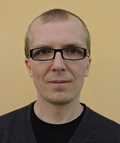
Nano-ions in solution: new worlds between small ions and nanosized building blocks
by prof. RNDr., Ph.D., Pavel Matějíček
Recent literature on the solution behavior of ions of nanometer size and of irregular structure will be reviewed. Small inorganic ions are usually depicted as balls differing in size, charge density and thickness of the solvation shell. In contrast, even simple ions exhibit complex solution behavior as manifested by Hofmeister series. If the structure of ions is slightly more complicated such as in the case of SCN- and guanidinium+, the ions undergo like-charge pairing and are surface active. The ions, size of which is in the nanometer scale like anionic boron cluster compounds (ABCCs) and polyoxometalates (POMs), behave in some aspect like surfactants and can co-assemble with polymers leading to supramolecular nanomaterials.
at Faculty of Science, Hlavova 8, Prague 2, in lecture hall CH3
Oct. 30, 2019 - (14:00 )
Recent literature on the solution behavior of ions of nanometer size and of irregular structure will be reviewed. Small inorganic ions are usually depicted as balls differing in size, charge density and thickness of the solvation shell. In contrast, even simple ions exhibit complex solution behavior as manifested by Hofmeister series. If the structure of ions is slightly more complicated such as in the case of SCN- and guanidinium+, the ions undergo like-charge pairing and are surface active. The ions, size of which is in the nanometer scale like anionic boron cluster compounds (ABCCs) and polyoxometalates (POMs), behave in some aspect like surfactants and can co-assemble with polymers leading to supramolecular nanomaterials.
at Faculty of Science, Hlavova 8, Prague 2, in lecture hall CH3Wednesday, 6 November 2019

Biomolecular NMR - an essential tool for drug discovery
by Ph.D., Ing., Václav Veverka
Several key stages in the knowledge-based drug discovery process require detailed information about targeted systems at the molecular level. This includes validation of selected proteins or protein-protein interactions and assessment of their druggability, identification of suitable small molecules with the desired inhibitory activity and detailed structural characterization of the sites of intervention. NMR spectroscopy was for a long time overshadowed by X-ray crystallography in drug discovery but with a recent shift in target selection towards more challenging protein-protein interactions it bounced back on stage. The particular strengths of the technique will be introduced from the biologists’ perspective and the benefits for drug discovery illustrated in the context of an actual epigenetic target.
at Faculty of Science, Hlavova 8, Prague 2, in lecture hall CH3
Nov. 6, 2019 (14:00 – 15:00 )
Several key stages in the knowledge-based drug discovery process require detailed information about targeted systems at the molecular level. This includes validation of selected proteins or protein-protein interactions and assessment of their druggability, identification of suitable small molecules with the desired inhibitory activity and detailed structural characterization of the sites of intervention. NMR spectroscopy was for a long time overshadowed by X-ray crystallography in drug discovery but with a recent shift in target selection towards more challenging protein-protein interactions it bounced back on stage. The particular strengths of the technique will be introduced from the biologists’ perspective and the benefits for drug discovery illustrated in the context of an actual epigenetic target.
at Faculty of Science, Hlavova 8, Prague 2, in lecture hall CH3Friday, 8 November 2019
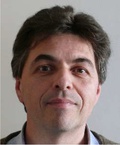
Zeolite Crystal Engineering: A Multiscale Approach
by prof., Jean-Pierre Gilson
After setting the scene of the current energy and materials transition, I will highlight the challenges facing zeolites in the future. The LCS strategy to meet these challenges, Zeolite Crystal Engineering, will then be outlined.
This strategy basically takes place at three different scales:
- Sub-nm and nm level: this is the domain of active sites & point defects (nature, location, confinement...) and microporosity
- μm level: this is the domain of the size, shape and morphology of particles, the meso- & macro-porosity...
- mm level: this is the domain of shaped bodies as zeolites are never used in commercial processes as unprocessed powders
These 3 scales will be illustrated by case studies on:
- preparation of defect-free zeolites and introduction of transition metal ions in their framework
- the mosaic structure of zeolites and the opening of inaccessible zeolite cages
- the chemical reactions taking place during the extrusion of zeolite with an alumina binder
at Faculty of Science, Hlavova 8, Prague 2, in lecture hall CH2
Nov. 8, 2019 - (13:30 )
After setting the scene of the current energy and materials transition, I will highlight the challenges facing zeolites in the future. The LCS strategy to meet these challenges, Zeolite Crystal Engineering, will then be outlined.
This strategy basically takes place at three different scales:
- Sub-nm and nm level: this is the domain of active sites & point defects (nature, location, confinement...) and microporosity
- μm level: this is the domain of the size, shape and morphology of particles, the meso- & macro-porosity...
- mm level: this is the domain of shaped bodies as zeolites are never used in commercial processes as unprocessed powders
These 3 scales will be illustrated by case studies on:
- preparation of defect-free zeolites and introduction of transition metal ions in their framework
- the mosaic structure of zeolites and the opening of inaccessible zeolite cages
- the chemical reactions taking place during the extrusion of zeolite with an alumina binder
Wednesday, 20 November 2019
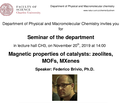
Magnetic properties of MOFs, Zeolites and MXenes
by Ph.D., Federico Brivio
Federico Brivio graduate in Material Science at the Universita’ di Milano Bicocca. After a brief experience as a teacher, he completed his PhD at the University of Bath (UK) with prof. Aron Walsh. Hi spent one year at
the University of Cambridge before joining the research group of Prof. Petr Nachtigall in Charles University.
His research revolves around different applications of the Density Functional Theory and, more in general, computational methods to calculate materials properties ab-initio. He worked on both molecular and crystalline systems, joining his expertises in the approach of complex systems such as hybrid perovskites and zeolites.
Nov. 20, 2019 - (14:00 )
Federico Brivio graduate in Material Science at the Universita’ di Milano Bicocca. After a brief experience as a teacher, he completed his PhD at the University of Bath (UK) with prof. Aron Walsh. Hi spent one year at
the University of Cambridge before joining the research group of Prof. Petr Nachtigall in Charles University.
His research revolves around different applications of the Density Functional Theory and, more in general, computational methods to calculate materials properties ab-initio. He worked on both molecular and crystalline systems, joining his expertises in the approach of complex systems such as hybrid perovskites and zeolites.
in lecture hall CH3Wednesday, 27 November 2019

PhD student presentations
1st year internal PhD students will present their research activity
- Karolína Honzejková. Structural characterization of protein complexes involved in apoptosis.
- Zuzana Kadlecová. Study of retention and separation mechanism in mixed-mode chromatography; application for protein digestion products separation.
- Sarra Abdi. ADORable zeolites: addressing structure-activity relationships for porous heterogeneous acid catalysts.
- Ang Li. Rational synthesis of zeolitic materials and advanced microscopy characterization.
- Ondřej Veselý. Synthesis of novel zeolite materials using the ADOR method.
- David Šorm. Hyper-Cross-Linked Organometallic Porous Polymers.
at Faculty of Science, Hlavova 8, Prague 2, in lecture hall CH3
Nov. 27, 2019 - (14:00 )
1st year internal PhD students will present their research activity
- Karolína Honzejková. Structural characterization of protein complexes involved in apoptosis.
- Zuzana Kadlecová. Study of retention and separation mechanism in mixed-mode chromatography; application for protein digestion products separation.
- Sarra Abdi. ADORable zeolites: addressing structure-activity relationships for porous heterogeneous acid catalysts.
- Ang Li. Rational synthesis of zeolitic materials and advanced microscopy characterization.
- Ondřej Veselý. Synthesis of novel zeolite materials using the ADOR method.
- David Šorm. Hyper-Cross-Linked Organometallic Porous Polymers.
Wednesday, 19 February 2020

Next seminar will be scheduled on 19.2.2020
There are no seminars scheduled in the semester break. 13.1.2020 - 14.2.2020. Next seminar will be scheduled on 19.2.2020
Feb. 19, 2020 -
There are no seminars scheduled in the semester break. 13.1.2020 - 14.2.2020. Next seminar will be scheduled on 19.2.2020
Wednesday, 4 March 2020

1st year Master Students presentations
1st year Master Students will present short (10 min) presentations on their ideas and preliminary results of their theses
- Daniel Mildner
- Čopák Jakub
- Duchoslav Vojtěch
- Gucklhorn David
at Faculty of Science, Hlavova 8, Prague 2, in lecture hall CH3
March 4, 2020 - (14:00 )
1st year Master Students will present short (10 min) presentations on their ideas and preliminary results of their theses
- Daniel Mildner
- Čopák Jakub
- Duchoslav Vojtěch
- Gucklhorn David
Wednesday, 25 March 2020

1st year Master Students presentations
1st year Master Students will present short (10 min) presentations on their ideas and preliminary results of their theses
- Koupilová Nikola
- Kožíšek Jan
- Kryštůfek Robin
- Lorinčíková Kateřina
- Novotný Tomáš
March 25, 2020 - (14:00 )
1st year Master Students will present short (10 min) presentations on their ideas and preliminary results of their theses
- Koupilová Nikola
- Kožíšek Jan
- Kryštůfek Robin
- Lorinčíková Kateřina
- Novotný Tomáš
Wednesday, 1 April 2020

1st year Master Students presentations
1st year Master Students will present short (10 min) presentations on their ideas and preliminary results of their theses
- Rakhimbekova Anastasia
- Šulc Josef
- Zhukouskaya Hanna
- Kaiserová Tereza
April 1, 2020 - (14:00 )
1st year Master Students will present short (10 min) presentations on their ideas and preliminary results of their theses
- Rakhimbekova Anastasia
- Šulc Josef
- Zhukouskaya Hanna
- Kaiserová Tereza
Tuesday, 8 September 2020

Workshop on Low Dimensional Materials
It is our pleasure to invite you to participate in the "Workshop on Low Dimensional Materials".
Details and registration are there.
Liblice Castle, Czech Republic
Sept. 8, 2020 - Sept. 11, 2020
It is our pleasure to invite you to participate in the "Workshop on Low Dimensional Materials".
Details and registration are there.
Liblice Castle, Czech RepublicTuesday, 3 November 2020

Workshop on Water in Zeolites
An international workshop is being planned with the objective of bringing together world-known experts from the field of heterogeneous catalysis to discuss fundamental aspects about the interaction of liquid water in zeolite catalysts. This is a topic of profound consequences in several catalytic processes for chemical, petrochemical, and oil refining industries.
Details and registration are there
Liblice Castle, Czech Republic
Nov. 3, 2020 - Nov. 6, 2020
An international workshop is being planned with the objective of bringing together world-known experts from the field of heterogeneous catalysis to discuss fundamental aspects about the interaction of liquid water in zeolite catalysts. This is a topic of profound consequences in several catalytic processes for chemical, petrochemical, and oil refining industries.
Details and registration are there
Liblice Castle, Czech RepublicMonday, 30 November 2020

School of Catalysis – Experimental Techniques in Catalysis
After the successful "School of Catalysis" in May 2019, which has been devoted to general aspects of catalysis, for the current edition we plan to focus in more detail on some experimental techniques applied in catalysis and particular aspects of catalysis (homogeneous, heterogeneous, industrial).
Details and registration are there.
Liblice Castle, Czech Republic
Nov. 30, 2020 - Dec. 2, 2020
After the successful "School of Catalysis" in May 2019, which has been devoted to general aspects of catalysis, for the current edition we plan to focus in more detail on some experimental techniques applied in catalysis and particular aspects of catalysis (homogeneous, heterogeneous, industrial).
Details and registration are there.
Liblice Castle, Czech RepublicWednesday, 3 February 2021

Structural studies of 14-3-3 protein complexes and their stabilization by small molecule compounds (PhD student presentation)
by M.Sc., Domenico Lentini Santo
Protein-protein interactions (PPIs) play a crucial role in almost all biological processes. Many proteins require a number of dynamic interactions with other proteins and/or biomolecules to function. A detailed insight into PPIs is essential for a complete understanding of the processes mediated by these protein complexes. Because many PPIs are involved in disease-related signaling pathways, such PPIs are important targets for pharmaceutical interventions, especially in situations where a more conventional target (e.g. the active site of an enzyme, the binding site of a receptor) cannot be used. My doctoral project focused on 14-3-3 proteins, a family of eukaryotic adaptor and scaffolding proteins involved in the regulation of many signaling pathways. The main aim was to structurally characterize 14-3-3 protein complexes with selected binding
partners and investigate their stabilization by small molecule compounds.
Organizers: Prof. Tomáš Obšil, Prof. Jiří Čejka, Dr. Jan Přech
Feb. 3, 2021 (14:00 – 15:30 )
Protein-protein interactions (PPIs) play a crucial role in almost all biological processes. Many proteins require a number of dynamic interactions with other proteins and/or biomolecules to function. A detailed insight into PPIs is essential for a complete understanding of the processes mediated by these protein complexes. Because many PPIs are involved in disease-related signaling pathways, such PPIs are important targets for pharmaceutical interventions, especially in situations where a more conventional target (e.g. the active site of an enzyme, the binding site of a receptor) cannot be used. My doctoral project focused on 14-3-3 proteins, a family of eukaryotic adaptor and scaffolding proteins involved in the regulation of many signaling pathways. The main aim was to structurally characterize 14-3-3 protein complexes with selected binding
partners and investigate their stabilization by small molecule compounds.
Organizers: Prof. Tomáš Obšil, Prof. Jiří Čejka, Dr. Jan Přech
Wednesday, 10 February 2021

Coupling of binding and conformational equilibria in weak polyelectrolytes. Dynamics and charge regulation of biopolymers in crowded media.
by Dr., Pablo Miguel Blanco Andrés
Dr. Andrés, one of our new post-docs, will present results obtained in his PhD thesis. The talk will discuss conformational, ionization, elastic and diffusive properties of weak polyelectrolytes and biopolymers using theoretical and computational simulation techniques. On the one hand, a complex interplay of the ionization and conformational degrees of freedom of weak polyelectrolytes will be addressed and a new theoretical model of a weak polyelectrolyte will be introduced. An effect of charge regulation on its elastic response using constant pH Monte Carlo simulations will be shown as well. On the other hand, the diffusive and ionization properties of biopolymers in solution with a high concentration of macromolecules, known as macromolecular crowding, using Brownian Dynamics and constant pH simulations respectively will be also addressed.
Organizers: Prof. Tomáš Obšil, Prof. Jiří Čejka, Dr. Jan Přech
Feb. 10, 2021 (14:00 – 15:00 )
Dr. Andrés, one of our new post-docs, will present results obtained in his PhD thesis. The talk will discuss conformational, ionization, elastic and diffusive properties of weak polyelectrolytes and biopolymers using theoretical and computational simulation techniques. On the one hand, a complex interplay of the ionization and conformational degrees of freedom of weak polyelectrolytes will be addressed and a new theoretical model of a weak polyelectrolyte will be introduced. An effect of charge regulation on its elastic response using constant pH Monte Carlo simulations will be shown as well. On the other hand, the diffusive and ionization properties of biopolymers in solution with a high concentration of macromolecules, known as macromolecular crowding, using Brownian Dynamics and constant pH simulations respectively will be also addressed.
Organizers: Prof. Tomáš Obšil, Prof. Jiří Čejka, Dr. Jan Přech
Wednesday, 24 February 2021

Ph.D. students present the result of their dissertation theses.
Finishing Ph.D. students Jin Zhang and Qiudi Yue from Prof. Čejka group are going to present results of their dissertation theses.
Organizers: Prof. Tomáš Obšil, Prof. Jiří Čejka, Dr. Jan Přech
Feb. 24, 2021 (14:00 – 15:30 )
Finishing Ph.D. students Jin Zhang and Qiudi Yue from Prof. Čejka group are going to present results of their dissertation theses.
Organizers: Prof. Tomáš Obšil, Prof. Jiří Čejka, Dr. Jan Přech
Tuesday, 2 March 2021
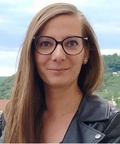
Seminar: In situ FT-IR studies on formation of H-bonded alcohol adducts and their role in the mechanism of cyclopentanol etherification
by Ph.D., Kinga Maria Gołąbek
Join Zoom Meeting: link
Mechanistic studies play a key role of understanding how specified reaction conditions and/or properties of the catalyst itself can be tuned to optimize catalyst activity and selectivity towards desired product of particular reaction. The presentation will focus on FT-IR qualitative analysis of H-bonded methanol/cyclopentanol adducts formed by interaction with acid sites (more/less accessible for the substrate) located in MFI zeolites and their role in the mechanism of cyclopentanol etherification.
March 2, 2021 - (11:30 )
Join Zoom Meeting: link
Mechanistic studies play a key role of understanding how specified reaction conditions and/or properties of the catalyst itself can be tuned to optimize catalyst activity and selectivity towards desired product of particular reaction. The presentation will focus on FT-IR qualitative analysis of H-bonded methanol/cyclopentanol adducts formed by interaction with acid sites (more/less accessible for the substrate) located in MFI zeolites and their role in the mechanism of cyclopentanol etherification.
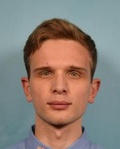
Seminar: Reverse ADOR Approach: Reconstruction of UTL zeolite from layered IPC-1P material
by Ph.D., Ondřej Veselý
Join Zoom Meeting: link
The Assembly-Disassembly-Organisation-Reassembly (ADOR) transformation of the UTL zeolite has led to the discovery of numerous new zeolite structures (PCR, OKO, *PCS, IPC-7, IPC-9, IPC-10); however, these daughter structures have only smaller pore size than the parent UTL. We have developed a method to artificially increase the spacing of layered intermediate IPC-1P by intercalating organic species and to reconstruct the double four rings (D4R) between layers, thus transforming IPC-1P back into the parent UTL zeolite.
March 2, 2021 - (11:30 )
Join Zoom Meeting: link
The Assembly-Disassembly-Organisation-Reassembly (ADOR) transformation of the UTL zeolite has led to the discovery of numerous new zeolite structures (PCR, OKO, *PCS, IPC-7, IPC-9, IPC-10); however, these daughter structures have only smaller pore size than the parent UTL. We have developed a method to artificially increase the spacing of layered intermediate IPC-1P by intercalating organic species and to reconstruct the double four rings (D4R) between layers, thus transforming IPC-1P back into the parent UTL zeolite.

CUCAM seminar
Charles University Centre of Advanced Materials (CUCAM) invites you for an online seminar on March 2nd, 2021 at 11:30. Kinga Maria Gołąbek and Ondřej Veselý will present their research.
Join Zoom Meeting: https://cuni-cz.zoom.us/j/92109932976
Organizers: Prof. Jiří Čejka, Dr. Jan Přech
March 2, 2021 - (11:30 )
Charles University Centre of Advanced Materials (CUCAM) invites you for an online seminar on March 2nd, 2021 at 11:30. Kinga Maria Gołąbek and Ondřej Veselý will present their research.
Join Zoom Meeting: https://cuni-cz.zoom.us/j/92109932976
Organizers: Prof. Jiří Čejka, Dr. Jan Přech
Wednesday, 3 March 2021

Department of Physical and Macromolecular Chemistry invites you for an online seminar
Program
-
Encapsulation of metal nanoparticles into zeolite frameworks (speaker: Yuyan Zhang (4 th year PhD student))
Encapsulation of metal nanoparticles (NPs) into zeolites is a promising way to design high efficiency nanocatalysts. However, the post-synthetic method causes the inhomogeneous dispersion of metal NPs. My Ph.D work mainly focus on using the 2D to 3D zeolite transformation method and co-crystallization strategy to encapsulate metal NPs into the pores and channels of zeolites. - Short presentations of 1 st year PhD students
Hongtao Cai (supervisor: Doc. Miroslav Štěpánek)
Sebastian Pineda Pineda (supervisor: Dr. Peter Košovan )
Organizers: Prof. Tomáš Obšil, Prof. Jiří Čejka, Dr. Jan Přech
March 3, 2021 - (14:00 )
Program
-
Encapsulation of metal nanoparticles into zeolite frameworks (speaker: Yuyan Zhang (4 th year PhD student))
Encapsulation of metal nanoparticles (NPs) into zeolites is a promising way to design high efficiency nanocatalysts. However, the post-synthetic method causes the inhomogeneous dispersion of metal NPs. My Ph.D work mainly focus on using the 2D to 3D zeolite transformation method and co-crystallization strategy to encapsulate metal NPs into the pores and channels of zeolites. - Short presentations of 1 st year PhD students
Hongtao Cai (supervisor: Doc. Miroslav Štěpánek)
Sebastian Pineda Pineda (supervisor: Dr. Peter Košovan )
Organizers: Prof. Tomáš Obšil, Prof. Jiří Čejka, Dr. Jan Přech
Wednesday, 17 March 2021
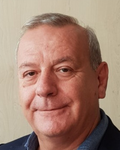
Online seminar: Carbon Capture and Utilization Technologies Creating Value from the Emissions
by , Dr. Roberto Millini
Carbon dioxide (CO2) is a major contributor to climate change, with total emissions amounting to 36 Gt/y. To contrast climate change, which in turn is caused by the progressive increase in the earth's average temperature, it is necessary to implement all actions aimed at reducing CO2 and other greenhouse gas emissions, so as to achieve the "net-zero emissions" target well before the end of the 21st century.
These actions concern, among others, the improvement of energy efficiency, the expansion of renewable energy sources, fuel switching. Another important contribution is given by the capture of CO2 emitted by important industrial sectors (e.g. steel, cement production, chemical and refining industries, power generation) and its management through geological sequestration (CCS) or utilization (CCU). It is precisely on CCU options that attention is being focused as CO2 can be considered a valuable commodity to produce several important products and materials of common use. Indeed, new chemical pathways that involve the transformation of CO2 into fuels, chemicals and construction materials are widely studied both in academia and industry.
These transformations, however, are energy intensive as CO2 is, de facto, the "spent" form of carbon from which all the energy has been extracted. This opens up a whole series of questions relating to the actual climatic benefits that these utilization pathways can provide.
In this lecture, the main technological CCU pathways will be briefly examined, highlighting their advantages and limits and their possible contribution to reducing CO2 emissions.
March 17, 2021 - (14:00 )
Carbon dioxide (CO2) is a major contributor to climate change, with total emissions amounting to 36 Gt/y. To contrast climate change, which in turn is caused by the progressive increase in the earth's average temperature, it is necessary to implement all actions aimed at reducing CO2 and other greenhouse gas emissions, so as to achieve the "net-zero emissions" target well before the end of the 21st century.
These actions concern, among others, the improvement of energy efficiency, the expansion of renewable energy sources, fuel switching. Another important contribution is given by the capture of CO2 emitted by important industrial sectors (e.g. steel, cement production, chemical and refining industries, power generation) and its management through geological sequestration (CCS) or utilization (CCU). It is precisely on CCU options that attention is being focused as CO2 can be considered a valuable commodity to produce several important products and materials of common use. Indeed, new chemical pathways that involve the transformation of CO2 into fuels, chemicals and construction materials are widely studied both in academia and industry.
These transformations, however, are energy intensive as CO2 is, de facto, the "spent" form of carbon from which all the energy has been extracted. This opens up a whole series of questions relating to the actual climatic benefits that these utilization pathways can provide.
In this lecture, the main technological CCU pathways will be briefly examined, highlighting their advantages and limits and their possible contribution to reducing CO2 emissions.
Tuesday, 13 April 2021

Industrial Production of Catalysts
by , Dr. Raimond Bonné
The lecture is going to cover following aspects of industrial manufacturing of catalysts:
- Catalysis
- Economics
- History & development of catalyst production
- From lab to plant
- Industrial manufacturing of catalysts
- Manufacturing routes
- Parameters & process control
- Process steps
- Additional factors
The lecture is going be about 2 h long incl. break. Students are advised to go through
appropriate chapter of the Handbook of Porous Materials vol.1 cited under the link below or a
similar literature on catalyst manufacturing.
https://mailchi.mp/wspc/introductory-offer-handbook-of-porous-materials-synthesis-
properties-modeling-and-key-applications
April 13, 2021 (14:00 – 16:00 )
The lecture is going to cover following aspects of industrial manufacturing of catalysts:
- Catalysis
- Economics
- History & development of catalyst production
- From lab to plant
- Industrial manufacturing of catalysts
- Manufacturing routes
- Parameters & process control
- Process steps
- Additional factors
The lecture is going be about 2 h long incl. break. Students are advised to go through
appropriate chapter of the Handbook of Porous Materials vol.1 cited under the link below or a
similar literature on catalyst manufacturing.
https://mailchi.mp/wspc/introductory-offer-handbook-of-porous-materials-synthesis-
properties-modeling-and-key-applications
Wednesday, 14 April 2021
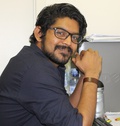
Understanding the charge regulation in ampholytes, using simulations and experiments
by M.Sc., Raju Lunkad
Weak ampholytes are ubiquitous in nature and commonly found in artificial pH-responsive systems. However, our limited understanding of their charge regulation and the lack of predictive capabilities hinder the bottom-up design of such systems. In this talk I will present my PhD work, mainly focused on computer simulations of charge regulation in weak ampholytes, such as peptides and polyzwitterions. We developed a simulation model that quantitatively predicts the acid-base behaviour of real ampholytes when compared with experiments. In addition to that, we used this model to predict adsorption of short peptides to star-like polyelectrolytes at various pH values.
Ultimately, such models could be used to understand the complex coupling between the ionisation and conformation in flexible polyampholytes, including synthetic polymers, biomimetic materials and biological molecules, such as intrinsically disordered proteins, whose function can be regulated by changes in the pH.
Organizers: Prof. Tomáš Obšil, Prof. Jiří Čejka, Dr. Jan Přech
April 14, 2021 - (14:00 )
Weak ampholytes are ubiquitous in nature and commonly found in artificial pH-responsive systems. However, our limited understanding of their charge regulation and the lack of predictive capabilities hinder the bottom-up design of such systems. In this talk I will present my PhD work, mainly focused on computer simulations of charge regulation in weak ampholytes, such as peptides and polyzwitterions. We developed a simulation model that quantitatively predicts the acid-base behaviour of real ampholytes when compared with experiments. In addition to that, we used this model to predict adsorption of short peptides to star-like polyelectrolytes at various pH values.
Ultimately, such models could be used to understand the complex coupling between the ionisation and conformation in flexible polyampholytes, including synthetic polymers, biomimetic materials and biological molecules, such as intrinsically disordered proteins, whose function can be regulated by changes in the pH.
Organizers: Prof. Tomáš Obšil, Prof. Jiří Čejka, Dr. Jan Přech
Wednesday, 21 April 2021

Online seminar: Short presentations of 1st year Mgr. students from the Department of Physical and Macromolecular Chemistry
- Bc. Pavlína Marková (supervisor: Ing. Mariusz M. Uchman, Ph.D.)
- Bc. Jakub Martinka (supervisor: doc. Dr. rer. nat. Jiří Pittner, DSc.)
- Bc. Daniel Mildner (supervisor: RNDr. Ivo Starý, CSc.)
- Bc. Tereza Ulrichová (supervisor: Mgr. Martin Hrubý, Ph.D., DSc.)
- Bc. Tomáš Blovský (supervisor: doc. Ing. Zuzana Limpouchová, CSc.)
April 21, 2021 - (14:00 )
- Bc. Pavlína Marková (supervisor: Ing. Mariusz M. Uchman, Ph.D.)
- Bc. Jakub Martinka (supervisor: doc. Dr. rer. nat. Jiří Pittner, DSc.)
- Bc. Daniel Mildner (supervisor: RNDr. Ivo Starý, CSc.)
- Bc. Tereza Ulrichová (supervisor: Mgr. Martin Hrubý, Ph.D., DSc.)
- Bc. Tomáš Blovský (supervisor: doc. Ing. Zuzana Limpouchová, CSc.)
Wednesday, 28 April 2021

Online seminar: Short presentations of 1st year Mgr. students from the Department of Physical and Macromolecular Chemistry
- Bc. Soňa Mesíková (supervisor: doc. RNDr. Pavel Matějíček, Ph.D.)
- Bc. Tereza Benešová (supervisor: Christopher J. Heard, Ph.D.)
- Bc. Petr Golis (supervisor: Mgr. Mariya Shamzhy, Ph.D.)
- Bc. Pavel Grussmann (supervisor: Ing. Jan Přech, Ph.D.)
- Bc. Veronika Ondriečková (supervisor: Ing. Zdeněk Starý, Ph.D.)
April 28, 2021 - (14:00 )
- Bc. Soňa Mesíková (supervisor: doc. RNDr. Pavel Matějíček, Ph.D.)
- Bc. Tereza Benešová (supervisor: Christopher J. Heard, Ph.D.)
- Bc. Petr Golis (supervisor: Mgr. Mariya Shamzhy, Ph.D.)
- Bc. Pavel Grussmann (supervisor: Ing. Jan Přech, Ph.D.)
- Bc. Veronika Ondriečková (supervisor: Ing. Zdeněk Starý, Ph.D.)
Wednesday, 5 May 2021
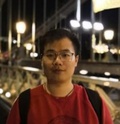
Theoretical Investigation of Low-dimensional Magnetic Materials
by , Shuo Li
The primary motivation of spintronics and valleytronics is to identify spin and valley systems that can offer information storage and processing advantages that complement or surpass modern charge-based semiconductor technologies.
Our works mainly focus on to explore and design electronic and magnetic properties of new low-dimensional (2D and 1D) magnetic materials with high intrinsic spin and valley polarizations for their potential applications of spintronics and valleytronics.
May 5, 2021 - (14:00 )
The primary motivation of spintronics and valleytronics is to identify spin and valley systems that can offer information storage and processing advantages that complement or surpass modern charge-based semiconductor technologies.
Our works mainly focus on to explore and design electronic and magnetic properties of new low-dimensional (2D and 1D) magnetic materials with high intrinsic spin and valley polarizations for their potential applications of spintronics and valleytronics.
Wednesday, 19 May 2021

Theoretical Investigation of Zeolite Hydrolysis and Properties
by , Mengting Jin
speaker: Mengting Jin (4th year PhD student)
Considering the significance of zeolite applications at the industrial level, a thorough understanding of zeolite (in)stability under aqueous conditions has been identified as a very important problem in catalysis and zeolite science.
Our work is focused on determining the mechanisms of zeolite hydrolysis at the atomic scale under realistic conditions. We discovered how zeolite hydrolysis is affected by water loading, temperature, alkali conditions, Ge loading, and we produced accurate data that fits quantitatively with experiments. These results help for a better understanding of zeolites catalyst synthesis.
link to zoom meeting https://cuni-cz.zoom.us/j/96854165919 (note: the link will be valid for all upcoming seminars this academic year)
May 19, 2021 - (14:00 )
speaker: Mengting Jin (4th year PhD student)
Considering the significance of zeolite applications at the industrial level, a thorough understanding of zeolite (in)stability under aqueous conditions has been identified as a very important problem in catalysis and zeolite science.
Our work is focused on determining the mechanisms of zeolite hydrolysis at the atomic scale under realistic conditions. We discovered how zeolite hydrolysis is affected by water loading, temperature, alkali conditions, Ge loading, and we produced accurate data that fits quantitatively with experiments. These results help for a better understanding of zeolites catalyst synthesis.
link to zoom meeting https://cuni-cz.zoom.us/j/96854165919 (note: the link will be valid for all upcoming seminars this academic year)
Wednesday, 26 May 2021

Theoretical insights into Zeolite-encapsulated Sub-nanometer metals
by , Dianwei Hou
Dianwei Hou (4th year PhD student)
Precious metals are widely used in the chemical industry. Due to limited reserves and high prices, it is necessary to make effective use of every atom. Nowadays, it is possible to produce single atom noble metal catalysts, despite their low resistance against sintering. However, the mechanisms by which atoms are stabilized to prevent migration and growth are not clear.
We study the stability and migration properties of noble metal atoms and small clusters confined within zeolites via global structure optimization, molecular dynamics, and kinetic Monto Carlo simulations. We identify the effects of adsorbates, temperature, framework heteroatoms, and metal type.
link to zoom meeting https://cuni-cz.zoom.us/j/96854165919 (note: the link will be valid for all upcoming seminars this academic year)
May 26, 2021 - (14:00 )
Dianwei Hou (4th year PhD student)
Precious metals are widely used in the chemical industry. Due to limited reserves and high prices, it is necessary to make effective use of every atom. Nowadays, it is possible to produce single atom noble metal catalysts, despite their low resistance against sintering. However, the mechanisms by which atoms are stabilized to prevent migration and growth are not clear.
We study the stability and migration properties of noble metal atoms and small clusters confined within zeolites via global structure optimization, molecular dynamics, and kinetic Monto Carlo simulations. We identify the effects of adsorbates, temperature, framework heteroatoms, and metal type.
link to zoom meeting https://cuni-cz.zoom.us/j/96854165919 (note: the link will be valid for all upcoming seminars this academic year)
Wednesday, 22 September 2021

CUCAM Annual Meeting – Sep 22nd-23rd 2021
Sept. 22, 2021 - Sept. 23, 2021 (17:30 – 13:00 )
Wednesday, 20 October 2021

From Amino Acids to Proteins - From Simplicity to Complexity.
by RNDr., CSc., Jiří Vondrášek
Department of Physical and Macromolecular Chemistry invites you for a seminar and a Professor public lecture
Title: From Amino Acids to Proteins- from Simplicity to Complexity
speaker: Assoc. Prof. Jiri Vondrasek, Ph.D. (Institute of Organic Chemistry and Biochemistry, Czech Academy of Sciences)
Oct. 20, 2021 - (14:00 )
Department of Physical and Macromolecular Chemistry invites you for a seminar and a Professor public lecture
Title: From Amino Acids to Proteins- from Simplicity to Complexity
speaker: Assoc. Prof. Jiri Vondrasek, Ph.D. (Institute of Organic Chemistry and Biochemistry, Czech Academy of Sciences)
Hlavova 8, lecture room CH3Wednesday, 27 October 2021

Hybrid Nanostructures Containing Boron Compounds
by M.Sc., Jianwei Li
Jianwei Li is finishing Ph.D. student under supervision of doc. RNDr. Matějíček Pavel, Ph.D. Department of Physical and Macromolecular Chemistry, Faculty of Science
Boron cluster compounds (BCCs) are inorganic polyhedral structures. Incorporation of BCCs into polymers is extensively investigated in the field of energy storage, biomedicine and luminochromic materials.
Jianwei’s Ph.D. works mainly focus on preparing novel BCC-containing polymeric materials via covalent bonding or noncovalent interactions. The tunable nanostructures can serve as drug cargo in Boron neutron capture therapy or polyelectrolytes in Solid-state batteries.
The talk will be accessible also via Zoom: https://cuni-cz.zoom.us/j/94758328674
Oct. 27, 2021 - (14:00 )
Jianwei Li is finishing Ph.D. student under supervision of doc. RNDr. Matějíček Pavel, Ph.D. Department of Physical and Macromolecular Chemistry, Faculty of Science
Boron cluster compounds (BCCs) are inorganic polyhedral structures. Incorporation of BCCs into polymers is extensively investigated in the field of energy storage, biomedicine and luminochromic materials.
Jianwei’s Ph.D. works mainly focus on preparing novel BCC-containing polymeric materials via covalent bonding or noncovalent interactions. The tunable nanostructures can serve as drug cargo in Boron neutron capture therapy or polyelectrolytes in Solid-state batteries.
The talk will be accessible also via Zoom: https://cuni-cz.zoom.us/j/94758328674
Hlavova 8, lecture room CH3Wednesday, 3 November 2021
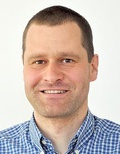
Exploring Reaction Mechanisms of Metalloproteins by Correlating Theory and Experiment
by Doc. Mgr., CSc. DSc., Lubomír Rulíšek
Nov. 3, 2021 - (14:00 )
Wednesday, 10 November 2021
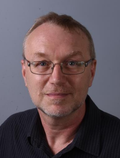
Prions, prion strains and expanding universe of prion diseases.
by doc., Ing., Ph.D., Karel Holada
Prions are unorthodox protein infectious particles devoid of coding nucleic acids and phospholipid membrane. The information needed for their propagation is enciphered in the shape of pathogenic PrPSc prion protein molecule. PrPSc has high ratio of β-sheet structures, is partially resistant to proteases and has tendency to aggregate and form amyloid fibrils. Prions propagate by physical contact of PrPSc with normal cellular prion protein (PrPC) which adopts its pathological conformation. The process is called template directed misfolding.
The significance of prion pathogenesis was boosted by increasingly accepted notion that many other neurodegenerative disorders, like Alzheimer and Parkinson disease, also utilize the mechanism of template directed misfolding to facilitate the spread of pathologic conformation of disease specific proteins within the body. Our laboratory is dealing with development and implementation of new prion diagnostic and inactivation methods.
At the beginning of the seminar a new post-doc researcher Daniel Rainer, Ph.D. from the group of heterogenous catalysis and advanced materials will be introduced to the members of the department.
Nov. 10, 2021 - (14:00 )
Prions are unorthodox protein infectious particles devoid of coding nucleic acids and phospholipid membrane. The information needed for their propagation is enciphered in the shape of pathogenic PrPSc prion protein molecule. PrPSc has high ratio of β-sheet structures, is partially resistant to proteases and has tendency to aggregate and form amyloid fibrils. Prions propagate by physical contact of PrPSc with normal cellular prion protein (PrPC) which adopts its pathological conformation. The process is called template directed misfolding.
The significance of prion pathogenesis was boosted by increasingly accepted notion that many other neurodegenerative disorders, like Alzheimer and Parkinson disease, also utilize the mechanism of template directed misfolding to facilitate the spread of pathologic conformation of disease specific proteins within the body. Our laboratory is dealing with development and implementation of new prion diagnostic and inactivation methods.
At the beginning of the seminar a new post-doc researcher Daniel Rainer, Ph.D. from the group of heterogenous catalysis and advanced materials will be introduced to the members of the department.
Hlavova 8, lecture room CH3Wednesday, 24 November 2021
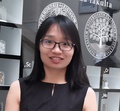
NMR Simulation of Zeolites: An Approach combining ab initio Simulations and Machine Learning
by M.Sc., Chen Lei
Chen Lei is finishing Ph.D. student under supervision of Prof. RNDr. Petr Nachtigall, Ph.D. Department of Physical and Macromolecular Chemistry, Faculty of Science
Solid state 27Al NMR (ssNMR) is an important technique to characterize the structure of catalytic sites in zeolites. To improve the interpretation of spectra, we developed a model based on DFT calculations to clarify the role of experimental conditions, lattice dynamic and local structure. We described the behaviour of a few zeolites accurately with the support of machine learning (ML), which can potentially simplify NMR calculation of zeolites.
Seminar will be available via Zoom: https://cuni-cz.zoom.us/j/94758328674
Nov. 24, 2021 - (14:00 )
Chen Lei is finishing Ph.D. student under supervision of Prof. RNDr. Petr Nachtigall, Ph.D. Department of Physical and Macromolecular Chemistry, Faculty of Science
Solid state 27Al NMR (ssNMR) is an important technique to characterize the structure of catalytic sites in zeolites. To improve the interpretation of spectra, we developed a model based on DFT calculations to clarify the role of experimental conditions, lattice dynamic and local structure. We described the behaviour of a few zeolites accurately with the support of machine learning (ML), which can potentially simplify NMR calculation of zeolites.
Seminar will be available via Zoom: https://cuni-cz.zoom.us/j/94758328674
Hlavova 8 (lecture room CH3)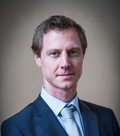
Mechanochemistry for sustainable synthesis of framework materials
by Ph.D., Daniel Rainer
Mechanochemical methods in synthesis chemistry help to alleviate concerns regarding sustainability, ecological considerations, and resource efficiency. Their success in the field of MOFs (metal-organic frameworks) has inspired us to investigate possibilities for production of sodium coordination polymers as well as zeolites with improved synthesis conditions compared to traditional routes.
Seminar will be available via Zoom: https://cuni-cz.zoom.us/j/94758328674
Nov. 24, 2021 - (14:00 )
Mechanochemical methods in synthesis chemistry help to alleviate concerns regarding sustainability, ecological considerations, and resource efficiency. Their success in the field of MOFs (metal-organic frameworks) has inspired us to investigate possibilities for production of sodium coordination polymers as well as zeolites with improved synthesis conditions compared to traditional routes.
Seminar will be available via Zoom: https://cuni-cz.zoom.us/j/94758328674
Hlavova 8 (lecture room CH3)Wednesday, 1 December 2021
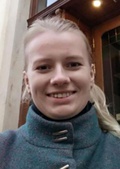
Theoretical study of branched polyelectrolytes
by M.Sc., Varvara Prokacheva
Varvara Prokacheva is finishing Ph.D. student under supervision of doc. RNDr. Filip Uhlík, Ph.D. Department of Physical and Macromolecular Chemistry, Faculty of Science
Branched polyelectrolytes are being extensively studied due to the wide range of their possible applications and interesting properties of
their natural analogs.
This work is focused on the theoretical study of conformational transitions occurring in pH-responsive polyelectrolytes upon variation in pH, salt concentration or solvent quality. That can provide guidelines for the design of smart devices, for example, nanocarriers for drug delivery or desalination agents for water treatment applications.
Seminar will be available via Zoom: https://cuni-cz.zoom.us/j/94758328674
Dec. 1, 2021 - (14:00 )
Varvara Prokacheva is finishing Ph.D. student under supervision of doc. RNDr. Filip Uhlík, Ph.D. Department of Physical and Macromolecular Chemistry, Faculty of Science
Branched polyelectrolytes are being extensively studied due to the wide range of their possible applications and interesting properties of
their natural analogs.
This work is focused on the theoretical study of conformational transitions occurring in pH-responsive polyelectrolytes upon variation in pH, salt concentration or solvent quality. That can provide guidelines for the design of smart devices, for example, nanocarriers for drug delivery or desalination agents for water treatment applications.
Seminar will be available via Zoom: https://cuni-cz.zoom.us/j/94758328674
Hlavova 8 (lecture room CH3)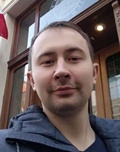
Theoretical investigation of soft matter: Representations and methods
by M.Sc., Aleksandr Kazakov
Aleksandr Kazakov is finishing Ph.D. student under supervision of doc. RNDr. Filip Uhlík, Ph.D. Department of Physical and Macromolecular Chemistry, Faculty of Science
It is desirable to have a deeper understanding of matter. There are very many representations and theoretical models in soft matter research.
Each representation brings its own benefits and drawbacks, thus it is essential to distinguish them and to use them appropriately. In this presentation I give an introduction to some of the methods and the insights I gained after their application to problems in soft matter research.
Seminar will be available via Zoom: https://cuni-cz.zoom.us/j/94758328674
Dec. 1, 2021 - (14:00 )
Aleksandr Kazakov is finishing Ph.D. student under supervision of doc. RNDr. Filip Uhlík, Ph.D. Department of Physical and Macromolecular Chemistry, Faculty of Science
It is desirable to have a deeper understanding of matter. There are very many representations and theoretical models in soft matter research.
Each representation brings its own benefits and drawbacks, thus it is essential to distinguish them and to use them appropriately. In this presentation I give an introduction to some of the methods and the insights I gained after their application to problems in soft matter research.
Seminar will be available via Zoom: https://cuni-cz.zoom.us/j/94758328674
Hlavova 8 (lecture room CH3)Wednesday, 8 December 2021
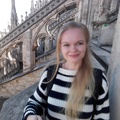
Self-assemblies based on hydrophilic polymers in aqueous media
by M.Sc., Anastasiia Fanova
Anastasiia Fanova as a finishing Ph.D. student, supervisor: Prof. RNDr. Miroslav Štěpánek, Ph.D.
Our study was devoted to experimental investigation (light scattering, SAXS/SANS, NMR and fluorescence spectroscopy) of self-assemblies based on hydrophilic polymers in aqueous media. Specifically, we focused
on two classes of systems: (i) hydrophilic polymers whose self-assembly is driven by association of terminal hydrophobic groups and (ii) double hydrophilic block polyelectrolytes whose self-assembly occurs via electrostatic complexation of polyelectrolyte blocks.
Seminar will be available via Zoom: https://cuni-cz.zoom.us/j/94758328674
Dec. 8, 2021 - (14:00 )
Anastasiia Fanova as a finishing Ph.D. student, supervisor: Prof. RNDr. Miroslav Štěpánek, Ph.D.
Our study was devoted to experimental investigation (light scattering, SAXS/SANS, NMR and fluorescence spectroscopy) of self-assemblies based on hydrophilic polymers in aqueous media. Specifically, we focused
on two classes of systems: (i) hydrophilic polymers whose self-assembly is driven by association of terminal hydrophobic groups and (ii) double hydrophilic block polyelectrolytes whose self-assembly occurs via electrostatic complexation of polyelectrolyte blocks.
Seminar will be available via Zoom: https://cuni-cz.zoom.us/j/94758328674
Hlavova 8 (lecture room CH3)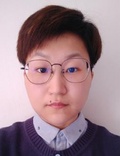
Theoretical investigation of novel catalysts
by M.Sc., Mingxiu Liu
Finishing Ph.D. student, supervisor: Prof. RNDr. Petr Nachtigall, Ph.D.
Zeolites are playing an important role in petrochemistry (as a catalyst for fluid catalytic cracking) and recently also in sustainable processes, such as biomass conversion. My doctoral work focuses on the structural determination of new zeolites, the mechanism of the desilication under hydrothermal conditions, and on the identification of the catalytic sites in acid zeolites with Lewis and Brønsted acid sites by the first-principle calculations.
Seminar will be available via Zoom: https://cuni-cz.zoom.us/j/94758328674
Dec. 8, 2021 - (14:00 )
Finishing Ph.D. student, supervisor: Prof. RNDr. Petr Nachtigall, Ph.D.
Zeolites are playing an important role in petrochemistry (as a catalyst for fluid catalytic cracking) and recently also in sustainable processes, such as biomass conversion. My doctoral work focuses on the structural determination of new zeolites, the mechanism of the desilication under hydrothermal conditions, and on the identification of the catalytic sites in acid zeolites with Lewis and Brønsted acid sites by the first-principle calculations.
Seminar will be available via Zoom: https://cuni-cz.zoom.us/j/94758328674
Hlavova 8 (lecture room CH3)Wednesday, 15 December 2021

Short presentations of 1st year internal PhD students
Speakers:
in alphabetical order of surnames
- Deborah Anima Brako-Amoafo (supervisor: Prof. RNDr. Petr Nachtigall, Ph.D.)
- Katarzyna Maria Byś (supervisor: Ing. Mariusz Marcin Uchman, Ph.D.)
- Seyedsaber Hosseini (supervisor: Mgr. Michal Mazur, Ph.D.)
- Jan Kožíšek (supervisor: RNDr. Ivana Šloufová, Ph.D.)
- Niccoló Lusiani (supervisor: RNDr. Ondřej Sedláček, Ph.D.)
- Patricia Montes Rubio (supervisor: Doc. RNDr. Miroslav Štěpánek, Ph.D.)
- Olena Payuk (supervisor: RNDr. Ondřej Sedláček, Ph.D.)
- Fateme Poorsharbaf Ghavi (supervisor: Prof. Ing. Jiří Čejka, Ph.D.)
- Vyshakh Manayath Panakkal (supervisor: RNDr. Ondřej Sedláček, Ph.D.)
Each student will give a brief 7-8 min talk, which will include
- University, topic of her/his master Thesis and main conclusions of the Master thesis (1 slide only)
- Brief introduction of her/his Ph.D. topic including motivation, ideas and plans (main part of the presentation)
- Preliminary experimental results are welcome but not obligatory
After the talk, there will be space for few brief comments/questions (2 min)
The talk must not be longer than 8 min.
Seminar will be available via Zoom: https://cuni-cz.zoom.us/j/94758328674
Dec. 15, 2021 - (14:00 )
Speakers:
in alphabetical order of surnames
- Deborah Anima Brako-Amoafo (supervisor: Prof. RNDr. Petr Nachtigall, Ph.D.)
- Katarzyna Maria Byś (supervisor: Ing. Mariusz Marcin Uchman, Ph.D.)
- Seyedsaber Hosseini (supervisor: Mgr. Michal Mazur, Ph.D.)
- Jan Kožíšek (supervisor: RNDr. Ivana Šloufová, Ph.D.)
- Niccoló Lusiani (supervisor: RNDr. Ondřej Sedláček, Ph.D.)
- Patricia Montes Rubio (supervisor: Doc. RNDr. Miroslav Štěpánek, Ph.D.)
- Olena Payuk (supervisor: RNDr. Ondřej Sedláček, Ph.D.)
- Fateme Poorsharbaf Ghavi (supervisor: Prof. Ing. Jiří Čejka, Ph.D.)
- Vyshakh Manayath Panakkal (supervisor: RNDr. Ondřej Sedláček, Ph.D.)
Each student will give a brief 7-8 min talk, which will include
- University, topic of her/his master Thesis and main conclusions of the Master thesis (1 slide only)
- Brief introduction of her/his Ph.D. topic including motivation, ideas and plans (main part of the presentation)
- Preliminary experimental results are welcome but not obligatory
After the talk, there will be space for few brief comments/questions (2 min)
The talk must not be longer than 8 min.
Seminar will be available via Zoom: https://cuni-cz.zoom.us/j/94758328674
Wednesday, 23 February 2022

Departmental seminar on 23rd February 2022
The new semester is here and with it the seminars!
The seminar speaker is 2. year Master student Tomáš Blovský from the Complex polymer systems research group.
The lecture will be followed by the departmental staff meeting.
The seminars will be held fully on-line via Zoom until further notice.
Feb. 23, 2022 (14:00 – 15:30 )
The new semester is here and with it the seminars!
The seminar speaker is 2. year Master student Tomáš Blovský from the Complex polymer systems research group.
The lecture will be followed by the departmental staff meeting.
The seminars will be held fully on-line via Zoom until further notice.
Wednesday, 2 March 2022

Departmental seminar on 2nd March 2022
This time we have four speakers, 2nd year Master students:
Petr Golis from the Heterogeneous Catalysis and Advanced Materials research group,
Pavla Benešová from the Nanomaterials modeling research group,
Jakub Martinka from Jaroslav Heyrovský institute, Czech academy of Sciences,
Pavel Grussmann from the Heterogeneous Catalysis and Advanced Materials research group.
The seminars will be held fully on-line via Zoom until further notice.
March 2, 2022 (14:00 – 15:30 )
This time we have four speakers, 2nd year Master students:
Petr Golis from the Heterogeneous Catalysis and Advanced Materials research group,
Pavla Benešová from the Nanomaterials modeling research group,
Jakub Martinka from Jaroslav Heyrovský institute, Czech academy of Sciences,
Pavel Grussmann from the Heterogeneous Catalysis and Advanced Materials research group.
The seminars will be held fully on-line via Zoom until further notice.
Wednesday, 9 March 2022

Departmental seminar on 9th March 2022
We have three speakers, 2nd year Master students:
Soňa Mesíková and Pavlína Marková from the Soft matter research group and
Tereza Ulrichová from the Institute of Macromolecular Chemistry, Czech Academy of Sciences.
The seminars will be held fully on-line via Zoom until further notice.
March 9, 2022 (14:00 – 15:30 )
We have three speakers, 2nd year Master students:
Soňa Mesíková and Pavlína Marková from the Soft matter research group and
Tereza Ulrichová from the Institute of Macromolecular Chemistry, Czech Academy of Sciences.
The seminars will be held fully on-line via Zoom until further notice.
Wednesday, 16 March 2022

Departmental seminar on 16th March 2022
We have two speakers, 1st year Master students:
Jakub Nierostek from the Soft matter theory research group
and Mikuláš Klenor from the Institute of Organic chemistry and Biochemistry, Czech Academy of Sciences.
The seminars will be held fully on-line via Zoom until further notice.
March 16, 2022 (14:00 – 15:30 )
We have two speakers, 1st year Master students:
Jakub Nierostek from the Soft matter theory research group
and Mikuláš Klenor from the Institute of Organic chemistry and Biochemistry, Czech Academy of Sciences.
The seminars will be held fully on-line via Zoom until further notice.
Wednesday, 23 March 2022

Departmental seminar on 23rd March 2022
We have four speakers, 1st year Master students:
Gabriela Chytrá and Matouš Tulpa from the Biophysical Chemistry of protein complexes research group,
Svetlana Kurucová from the Heterogenous Catalysis and Advanced Materials research group and
Pavla Trembulaková from the Institute of Organic Chemistry and Biochemistry, Czech Academy of Sciences.
The seminars will be held fully on-line via Zoom until further notice.
March 23, 2022 (14:00 – 15:30 )
We have four speakers, 1st year Master students:
Gabriela Chytrá and Matouš Tulpa from the Biophysical Chemistry of protein complexes research group,
Svetlana Kurucová from the Heterogenous Catalysis and Advanced Materials research group and
Pavla Trembulaková from the Institute of Organic Chemistry and Biochemistry, Czech Academy of Sciences.
The seminars will be held fully on-line via Zoom until further notice.
Wednesday, 30 March 2022

Departmental seminar on 30th March 2022
We have a guest, RNDr. Miroslav Šlouf, PhD, from the Institute of Macromolecular Chemistry, Czech Academy of Sciences who will speak about transmission electron mimcroscopy.
Electron diffraction is performed routinely in transmission electron microscopes (TEM), while in scanning electron microscopes (SEM) it has not been available until recently. We introduced a novel method that yields powder electron diffractograms in modern SEM microscopes equipped with pixelated detectors of transmitted electrons (pixelated STEM detectors). The method was developed in collaboration of our Institute of Macromolecular Chemistry CAS with the Institute of Scientific Instruments CAS. It was called 4D-STEM/PNBD, as it converts large 4D-STEM datasets (2D-arrays of 2D-nanobeam diffraction patterns) to a single PNBD pattern (powder nanobeam diffraction pattern, analogous to powder diffractograms from TEM). Unlike the complex 4D-STEM datasets, the 4D-STEM/PNBD patterns are easy to process even without deep crystallographic knowledge.
The seminar will take place in the lecture hall CH3 in person.
The online option remains available only on special request (e.g., for colleagues who are ill/injured or have any other important reason for which they cannot come).
March 30, 2022 (14:00 – 15:30 )
We have a guest, RNDr. Miroslav Šlouf, PhD, from the Institute of Macromolecular Chemistry, Czech Academy of Sciences who will speak about transmission electron mimcroscopy.
Electron diffraction is performed routinely in transmission electron microscopes (TEM), while in scanning electron microscopes (SEM) it has not been available until recently. We introduced a novel method that yields powder electron diffractograms in modern SEM microscopes equipped with pixelated detectors of transmitted electrons (pixelated STEM detectors). The method was developed in collaboration of our Institute of Macromolecular Chemistry CAS with the Institute of Scientific Instruments CAS. It was called 4D-STEM/PNBD, as it converts large 4D-STEM datasets (2D-arrays of 2D-nanobeam diffraction patterns) to a single PNBD pattern (powder nanobeam diffraction pattern, analogous to powder diffractograms from TEM). Unlike the complex 4D-STEM datasets, the 4D-STEM/PNBD patterns are easy to process even without deep crystallographic knowledge.
The seminar will take place in the lecture hall CH3 in person.
The online option remains available only on special request (e.g., for colleagues who are ill/injured or have any other important reason for which they cannot come).
Wednesday, 6 April 2022

Departmental seminar on 6th April 2022
We have four speakers, 1st year Master students:
Filip Steiner, Adam Škorňa, Martin Orságh from the Soft Matter research group and
Andrej Šmelko from the Polymer Synthesis and Biomaterials research group.
The seminar will take place in the lecture hall CH3 in person.
The online option remains available only on special request (e.g., for colleagues who are ill/injured or have any other important reason for which they cannot come).
April 6, 2022 (14:00 – 15:30 )
We have four speakers, 1st year Master students:
Filip Steiner, Adam Škorňa, Martin Orságh from the Soft Matter research group and
Andrej Šmelko from the Polymer Synthesis and Biomaterials research group.
The seminar will take place in the lecture hall CH3 in person.
The online option remains available only on special request (e.g., for colleagues who are ill/injured or have any other important reason for which they cannot come).
Wednesday, 13 April 2022

Departmental seminar on 13th April 2022
This time we have a habilitation lecture of RNDr. Radek Šachl, Ph.D. form the J. Heyrovský Institute of Physical Chemistry, Czech Academy of Sciences. The topic of his lecture is Nanoscale organization of lipid membranes.
Biochemical experiments performed more than 20 years ago suggested that plasma membranes of living cells are compartmentalized into small submicroscopic structures (nanodomains) having potentially relevant biological functions. Although this hypothesis has stimulated intensive research in many scientific disciplines, structural features of these nanodomains as well as their importance for the function of biological membranes remain elusive. What exactly are these nanodomains? And do they still exist in 2022?
In his habilitation lecture, Dr. Šachl will look for answers to these and other fundamental questions of membrane biophysics by introducing a powerful fluorescence microscopy technique MC-FRET developed in his laboratory. The speaker will show that this technique enabled characterization of various types of membrane nanodomains with unprecedent detail and significantly contributed to the current understanding of lipid nanodomains that are formed in simplified models of cellular membranes.
The seminar will take place in the lecture hall CH3 in person.
The online option remains available only on special request (e.g., for colleagues who are ill/injured or have any other important reason for which they cannot come).
April 13, 2022 (14:00 – 15:30 )
This time we have a habilitation lecture of RNDr. Radek Šachl, Ph.D. form the J. Heyrovský Institute of Physical Chemistry, Czech Academy of Sciences. The topic of his lecture is Nanoscale organization of lipid membranes.
Biochemical experiments performed more than 20 years ago suggested that plasma membranes of living cells are compartmentalized into small submicroscopic structures (nanodomains) having potentially relevant biological functions. Although this hypothesis has stimulated intensive research in many scientific disciplines, structural features of these nanodomains as well as their importance for the function of biological membranes remain elusive. What exactly are these nanodomains? And do they still exist in 2022?
In his habilitation lecture, Dr. Šachl will look for answers to these and other fundamental questions of membrane biophysics by introducing a powerful fluorescence microscopy technique MC-FRET developed in his laboratory. The speaker will show that this technique enabled characterization of various types of membrane nanodomains with unprecedent detail and significantly contributed to the current understanding of lipid nanodomains that are formed in simplified models of cellular membranes.
The seminar will take place in the lecture hall CH3 in person.
The online option remains available only on special request (e.g., for colleagues who are ill/injured or have any other important reason for which they cannot come).
Wednesday, 20 April 2022
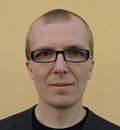
Departmental seminar on 20th April 2022
This time we have a public professorship lecture of Doc. RNDr. Pavel Matějíček, Ph.D.. The topic of his lecture is Co-assembly approach in macromolecular chemistry .
Association of block copolymers is extensively utilized in preparation of nanostructures of diverse size, shape and morphology. Besides classical self-assembly, the co-assembly approach can be used in this sense, which leads to unique hybrid nanomaterials. The use of boron cluster compounds as building blocks in co-assembly with polymers will be stressed.
The seminar will take place in the lecture hall CH3 in person.
The online option remains available only on special request (e.g., for colleagues who are ill/injured or have any other important reason for which they cannot come).
April 20, 2022 (14:00 – 15:30 )
This time we have a public professorship lecture of Doc. RNDr. Pavel Matějíček, Ph.D.. The topic of his lecture is Co-assembly approach in macromolecular chemistry .
Association of block copolymers is extensively utilized in preparation of nanostructures of diverse size, shape and morphology. Besides classical self-assembly, the co-assembly approach can be used in this sense, which leads to unique hybrid nanomaterials. The use of boron cluster compounds as building blocks in co-assembly with polymers will be stressed.
The seminar will take place in the lecture hall CH3 in person.
The online option remains available only on special request (e.g., for colleagues who are ill/injured or have any other important reason for which they cannot come).
Wednesday, 27 April 2022

Departmental seminar on 27th April 2022
We have a guest, Mgr. Jakub Mareček, PhD, from the Department of Computer Science, Czech Technical University.
The topic of his talk is: Quantum Computing: The State of the Art and Recent Developments in Quantum Variational Algorithms.
The seminar will take place in the lecture hall CH3 in person.
The online option remains available only on special request (e.g., for colleagues who are ill/injured or have any other important reason for which they cannot come).
April 27, 2022 (14:00 – 15:30 )
We have a guest, Mgr. Jakub Mareček, PhD, from the Department of Computer Science, Czech Technical University.
The topic of his talk is: Quantum Computing: The State of the Art and Recent Developments in Quantum Variational Algorithms.
The seminar will take place in the lecture hall CH3 in person.
The online option remains available only on special request (e.g., for colleagues who are ill/injured or have any other important reason for which they cannot come).
Wednesday, 4 May 2022
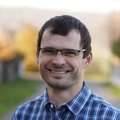
Departmental seminar on 4nd May 2022
This time we have a public habilitation lecture of RNDr. Peter Košovan, Ph.D.. The topic of his lecture is Acid-base equilibria at the nanoscale .
Acid-base equilibria are ubiquitous in Chemistry, both in everyday routine work and in research. They are taught in secondary-school courses of Chemistry and then again later, in undergraduate courses of General Chemistry, Analytical Chemistry and Physical Chemistry. The basic concepts of acid, base, pH and the degree of ionisation are well established and familiar to every chemist. Nevertheless, a lot of confusion appears when these concepts are applied to complex systems at the nanoscale, such as solutions of polyelectrolytes, polyampholytes, charged biomacromolecules, self-organized polymer nanostructures, polymers at interfaces or two-phase systems containing macromolecules or supramolecular aggregates.
In this lecture, we will present a selection of results of our research, bridging the gap between simulations and experimental investigations of acid-base equilibria in macromolecular systems. The lessons learned from these results provide important clues on how the acid-base properties of complex fluids differ from the established picture described in textbooks.
The seminar will take place in the lecture hall CH3 in person.
The online option remains available only on special request (e.g., for colleagues who are ill/injured or have any other important reason for which they cannot come).
May 4, 2022 (14:00 – 15:30 )
This time we have a public habilitation lecture of RNDr. Peter Košovan, Ph.D.. The topic of his lecture is Acid-base equilibria at the nanoscale .
Acid-base equilibria are ubiquitous in Chemistry, both in everyday routine work and in research. They are taught in secondary-school courses of Chemistry and then again later, in undergraduate courses of General Chemistry, Analytical Chemistry and Physical Chemistry. The basic concepts of acid, base, pH and the degree of ionisation are well established and familiar to every chemist. Nevertheless, a lot of confusion appears when these concepts are applied to complex systems at the nanoscale, such as solutions of polyelectrolytes, polyampholytes, charged biomacromolecules, self-organized polymer nanostructures, polymers at interfaces or two-phase systems containing macromolecules or supramolecular aggregates.
In this lecture, we will present a selection of results of our research, bridging the gap between simulations and experimental investigations of acid-base equilibria in macromolecular systems. The lessons learned from these results provide important clues on how the acid-base properties of complex fluids differ from the established picture described in textbooks.
The seminar will take place in the lecture hall CH3 in person.
The online option remains available only on special request (e.g., for colleagues who are ill/injured or have any other important reason for which they cannot come).
Tuesday, 10 May 2022
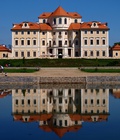
Departmental retreat in Liblice
Program Liblice
10.5. (Tuesday)
13.00 Arrival and Accommodation
14.00-14.10 Opening - Tomáš Obšil
14.10-15.10 Carlos Viera - Research Ethics
15.10-15.40 Introductory lectures of PhD students (1st year - Paiuk, Lusiani, Montes, Bys, Li, Hosseini, Poorsharbaf) – 3 min – 3 slides/each
15.45 Departure to brewery Lobeč – Guided tour and tasting
19.00 Arrival from brewery
19.00 Dinner at the fire (it depends on the weather)
11.5. (Wednesday)
9.-10.40 Lectures of PhD students (5 x 20 min, 4th year - Haskova, Chernyshev, Havelkova, Folprechtova, Mandal)
10.40-11.00 Coffee break
11.00-12.40 Lectures (5 x 20 min, Kokoskova – postdocs - Bener, Bashta, Rud, Blanco)
12.40-14.00 Lunch
14.00-16.00 Lectures (5 x 20 min – postdocs - Redondo, He, Mundil, Golabek, Szaniawska)
16.00-16.30 Coffee break
16.30-17. 30 Prof. František Štěpánek (VŠCHT) - Sensation on demand: Can remotely controlled chemistry enable immersive virtual reality?
19.00 Dinner
12.5. (Thursday)
8.00 Breakfast and Departure
May 10, 2022 - May 12, 2022
Program Liblice
10.5. (Tuesday)
13.00 Arrival and Accommodation
14.00-14.10 Opening - Tomáš Obšil
14.10-15.10 Carlos Viera - Research Ethics
15.10-15.40 Introductory lectures of PhD students (1st year - Paiuk, Lusiani, Montes, Bys, Li, Hosseini, Poorsharbaf) – 3 min – 3 slides/each
15.45 Departure to brewery Lobeč – Guided tour and tasting
19.00 Arrival from brewery
19.00 Dinner at the fire (it depends on the weather)
11.5. (Wednesday)
9.-10.40 Lectures of PhD students (5 x 20 min, 4th year - Haskova, Chernyshev, Havelkova, Folprechtova, Mandal)
10.40-11.00 Coffee break
11.00-12.40 Lectures (5 x 20 min, Kokoskova – postdocs - Bener, Bashta, Rud, Blanco)
12.40-14.00 Lunch
14.00-16.00 Lectures (5 x 20 min – postdocs - Redondo, He, Mundil, Golabek, Szaniawska)
16.00-16.30 Coffee break
16.30-17. 30 Prof. František Štěpánek (VŠCHT) - Sensation on demand: Can remotely controlled chemistry enable immersive virtual reality?
19.00 Dinner
12.5. (Thursday)
8.00 Breakfast and Departure
Tuesday, 24 May 2022
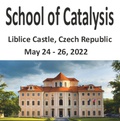
CUCAM organizes the School of Catalysis
After the successful "School of Catalysis" in 2019 and 2020, in the year 2022, we again plan to focus on experimental and theoretical aspects of catalysis.
Details and registration are there.
Liblice Castle, Czech Republic
May 24, 2022 - May 26, 2022
After the successful "School of Catalysis" in 2019 and 2020, in the year 2022, we again plan to focus on experimental and theoretical aspects of catalysis.
Details and registration are there.
Liblice Castle, Czech RepublicWednesday, 25 May 2022
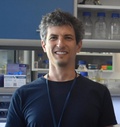
Departmental seminar on 25th May 2022
This time we have a guest, RNDr. Zdeněk Lánský, Ph.D. from Institute of Biotechnology, Biocev, Czech Academy of Sciences. The topic of his lecture is Reconstituting cytoskeleton - one molecule at a time.
Cytoskeletal proteins drive cellular motion for example during cell division or morphogenesis. Ensembles of cytoskeletal proteins self-assemble to drive these processes. We are interested in the roles of the individual cooperating proteins and the principles that underpin their collective action.
We use single molecule imaging and manipulation techniques to quantitatively describe these biological systems. I will discuss two recent projects from the lab, covering the role of cross-linking proteins in actin contractility and the role of the neurodegeneration-related protein tau in regulating access to microtubules.
The seminar will take place in the lecture hall CH3 in person.
The online option remains available only on special request (e.g., for colleagues who are ill/injured or have any other important reason for which they cannot come).
May 25, 2022 (14:00 – 15:30 )
This time we have a guest, RNDr. Zdeněk Lánský, Ph.D. from Institute of Biotechnology, Biocev, Czech Academy of Sciences. The topic of his lecture is Reconstituting cytoskeleton - one molecule at a time.
Cytoskeletal proteins drive cellular motion for example during cell division or morphogenesis. Ensembles of cytoskeletal proteins self-assemble to drive these processes. We are interested in the roles of the individual cooperating proteins and the principles that underpin their collective action.
We use single molecule imaging and manipulation techniques to quantitatively describe these biological systems. I will discuss two recent projects from the lab, covering the role of cross-linking proteins in actin contractility and the role of the neurodegeneration-related protein tau in regulating access to microtubules.
The seminar will take place in the lecture hall CH3 in person.
The online option remains available only on special request (e.g., for colleagues who are ill/injured or have any other important reason for which they cannot come).
Monday, 19 September 2022
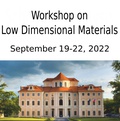
CUCAM organizes Workshop on Low Dimensional Materials
Sept. 19, 2022 - Sept. 22, 2022
Wednesday, 12 October 2022
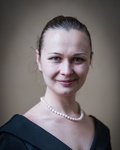
Departmental seminar and Habilitation lecture of Dr. Mariya Shamzhy
We would like to invite you for a seminar and a habilitation lecture of Dr. Mariya Shamzhy.
The topic of her lecture will be Isomorphous substitution for the design of heterogeneous catalysts.
As one of the most important heterogeneous catalysts, zeolites found application in a number of large-scale processes that require active sites of different nature. Isomorphous substitution is a key way to tailor the characteristics of a zeolite for a particular type of transformation.
This habilitation lecture will introduce the phenomenon of isomorphous substitution while emphasizing its importance in the design of heterogeneous catalysts with specific properties of active sites. Particular attention will be paid to the contribution of the applicant in developing methods for control over the nature of acid centers in extra-large pore and hierarchical zeolites.
The lecture will take place in person, in the hall CH3, Faculty of Science, Hlavova 8, Praha 2.
Oct. 12, 2022 (14:00 – 15:30 )
We would like to invite you for a seminar and a habilitation lecture of Dr. Mariya Shamzhy.
The topic of her lecture will be Isomorphous substitution for the design of heterogeneous catalysts.
As one of the most important heterogeneous catalysts, zeolites found application in a number of large-scale processes that require active sites of different nature. Isomorphous substitution is a key way to tailor the characteristics of a zeolite for a particular type of transformation.
This habilitation lecture will introduce the phenomenon of isomorphous substitution while emphasizing its importance in the design of heterogeneous catalysts with specific properties of active sites. Particular attention will be paid to the contribution of the applicant in developing methods for control over the nature of acid centers in extra-large pore and hierarchical zeolites.
The lecture will take place in person, in the hall CH3, Faculty of Science, Hlavova 8, Praha 2.
Monday, 17 October 2022

Neuron Award 2022 for Mariya Shamzhy
Mariya Shamzhy from the Department of Physical and Macromolecular Chemistry (CUCAM Research Centre) is tackling one of the long-standing key challenges for materials scientists - understanding how heterogeneous catalysts facilitate chemical reactions, at the atomic level. In particular, it is focused on the synthesis of new types of zeolites, their characterization and the explanation of their catalytic properties. The results so far promise new concepts for inorganic chemistry or chemical engineering. Mariya Shamzhy graduated from Lomonosov University and received her PhD degree from the Ukrainian Academy of Sciences.
(full article here)
Oct. 17, 2022 -
Mariya Shamzhy from the Department of Physical and Macromolecular Chemistry (CUCAM Research Centre) is tackling one of the long-standing key challenges for materials scientists - understanding how heterogeneous catalysts facilitate chemical reactions, at the atomic level. In particular, it is focused on the synthesis of new types of zeolites, their characterization and the explanation of their catalytic properties. The results so far promise new concepts for inorganic chemistry or chemical engineering. Mariya Shamzhy graduated from Lomonosov University and received her PhD degree from the Ukrainian Academy of Sciences.
(full article here)
Wednesday, 19 October 2022
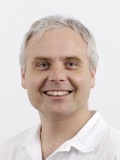
Departmental seminar on 19th October 2022
This time we have a guest, Doc. Daniel Jirák, Ph.D. from the Department of Diagnostic and Interventional Radiology, MR Unit, Institute for Clinical and Experimental Medicine. The topic of his lecture is Magnetic resonance imaging: its possibilities.
The aim of the lecture is to show the possibilities of magnetic resonance imaging, not only anatomical 1H MR imaging, but also the use of other isotopes (19F, 23Na, 31P, 11B). It will show possible applications with an emphasis on in vivo experiments and monitoring of transplanted cells labeled with different types of contrast agents in clinical and experimental medicine.
The lecture will take place in person, in the hall CH3, Faculty of Science, Hlavova 8, Praha 2.
Oct. 19, 2022 (14:00 – 15:30 )
This time we have a guest, Doc. Daniel Jirák, Ph.D. from the Department of Diagnostic and Interventional Radiology, MR Unit, Institute for Clinical and Experimental Medicine. The topic of his lecture is Magnetic resonance imaging: its possibilities.
The aim of the lecture is to show the possibilities of magnetic resonance imaging, not only anatomical 1H MR imaging, but also the use of other isotopes (19F, 23Na, 31P, 11B). It will show possible applications with an emphasis on in vivo experiments and monitoring of transplanted cells labeled with different types of contrast agents in clinical and experimental medicine.
The lecture will take place in person, in the hall CH3, Faculty of Science, Hlavova 8, Praha 2.
Wednesday, 26 October 2022
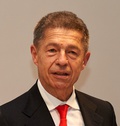
Departmental seminar on 26th October 2022
This time we have a guest, Prof. Dr. Joachim Sauer, from Humboldt University of Berlin. The topic of his lecture is Ab Initio Free Energy Predictions with Chemical Accuracy: Adsorption and Catalysis in Nanoporous Materials.
The rational design of improved nanoporous materials requires the reliable prediction of rate and equilibrium constants, i.e. free energies, for elementary reactions and adsorption/desorption steps with no other input than the atomic positions. For realistic molecule-surface interaction models with hundreds of atoms in the simulation cell, with an accuracy that is comparable to experiment, this is a challenging problem of computational quantum chemistry. A general ab initio divide-and-conquer approach that uses (i) hybrid high-level QM (reaction site): low level QM (periodic solid) energies for stationary points and (ii) anharmonic partition functions for local sampling of the potential energy surface, will be presented. With this model a chemical accuracy (±4 kJ/mol) is reached for elementary reaction steps in zeolites and for adsorption in zeolites and MOFs.
The lecture will take place in person, in the hall CH3, Faculty of Science, Hlavova 8, Praha 2.
An informal discussion with the speaker on general topics of todays science will follow in the seminar room of the department (304F) over a cup of tea/coffee. All interested participants are welcome.
Oct. 26, 2022 (14:00 – 15:30 )
This time we have a guest, Prof. Dr. Joachim Sauer, from Humboldt University of Berlin. The topic of his lecture is Ab Initio Free Energy Predictions with Chemical Accuracy: Adsorption and Catalysis in Nanoporous Materials.
The rational design of improved nanoporous materials requires the reliable prediction of rate and equilibrium constants, i.e. free energies, for elementary reactions and adsorption/desorption steps with no other input than the atomic positions. For realistic molecule-surface interaction models with hundreds of atoms in the simulation cell, with an accuracy that is comparable to experiment, this is a challenging problem of computational quantum chemistry. A general ab initio divide-and-conquer approach that uses (i) hybrid high-level QM (reaction site): low level QM (periodic solid) energies for stationary points and (ii) anharmonic partition functions for local sampling of the potential energy surface, will be presented. With this model a chemical accuracy (±4 kJ/mol) is reached for elementary reaction steps in zeolites and for adsorption in zeolites and MOFs.
The lecture will take place in person, in the hall CH3, Faculty of Science, Hlavova 8, Praha 2.
An informal discussion with the speaker on general topics of todays science will follow in the seminar room of the department (304F) over a cup of tea/coffee. All interested participants are welcome.
Wednesday, 2 November 2022
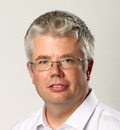
Departmental seminar on 2nd November 2022
This week we have a guest, Doc. Mgr. Martin Hrubý, PhD, from the Institute of Macromolecular Chemistry, Czech Academy of Sciences. He will speak about Supramolecular stimuli-responsive polymer
systems for theranostic applications.
Self-assembly of molecules into complex supramolecular units with qualitatively new properties is in the chemical foundations of life and is the essence of the ability of living organisms to react to the external environment - irritability. Classical examples of such supramolecular structures are the cytoplasmic membrane formed by phospholipids, nucleic acids or multienzyme complexes formed by several enzymes catalysing subsequent reactions on a single substrate. Understanding these mechanisms enables targeted chemical synthesis of analogous systems based on tailored polymers not only for biomedical applications.
A specific case occurs when the hydrophobic part of the molecule, or the part of the molecule responsible for self-assembly significantly changes its physico-chemical properties, such as solubility in water, by the action of an external stimulus (changing temperature, pH, etc.). Then the self-assembly of such a system is controlled by this external stimulus and we are talking about systems sensitive to external stimuli. It is a certain, albeit much simpler variant of one of the life-defining qualities - irritability. Several such systems designed for biomedical applications will be presented in the lecture.
The lecture will take place in person, in the hall CH3, Faculty of Science, Hlavova 8, Praha 2.
Nov. 2, 2022 (14:00 – 15:30 )
This week we have a guest, Doc. Mgr. Martin Hrubý, PhD, from the Institute of Macromolecular Chemistry, Czech Academy of Sciences. He will speak about Supramolecular stimuli-responsive polymer
systems for theranostic applications.
Self-assembly of molecules into complex supramolecular units with qualitatively new properties is in the chemical foundations of life and is the essence of the ability of living organisms to react to the external environment - irritability. Classical examples of such supramolecular structures are the cytoplasmic membrane formed by phospholipids, nucleic acids or multienzyme complexes formed by several enzymes catalysing subsequent reactions on a single substrate. Understanding these mechanisms enables targeted chemical synthesis of analogous systems based on tailored polymers not only for biomedical applications.
A specific case occurs when the hydrophobic part of the molecule, or the part of the molecule responsible for self-assembly significantly changes its physico-chemical properties, such as solubility in water, by the action of an external stimulus (changing temperature, pH, etc.). Then the self-assembly of such a system is controlled by this external stimulus and we are talking about systems sensitive to external stimuli. It is a certain, albeit much simpler variant of one of the life-defining qualities - irritability. Several such systems designed for biomedical applications will be presented in the lecture.
The lecture will take place in person, in the hall CH3, Faculty of Science, Hlavova 8, Praha 2.
Wednesday, 16 November 2022

Departmental seminar on 16th November 2022
New PhD students will present the topics of their theses:
Tereza Benešová from the Nanomaterials modeling group,
Soňa Mesíková from the Soft matter group,
Emad Eldin Hussein Abdel Halim Shamma from the group of Heterogenous catalysis and advanced materials,
Tuba Ayca Tunca and Michaela Vaňková from the group of Polymer synthesis and biomaterials,
Ali Zeraatkar from the Soft matter group.
The seminar will take place in person, in the hall CH3, Faculty of Science, Hlavova 8, Praha 2.
Nov. 16, 2022 (14:00 – 15:30 )
New PhD students will present the topics of their theses:
Tereza Benešová from the Nanomaterials modeling group,
Soňa Mesíková from the Soft matter group,
Emad Eldin Hussein Abdel Halim Shamma from the group of Heterogenous catalysis and advanced materials,
Tuba Ayca Tunca and Michaela Vaňková from the group of Polymer synthesis and biomaterials,
Ali Zeraatkar from the Soft matter group.
The seminar will take place in person, in the hall CH3, Faculty of Science, Hlavova 8, Praha 2.
Wednesday, 23 November 2022

Departmental seminar on 23rd November 2022
Two second year master students will present the results of their research:
Filip Steiner and Martin Orságh from the Soft matter group.
Two new PhD students, Emadeldin Hussein Shamma from the group of Heterogenous catalysis and advanced materials, and Tuba Ayca Tunca from the group of Polymer synthesis and biomaterials will present the topics of their research.
The seminar will take place in person, in the hall CH3, Faculty of Science, Hlavova 8, Praha 2.
Nov. 23, 2022 (14:00 – 15:30 )
Two second year master students will present the results of their research:
Filip Steiner and Martin Orságh from the Soft matter group.
Two new PhD students, Emadeldin Hussein Shamma from the group of Heterogenous catalysis and advanced materials, and Tuba Ayca Tunca from the group of Polymer synthesis and biomaterials will present the topics of their research.
The seminar will take place in person, in the hall CH3, Faculty of Science, Hlavova 8, Praha 2.
Wednesday, 30 November 2022

Departmental seminar on 30th November 2022
The second year master students will present the results of their research:
Gabriela Chytrá from the Laboratory of structural biochemistry of immune recognition,
Jakub Nierostek from the Soft matter theory group,
Andrej Šmelko from the Laboratory of NMR spectroscopy,
Matouš Tulpa from the Laboratory of structural biochemistry of immune recognition.
The seminar will take place in person, in the hall CH3, Faculty of Science, Hlavova 8, Praha 2.
Nov. 30, 2022 (14:00 – 15:30 )
The second year master students will present the results of their research:
Gabriela Chytrá from the Laboratory of structural biochemistry of immune recognition,
Jakub Nierostek from the Soft matter theory group,
Andrej Šmelko from the Laboratory of NMR spectroscopy,
Matouš Tulpa from the Laboratory of structural biochemistry of immune recognition.
The seminar will take place in person, in the hall CH3, Faculty of Science, Hlavova 8, Praha 2.
Wednesday, 7 December 2022

Departmental seminar on 7th December 2022
This week we have a guest, Ing. Pavel Izák, Ph.D., DSc., from the Institute of Chemical Process Fundamentals, Czech Academy of Sciences. His talk is called The potential of membrane separation processes in gas and liquid mixture separation.
The talk will summarize results and also the potential of separation of gas and liquids through nonporous membranes. Two membranes separation techniques are involved, namely the pervaporation and the gas separation. Special attention is focused on ionic liquids, which have a growing potential in both previously mentioned techniques. Nowadays the separation of various gaseous and also enantiomers from racemic mixtures have been within the gradually growing interest of many companies and research teams. Furthermore, the new kind of membranes can help improve separation and permeation properties. The scale up of purification of raw biogas to CNG from laboratory to pilot plant will be discussed.
The lecture will take place in person, in the hall CH3, Faculty of Science, Hlavova 8, Praha 2.
Dec. 7, 2022 (14:00 – 15:30 )
This week we have a guest, Ing. Pavel Izák, Ph.D., DSc., from the Institute of Chemical Process Fundamentals, Czech Academy of Sciences. His talk is called The potential of membrane separation processes in gas and liquid mixture separation.
The talk will summarize results and also the potential of separation of gas and liquids through nonporous membranes. Two membranes separation techniques are involved, namely the pervaporation and the gas separation. Special attention is focused on ionic liquids, which have a growing potential in both previously mentioned techniques. Nowadays the separation of various gaseous and also enantiomers from racemic mixtures have been within the gradually growing interest of many companies and research teams. Furthermore, the new kind of membranes can help improve separation and permeation properties. The scale up of purification of raw biogas to CNG from laboratory to pilot plant will be discussed.
The lecture will take place in person, in the hall CH3, Faculty of Science, Hlavova 8, Praha 2.
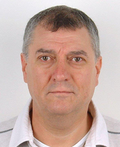
Paul Diddams lecture
Group of Heterogeneous Catalysis and Advanced Materials together with the Department of Physical and Macromolecular Chemistry invite you for a lecture Catalysts in Action by Dr. Paul Diddams, Technology Director of Oil and Gas, Johnson Matthey.
Biography:
Paul Diddams completed his PhD in Physical Chemistry at the University of Cambridge in 1985. During his carrier he worked as R&D specialist and consultant for many companies incl. Johnson Matthey, Total, BP, Intercat Inc., and Grace. Currently, Paul is a Technology Director of Oil and Gas at Johnson Matthey. In January, 2023 Paul will become our colleague here at the Faculty of Science. Paul will be involved in design and optimization of catalysts, evaluation of catalytic data in the group of Heterogeneous Catalysis and Advanced Materials. Paul is top-tier industrial specialist in application of zeolites, with focus on Fluid Catalytic Cracking (FCC) units. He was senior refining consultant for the FCC units all over the World.
The lecture will take place in the hall CH2, Faculty of Science, Hlavova 8, Praha 2.
The lecture complements the courses “Principles of Catalysis” and “Chemical Principles of Industrial Processes”.
Dec. 7, 2022 (16:30 – 17:30 )
Group of Heterogeneous Catalysis and Advanced Materials together with the Department of Physical and Macromolecular Chemistry invite you for a lecture Catalysts in Action by Dr. Paul Diddams, Technology Director of Oil and Gas, Johnson Matthey.
Biography:
Paul Diddams completed his PhD in Physical Chemistry at the University of Cambridge in 1985. During his carrier he worked as R&D specialist and consultant for many companies incl. Johnson Matthey, Total, BP, Intercat Inc., and Grace. Currently, Paul is a Technology Director of Oil and Gas at Johnson Matthey. In January, 2023 Paul will become our colleague here at the Faculty of Science. Paul will be involved in design and optimization of catalysts, evaluation of catalytic data in the group of Heterogeneous Catalysis and Advanced Materials. Paul is top-tier industrial specialist in application of zeolites, with focus on Fluid Catalytic Cracking (FCC) units. He was senior refining consultant for the FCC units all over the World.
The lecture will take place in the hall CH2, Faculty of Science, Hlavova 8, Praha 2.
The lecture complements the courses “Principles of Catalysis” and “Chemical Principles of Industrial Processes”.
Wednesday, 14 December 2022

Departmental seminar on 14th December 2022
The second year master students will present t he results of their research:
Mikuláš Klenor from the Institute of organic chemistry and biochemistry, Czech academy of Sciences,
Svetlana Kurucová from the group of Heterogenous catalysis and advanced materials,
Pavla Trembulaková from the Institute of organic chemistry and biochemistry, Czech academy of Sciences.
The seminar will take place in person, in the hall CH3, Faculty of Science, Hlavova 8, Praha 2.
Dec. 14, 2022 (14:00 – 15:30 )
The second year master students will present t he results of their research:
Mikuláš Klenor from the Institute of organic chemistry and biochemistry, Czech academy of Sciences,
Svetlana Kurucová from the group of Heterogenous catalysis and advanced materials,
Pavla Trembulaková from the Institute of organic chemistry and biochemistry, Czech academy of Sciences.
The seminar will take place in person, in the hall CH3, Faculty of Science, Hlavova 8, Praha 2.
Wednesday, 28 December 2022
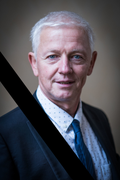
Obituary notice
With a heavy heart we have to announce that Prof. Petr Nachtigall passed away on 28th December.
Dec. 28, 2022 -
With a heavy heart we have to announce that Prof. Petr Nachtigall passed away on 28th December.
Wednesday, 15 February 2023
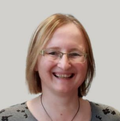
Departmental seminar on 15th February 2023
We would like to invite you to the habilitation lecture by Dr. Romana Sokolová from Jaroslav Heyrovský institute, Czech Academy of Sciences. The topic of her lecture is Application of spectroelectrochemistry in determination of oxidation and reduction mechanisms.
The lecture deals with determination of oxidation and reduction mechanisms of bioactive compounds. Since electron transfer reactions occur in biological processes, understanding the relationship between the chemical structure of a bioactive compound and its electrochemical properties may provide fundamental information on its antioxidant and pharmaceutical efficiency. These processes involve an electron transfer and coupled chemical reactions. Electrochemical and spectroelectrochemical methods can effectively explain the fundamental reaction schemes. The presentation will be focused on the importance and application of in situ UV-Vis and IR spectroelectrochemistry in the determination of electroactive site in molecule and in identification of short living intermediates and products formed during reaction. Significant contribution of spectroelectrochemical techniques in the research of complex reaction schemes will be shown on examples of important biologically active compounds.
The lecture will take place in person, in the hall CH3, Faculty of Science, Hlavova 8, Praha 2.
Feb. 15, 2023 (14:00 – 15:30 )
We would like to invite you to the habilitation lecture by Dr. Romana Sokolová from Jaroslav Heyrovský institute, Czech Academy of Sciences. The topic of her lecture is Application of spectroelectrochemistry in determination of oxidation and reduction mechanisms.
The lecture deals with determination of oxidation and reduction mechanisms of bioactive compounds. Since electron transfer reactions occur in biological processes, understanding the relationship between the chemical structure of a bioactive compound and its electrochemical properties may provide fundamental information on its antioxidant and pharmaceutical efficiency. These processes involve an electron transfer and coupled chemical reactions. Electrochemical and spectroelectrochemical methods can effectively explain the fundamental reaction schemes. The presentation will be focused on the importance and application of in situ UV-Vis and IR spectroelectrochemistry in the determination of electroactive site in molecule and in identification of short living intermediates and products formed during reaction. Significant contribution of spectroelectrochemical techniques in the research of complex reaction schemes will be shown on examples of important biologically active compounds.
The lecture will take place in person, in the hall CH3, Faculty of Science, Hlavova 8, Praha 2.
Wednesday, 22 February 2023

Departmental seminar on 22nd February 2023
The first year master students will present their research topics:
Andrej Tekel and Adam Brzezina from the Biophysical Chemistry of Protein Complexes research group.
The meeting of the staff will take place after the presentations.
The seminar will take place in person, in the hall CH3, Faculty of Science, Hlavova 8, Praha 2.
Feb. 22, 2023 (14:00 – 15:30 )
The first year master students will present their research topics:
Andrej Tekel and Adam Brzezina from the Biophysical Chemistry of Protein Complexes research group.
The meeting of the staff will take place after the presentations.
The seminar will take place in person, in the hall CH3, Faculty of Science, Hlavova 8, Praha 2.
Wednesday, 1 March 2023

Departmental seminar on 1st March 2023
The first year master students will present their research topics:
Kevin Kotalík from BIOCEV ,
Daniel Berdár form BIOCEV,
Petr Eminger from Institute of Organic Chemistry and Biochemistry, Czech Academy of Sciences,
Adam Hašpl from the Soft Matter research group.
The seminar will take place in person, in the hall CH3, Faculty of Science, Hlavova 8, Praha 2.
March 1, 2023 (14:00 – 15:30 )
The first year master students will present their research topics:
Kevin Kotalík from BIOCEV ,
Daniel Berdár form BIOCEV,
Petr Eminger from Institute of Organic Chemistry and Biochemistry, Czech Academy of Sciences,
Adam Hašpl from the Soft Matter research group.
The seminar will take place in person, in the hall CH3, Faculty of Science, Hlavova 8, Praha 2.
Wednesday, 15 March 2023

Departmental seminar on 15th March 2023
The first and second year master students will present their research topics:
Ondrej Kopilec from the Polymer Synthesis and Biomaterials research group,
Timea Derérová from the Electrophoresis and Chromatography research group,
Magdaléna Nejedlá from the Soft Matter research group,
Adam Škorňa from the Soft Matter research group.
The seminar will take place in person, in the hall CH3, Faculty of Science, Hlavova 8, Praha 2.
March 15, 2023 (14:00 – 15:30 )
The first and second year master students will present their research topics:
Ondrej Kopilec from the Polymer Synthesis and Biomaterials research group,
Timea Derérová from the Electrophoresis and Chromatography research group,
Magdaléna Nejedlá from the Soft Matter research group,
Adam Škorňa from the Soft Matter research group.
The seminar will take place in person, in the hall CH3, Faculty of Science, Hlavova 8, Praha 2.
Wednesday, 29 March 2023
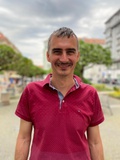
Departmental seminar on 29th March 2023
We would like to invite you to the habilitation lecture by Prof. Michal Kohout from University of Chemistry and Technology. The topic of his lecture is Design and applications of photosensitive liquid crystals.
Liquid crystals (LCs), a phenomenon that significantly influences our daily lives. We use technologies based on LCs in mobile phones, TV screens and many other optoelectronic devices. Apart from materials science, LCs reach far into the realm of biochemistry since cell walls as well as short fragments of DNA are liquid crystalline. The discovery of liquid crystals dates back to the 19th century, when Friedrich Reinitzer, a professor at Charles University in Prague observed an interesting behaviour during melting of cholesteryl benzoate, which, with the help of Otto Lehmann, he later described as crystals that flow – liquid crystals.
Contemporary research on LCs in the area of materials chemistry is mainly focused on advanced self-assembling systems that, apart from response to the mechanical stress and electric field, feature a special functionality responsible for their instant response to a magnetic field or light. Among them, photosensitive materials play a prominent role due to broad application potential in non-linear optics and photonics. From the variety of photosensitive units applied in the design of liquid crystals, the azo group stands out for the distinct conditions of photoisomerization of the thermodynamically stable E-(trans-) isomer to the photochemically preferred Z-(cis-) isomer and vice versa.
Recently, we have focused on the design and synthesis of chiral photosensitive materials and their application as chiral photosensitive ligands to stabilize magnetic nanoparticles. The nanomaterial represents the first example of a multifunctional dopant, which upon mixing with an achiral liquid crystal gives rise to the photosensitive and magnetic nanocomposite showing a chiral mesophase. Moreover, we prepared a series of photosensitive bent-core materials based on a 4-chlororesorcinol central core featuring various linking units in the side arms. Certain combination of the azo group in one elongating side arm and a particular linking unit in the other gave rise to the broad range of a nematic phase. We have utilized these compounds in a prototype of an optical memory device.
The lecture will take place in person, in the hall CH3, Faculty of Science, Hlavova 8, Praha 2.
March 29, 2023 (14:00 – 15:30 )
We would like to invite you to the habilitation lecture by Prof. Michal Kohout from University of Chemistry and Technology. The topic of his lecture is Design and applications of photosensitive liquid crystals.
Liquid crystals (LCs), a phenomenon that significantly influences our daily lives. We use technologies based on LCs in mobile phones, TV screens and many other optoelectronic devices. Apart from materials science, LCs reach far into the realm of biochemistry since cell walls as well as short fragments of DNA are liquid crystalline. The discovery of liquid crystals dates back to the 19th century, when Friedrich Reinitzer, a professor at Charles University in Prague observed an interesting behaviour during melting of cholesteryl benzoate, which, with the help of Otto Lehmann, he later described as crystals that flow – liquid crystals.
Contemporary research on LCs in the area of materials chemistry is mainly focused on advanced self-assembling systems that, apart from response to the mechanical stress and electric field, feature a special functionality responsible for their instant response to a magnetic field or light. Among them, photosensitive materials play a prominent role due to broad application potential in non-linear optics and photonics. From the variety of photosensitive units applied in the design of liquid crystals, the azo group stands out for the distinct conditions of photoisomerization of the thermodynamically stable E-(trans-) isomer to the photochemically preferred Z-(cis-) isomer and vice versa.
Recently, we have focused on the design and synthesis of chiral photosensitive materials and their application as chiral photosensitive ligands to stabilize magnetic nanoparticles. The nanomaterial represents the first example of a multifunctional dopant, which upon mixing with an achiral liquid crystal gives rise to the photosensitive and magnetic nanocomposite showing a chiral mesophase. Moreover, we prepared a series of photosensitive bent-core materials based on a 4-chlororesorcinol central core featuring various linking units in the side arms. Certain combination of the azo group in one elongating side arm and a particular linking unit in the other gave rise to the broad range of a nematic phase. We have utilized these compounds in a prototype of an optical memory device.
The lecture will take place in person, in the hall CH3, Faculty of Science, Hlavova 8, Praha 2.
Tuesday, 11 April 2023
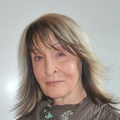
Departmental seminar on 11th April 2023
We have a guest, Prof. Marija Bešter-Rogač from the University of Ljubljana, Slovenia. The topic of her lecture is Ionic liquids in solutions: from electrolytes to surfactants.
In recent decades, ionic liquids (ILs) have attracted attention due to their suitability as systems for a variety of applications. However, the growing number of studies dealing with the physicochemical properties of ILs in their pure state has been extended to investigations of their mixtures with molecular co-solvents. It turned out that ILs in solutions can serve as excellent (electrolyte) model systems, since they exist in a variety of structures and many of them are fully miscible with different solvents, while the solubility of "classical" electrolytes is limited. In addition, ILs with long alkyl chains behave similarly to conventional surfactants, forming aggregates in water. However, the possible variations in chain length and counterions make them ideal for studying ion and isomer effects on self-assembly processes in solutions.
The lecture will take place in person, in the hall CH6, Faculty of Science, Hlavova 8, Praha 2.
April 11, 2023 (13:10 – 14:40 )
We have a guest, Prof. Marija Bešter-Rogač from the University of Ljubljana, Slovenia. The topic of her lecture is Ionic liquids in solutions: from electrolytes to surfactants.
In recent decades, ionic liquids (ILs) have attracted attention due to their suitability as systems for a variety of applications. However, the growing number of studies dealing with the physicochemical properties of ILs in their pure state has been extended to investigations of their mixtures with molecular co-solvents. It turned out that ILs in solutions can serve as excellent (electrolyte) model systems, since they exist in a variety of structures and many of them are fully miscible with different solvents, while the solubility of "classical" electrolytes is limited. In addition, ILs with long alkyl chains behave similarly to conventional surfactants, forming aggregates in water. However, the possible variations in chain length and counterions make them ideal for studying ion and isomer effects on self-assembly processes in solutions.
The lecture will take place in person, in the hall CH6, Faculty of Science, Hlavova 8, Praha 2.
Wednesday, 12 April 2023

Prof. Nachtigall Memorial Seminar
The Prof. Petr Nachtigall memorial will take place in person, in the hall CH2, Faculty of Science, Hlavova 8, Praha 2.
April 12, 2023 (14:00 – 15:30 )
The Prof. Petr Nachtigall memorial will take place in person, in the hall CH2, Faculty of Science, Hlavova 8, Praha 2.
Wednesday, 19 April 2023

Departmental seminar on 19th April 2023
The first year PhD students will present their research topics.
The seminar will take place in person, in the hall CH3, Faculty of Science, Hlavova 8, Praha 2.
April 19, 2023 (14:00 – 15:30 )
The first year PhD students will present their research topics.
The seminar will take place in person, in the hall CH3, Faculty of Science, Hlavova 8, Praha 2.
Wednesday, 26 April 2023

Departmental seminar on 26th April 2023
We have a guest, Prof. David Hoksza from Charles University, Faculty of Mathematics and Physics. The topic of his lecture is Machine learning-based detection of protein-ligand binding sites.
The presentation will cover machine-learning based approaches for protein-ligand binding sites prediction. Firstly, our state-of-the-art approach which detects binding sites based on the 3D structure of a protein will be discussed. The method utilizes a mesh-based representation of protein surface, over which a machine-learning model is trained for subsequent detection. In addition, metrics used binding site prediction methods evaluation, along with their advantages and disadvantages, will be discussed. Then, our recent work will be introduced where we will show the performance of the recently developed protein language models in predicting positions of binding sites solely from protein sequence and how it compares to existing state-of-the-art methods.
The lecture will take place in person, in the hall CH3, Faculty of Science, Hlavova 8, Praha 2.
April 26, 2023 (14:00 – 15:30 )
We have a guest, Prof. David Hoksza from Charles University, Faculty of Mathematics and Physics. The topic of his lecture is Machine learning-based detection of protein-ligand binding sites.
The presentation will cover machine-learning based approaches for protein-ligand binding sites prediction. Firstly, our state-of-the-art approach which detects binding sites based on the 3D structure of a protein will be discussed. The method utilizes a mesh-based representation of protein surface, over which a machine-learning model is trained for subsequent detection. In addition, metrics used binding site prediction methods evaluation, along with their advantages and disadvantages, will be discussed. Then, our recent work will be introduced where we will show the performance of the recently developed protein language models in predicting positions of binding sites solely from protein sequence and how it compares to existing state-of-the-art methods.
The lecture will take place in person, in the hall CH3, Faculty of Science, Hlavova 8, Praha 2.
Tuesday, 9 May 2023

Departmental retreat in Liblice
9.5.
- 13.00 Arrival and Accommodation
- 14.00-14.10 Opening - Tomáš Obšil
- 14.15-15.15 Introductory lectures of PhD students (1 year students - 5 min – 5 slides/each) - 01 - Michaela Vaňková, 02 - Ayca Tuba Tunca, 03 - Ali Zeraatkar, 04 - Soňa Mesíková, 05 - Petr Golis, 06 - Emad Shamma, 07 - Yuqi Zhang, 08 - Talat Zakeri)
- 15.15-16.15 Future plans – Assistant Professors (6-8 min) - 01 – Lucie Nová, 02 – Oleg Rud, 03 – Pavla Eliášová, 04 – Jan Přech, 05 – Michal Mazur, 06 – Christopher Heard, 07 – Mariusz Uchman, 08 – Junji He
- 16.30-18.00 Free afternoon – volleyball (P. Eliášová, M. Mazur)
- 18.30 Dinner at the fire (it depends on the weather)
10.5.
- 9.00-10.40 Lectures of PhD students (5 x 15 min + 5 min discussion) - 01 - Andrej Chernyshev, 02 - David Šorm, 03 - Alena Hašková, 04 - Lucie Havelková, 05 - Denisa Folprechtová, 06 - Ang Lii
- 10.45-11.00 Coffee break
- 11.00-12.20 Lectures (5 x 15 min + 5 min discussion) - 07 - Zuzana Kadlecová, 08 - Ondřej Veselý, 09 - Sebastian Pineda, 10 – Karolína Honzejková, 11 - Sarra Abdi
- 13.00-14.00 Lunch
- 14.00-15.20 Postdoc Lectures (4 x 15 min + 5 min discussion) – Po01 - Semira Bener, Po02 – Andreas Erlebach, Po03 – Robert Mundil, Po04 - Daniel Rainer
- 15.30-16.00 Coffee break
- 16.00-16.30 Dr. Paul Diddams - PhD in Chemistry and the Way Beyond
- 16.30-17.30 Prof. Petr Slavíček (VŠCHT)
- 19.00 Dinner
11.5.
- 8.00 Breakfast and Departure
May 9, 2023 - May 12, 2023
9.5.
- 13.00 Arrival and Accommodation
- 14.00-14.10 Opening - Tomáš Obšil
- 14.15-15.15 Introductory lectures of PhD students (1 year students - 5 min – 5 slides/each) - 01 - Michaela Vaňková, 02 - Ayca Tuba Tunca, 03 - Ali Zeraatkar, 04 - Soňa Mesíková, 05 - Petr Golis, 06 - Emad Shamma, 07 - Yuqi Zhang, 08 - Talat Zakeri)
- 15.15-16.15 Future plans – Assistant Professors (6-8 min) - 01 – Lucie Nová, 02 – Oleg Rud, 03 – Pavla Eliášová, 04 – Jan Přech, 05 – Michal Mazur, 06 – Christopher Heard, 07 – Mariusz Uchman, 08 – Junji He
- 16.30-18.00 Free afternoon – volleyball (P. Eliášová, M. Mazur)
- 18.30 Dinner at the fire (it depends on the weather)
10.5.
- 9.00-10.40 Lectures of PhD students (5 x 15 min + 5 min discussion) - 01 - Andrej Chernyshev, 02 - David Šorm, 03 - Alena Hašková, 04 - Lucie Havelková, 05 - Denisa Folprechtová, 06 - Ang Lii
- 10.45-11.00 Coffee break
- 11.00-12.20 Lectures (5 x 15 min + 5 min discussion) - 07 - Zuzana Kadlecová, 08 - Ondřej Veselý, 09 - Sebastian Pineda, 10 – Karolína Honzejková, 11 - Sarra Abdi
- 13.00-14.00 Lunch
- 14.00-15.20 Postdoc Lectures (4 x 15 min + 5 min discussion) – Po01 - Semira Bener, Po02 – Andreas Erlebach, Po03 – Robert Mundil, Po04 - Daniel Rainer
- 15.30-16.00 Coffee break
- 16.00-16.30 Dr. Paul Diddams - PhD in Chemistry and the Way Beyond
- 16.30-17.30 Prof. Petr Slavíček (VŠCHT)
- 19.00 Dinner
11.5.
- 8.00 Breakfast and Departure
Wednesday, 17 May 2023
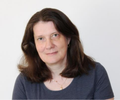
Departmental seminar on 17th May 2023
We would like to invite you to the habilitation lecture by Dr. Ivana Šloufová. The topic of her lecture is Investigation of surface interactions between plasmonic nanoparticles and molecules using surface-enhanced Raman scattering spectroscopy.
Surface-enhanced Raman scattering spectroscopy (SERS) is a powerful sensing technique based on amplification of the Raman signal of molecules adsorbed on or in close proximity to a plasmonic metal nanostructure. It works mainly by utilizing the electromagnetic field enhancement generated by the excitation of localized surface-plasmon resonance and resulting in a significant increase in the Raman scattering signal. SERS has numerous applications in chemistry, material science, biochemistry, and medical diagnostics.
The primary focus of this habilitation lecture is to emphasize the potential of SERS spectroscopy in studying of the formation and the molecular structure of surface complexes of polypyridine molecules, in monitoring chemical process on surfaces as well as the role of plasmon catalysis.
The lecture will take place in person, in the hall CH3, Faculty of Science, Hlavova 8, Praha 2.
May 17, 2023 (14:00 – 15:30 )
We would like to invite you to the habilitation lecture by Dr. Ivana Šloufová. The topic of her lecture is Investigation of surface interactions between plasmonic nanoparticles and molecules using surface-enhanced Raman scattering spectroscopy.
Surface-enhanced Raman scattering spectroscopy (SERS) is a powerful sensing technique based on amplification of the Raman signal of molecules adsorbed on or in close proximity to a plasmonic metal nanostructure. It works mainly by utilizing the electromagnetic field enhancement generated by the excitation of localized surface-plasmon resonance and resulting in a significant increase in the Raman scattering signal. SERS has numerous applications in chemistry, material science, biochemistry, and medical diagnostics.
The primary focus of this habilitation lecture is to emphasize the potential of SERS spectroscopy in studying of the formation and the molecular structure of surface complexes of polypyridine molecules, in monitoring chemical process on surfaces as well as the role of plasmon catalysis.
The lecture will take place in person, in the hall CH3, Faculty of Science, Hlavova 8, Praha 2.
Wednesday, 24 May 2023
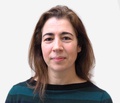
Departmental seminar on 24th May 2023
We have a guest, Prof. Rita de Sousa Dias from University of Trondheim. The topic of her lecture is DNA condensation and polyelectrolyte complex formation.
The The folding of DNA has attracted a considerable interest ever since DNA was found to be the storage of genetic information. Chromosomal DNAs are often many orders of magnitude larger than their biological packages (cells or viruses) and, in eukaryotic cells, packing is achieved by the wrapping of DNA around small, basic proteins, called histones. Bacterial cells are very different from eukaryotic cells; they present no nuclear membrane that confines the DNA and there is no compelling evidence for the existence of histone-like proteins that condense and organize the genome. Instead, there is a range of DNA-binding proteins that modulate DNA via bending or bridging. One such type of proteins, H-NS, is a dimer that can self-associate into oligomers and induce bridging between different tracts of DNA. In addition, the cytoplasm very large concentration of macromolecules (RNA and proteins) in the cells is believed to favor DNA condensation due to molecular crowding. Nucleic acid (e.g., DNA, RNA) condensation is also relevant from a technological point of view, being the first step in both DNA purification processes and nuclei acid delivery applications. The complexation of the nucleic acids with cationic macromolecules (e.g. lipids, polymers), often reduces their dimensions, the negative charges and protect the nucleic acids agains digestion by enzymes.
This lecture will start with a general introduction on DNA condensation in cells, followed by some results of a work that explored the effect of steric repulsion and protein self-assembly on DNA condensation in model bacterial cells. Afterwards I will focus on DNA condensation in vitro and review some work on the interaction between DNA and surfactants, dendrimer and peptide-conjugated dendrimers.
The lecture will take place in person, in the hall CH3, Faculty of Science, Hlavova 8, Praha 2.
May 24, 2023 (14:00 – 15:30 )
We have a guest, Prof. Rita de Sousa Dias from University of Trondheim. The topic of her lecture is DNA condensation and polyelectrolyte complex formation.
The The folding of DNA has attracted a considerable interest ever since DNA was found to be the storage of genetic information. Chromosomal DNAs are often many orders of magnitude larger than their biological packages (cells or viruses) and, in eukaryotic cells, packing is achieved by the wrapping of DNA around small, basic proteins, called histones. Bacterial cells are very different from eukaryotic cells; they present no nuclear membrane that confines the DNA and there is no compelling evidence for the existence of histone-like proteins that condense and organize the genome. Instead, there is a range of DNA-binding proteins that modulate DNA via bending or bridging. One such type of proteins, H-NS, is a dimer that can self-associate into oligomers and induce bridging between different tracts of DNA. In addition, the cytoplasm very large concentration of macromolecules (RNA and proteins) in the cells is believed to favor DNA condensation due to molecular crowding. Nucleic acid (e.g., DNA, RNA) condensation is also relevant from a technological point of view, being the first step in both DNA purification processes and nuclei acid delivery applications. The complexation of the nucleic acids with cationic macromolecules (e.g. lipids, polymers), often reduces their dimensions, the negative charges and protect the nucleic acids agains digestion by enzymes.
This lecture will start with a general introduction on DNA condensation in cells, followed by some results of a work that explored the effect of steric repulsion and protein self-assembly on DNA condensation in model bacterial cells. Afterwards I will focus on DNA condensation in vitro and review some work on the interaction between DNA and surfactants, dendrimer and peptide-conjugated dendrimers.
The lecture will take place in person, in the hall CH3, Faculty of Science, Hlavova 8, Praha 2.
Wednesday, 11 October 2023
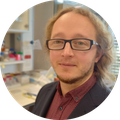
Departmental seminar on 11th October 2023
We have a guest, Dr. Jiří Zahradník from First Faculty of Medicine, Charles University. The topic of his lecture is How Yeast Gained Attention in Pandemic.
Viruses rapidly evolve to stay a step ahead of their hosts. To deal with ever changing enemy, we need new strategies. In this presentation, we will explore how techniques, classically employed in protein engineering, have recently gained prominence as indispensable tools for dissecting the intricate interfaces between hosts and pathogens. We will dive into the methodology that enables us to follow and predict pathogen evolution and will eventually change our approach to vaccine and antibody therapies. Our primary focus will revolve around SARS-CoV-2 and other coronaviruses.
The lecture will take place in person, in the hall CH3, Faculty of Science, Hlavova 8, Praha 2.
Oct. 11, 2023 (14:00 – 15:30 )
We have a guest, Dr. Jiří Zahradník from First Faculty of Medicine, Charles University. The topic of his lecture is How Yeast Gained Attention in Pandemic.
Viruses rapidly evolve to stay a step ahead of their hosts. To deal with ever changing enemy, we need new strategies. In this presentation, we will explore how techniques, classically employed in protein engineering, have recently gained prominence as indispensable tools for dissecting the intricate interfaces between hosts and pathogens. We will dive into the methodology that enables us to follow and predict pathogen evolution and will eventually change our approach to vaccine and antibody therapies. Our primary focus will revolve around SARS-CoV-2 and other coronaviruses.
The lecture will take place in person, in the hall CH3, Faculty of Science, Hlavova 8, Praha 2.
Wednesday, 18 October 2023
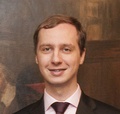
Departmental seminar on 18th October 2023
Dr. Lukáš Grajciar will present his habilitation lecture Towards reliable simulations of zeolites under operating conditions.
Zeolites, the crystalline (alumino)silicates, are materials produced at the Megaton scale with commercial applications ranging from detergents through thermal energy storage to catalysis. Even though zeolites have been studied for decades, understanding of their dynamical behaviour at operating conditions at the molecular level, including their (trans)formation and decomposition mechanisms is still mostly lacking. In this habilitation lecture, the advanced simulation methodologies (e.g., biased ab initio molecular dynamics or machine learning accelerated simulations) capable of bridging this gap will be briefly outlined. In the last part, the potential of these methodologies will be highlighted in studies focused on the reactive zeolite-water interactions, which are pivotal to optimize synthesis and production processes, increase the zeolites' durability and facilitate the design of new zeolites with superior property profile.
The lecture will take place in person, in the hall CH3, Faculty of Science, Hlavova 8, Praha 2.
Oct. 18, 2023 (14:00 – 15:30 )
Dr. Lukáš Grajciar will present his habilitation lecture Towards reliable simulations of zeolites under operating conditions.
Zeolites, the crystalline (alumino)silicates, are materials produced at the Megaton scale with commercial applications ranging from detergents through thermal energy storage to catalysis. Even though zeolites have been studied for decades, understanding of their dynamical behaviour at operating conditions at the molecular level, including their (trans)formation and decomposition mechanisms is still mostly lacking. In this habilitation lecture, the advanced simulation methodologies (e.g., biased ab initio molecular dynamics or machine learning accelerated simulations) capable of bridging this gap will be briefly outlined. In the last part, the potential of these methodologies will be highlighted in studies focused on the reactive zeolite-water interactions, which are pivotal to optimize synthesis and production processes, increase the zeolites' durability and facilitate the design of new zeolites with superior property profile.
The lecture will take place in person, in the hall CH3, Faculty of Science, Hlavova 8, Praha 2.
Wednesday, 25 October 2023
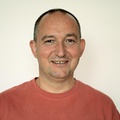
Departmental seminar on 25th October 2023
Dr. Jiří Pittner from Jaroslav Heyrovský Institute, Czech Academy of Sciences, will present his professorship lecture Molecules in states with different spin multiplicity: Theoretical approaches and applications.
It is well known that properties of a molecule in its electronically excited state can be fundamentally different from the ground states ones. This fact is the basis of photochemistry and photophysics, which study reactions and properties of excited molecules, and it has many applications in both technology and material science, as well as in life sciences. For example, the ubiquitous oxygen molecule, which is a triplet in the ground state, has a highly reactive excited singlet state with cytotoxic effects. A photodynamic cancer therapy has been suggested, where a suitable photosensitizer molecule implanted in the tumor cell produces after photon absorption the singlet oxygen, which attacks the cell membrane. As an example, from material science we can mention the OLED displays, where the energetical efficiency could be greatly improved if a suitable molecule with the first excited triplet state lying energetically higher than the first excited singlet could be found.
Theoretical modeling and understanding of such phenomena require advanced methods of quantum chemistry. First of all, one has to be able to compute with sufficient accuracy the energies (and possibly also other properties) and understand the electronic structure of the states involved. Particularly challenging are molecules in the strongly correlated regime, i.e. with a small HOMO-LUMO gap, where several states are energetically close lying and more than one Slater determinant has a large weight in the wave function. We have developed multireference coupled cluster methods and coupled cluster methods externally corrected by the density matrix renormalization group, which are applicable in such situations. A brief overview of these developments will be presented, with most recent application to the cyclazine molecule, where the inverted singlet-triplet
gap energetics is presently being debated in the literature.
Besides the ``static'' picture, where energies and time-independent properties of molecular states are investigated, the understanding of chemical processes often requires a time-dependent study. This can be performed employing molecular dynamics (MD), most often with (semi)classical treatment of the motion of atomic nuclei. When several excited states are included in the MD treatment in addition to the ground state, the method is called non-adiabatic molecular dynamics, and can be used to model photochemical processes like the internal conversion and the intersystem crossing. We have developed methods for computationally efficient non-adiabatic MD based on ADC(2) or TDDFT electronic structure treatment. Recently we investigated a halogen-derivative of the BODIPY molecule, which after a photoexcitation undergoes fast singlet-triplet transition and has thus the potential to serve as an efficient photosensitizer.
The lecture will take place in person, in the hall CH3, Faculty of Science, Hlavova 8, Praha 2.
Oct. 25, 2023 (14:00 – 15:30 )
Dr. Jiří Pittner from Jaroslav Heyrovský Institute, Czech Academy of Sciences, will present his professorship lecture Molecules in states with different spin multiplicity: Theoretical approaches and applications.
It is well known that properties of a molecule in its electronically excited state can be fundamentally different from the ground states ones. This fact is the basis of photochemistry and photophysics, which study reactions and properties of excited molecules, and it has many applications in both technology and material science, as well as in life sciences. For example, the ubiquitous oxygen molecule, which is a triplet in the ground state, has a highly reactive excited singlet state with cytotoxic effects. A photodynamic cancer therapy has been suggested, where a suitable photosensitizer molecule implanted in the tumor cell produces after photon absorption the singlet oxygen, which attacks the cell membrane. As an example, from material science we can mention the OLED displays, where the energetical efficiency could be greatly improved if a suitable molecule with the first excited triplet state lying energetically higher than the first excited singlet could be found.
Theoretical modeling and understanding of such phenomena require advanced methods of quantum chemistry. First of all, one has to be able to compute with sufficient accuracy the energies (and possibly also other properties) and understand the electronic structure of the states involved. Particularly challenging are molecules in the strongly correlated regime, i.e. with a small HOMO-LUMO gap, where several states are energetically close lying and more than one Slater determinant has a large weight in the wave function. We have developed multireference coupled cluster methods and coupled cluster methods externally corrected by the density matrix renormalization group, which are applicable in such situations. A brief overview of these developments will be presented, with most recent application to the cyclazine molecule, where the inverted singlet-triplet
gap energetics is presently being debated in the literature.
Besides the ``static'' picture, where energies and time-independent properties of molecular states are investigated, the understanding of chemical processes often requires a time-dependent study. This can be performed employing molecular dynamics (MD), most often with (semi)classical treatment of the motion of atomic nuclei. When several excited states are included in the MD treatment in addition to the ground state, the method is called non-adiabatic molecular dynamics, and can be used to model photochemical processes like the internal conversion and the intersystem crossing. We have developed methods for computationally efficient non-adiabatic MD based on ADC(2) or TDDFT electronic structure treatment. Recently we investigated a halogen-derivative of the BODIPY molecule, which after a photoexcitation undergoes fast singlet-triplet transition and has thus the potential to serve as an efficient photosensitizer.
The lecture will take place in person, in the hall CH3, Faculty of Science, Hlavova 8, Praha 2.
Wednesday, 1 November 2023

Departmental seminar on 1st November 2023
We have a guest, Dr. Štefan Vajda from Jaroslav Heyrovský Institute, Czech Academy of Sciences. The topic of his lecture is Atomically Precise Subnanometer Clusters: Size-and Composition Effects in Catalysis.
The focus of the presentation will be on catalysis by supported monodisperse subnanometer clusters made of a handful of atoms of one or two metals, supported on technologically relevant oxide supports. Using the examples of CO2 hydrogenation and CO oxidation, the effect of cluster size and atomic composition and the effect of the support will be discussed, along the role of theoretical calculations for the fundamental understanding of the function of cluster-based catalysts.
The lecture will take place in person, in the hall CH3, Faculty of Science, Hlavova 8, Praha 2.
Nov. 1, 2023 (14:00 – 15:30 )
We have a guest, Dr. Štefan Vajda from Jaroslav Heyrovský Institute, Czech Academy of Sciences. The topic of his lecture is Atomically Precise Subnanometer Clusters: Size-and Composition Effects in Catalysis.
The focus of the presentation will be on catalysis by supported monodisperse subnanometer clusters made of a handful of atoms of one or two metals, supported on technologically relevant oxide supports. Using the examples of CO2 hydrogenation and CO oxidation, the effect of cluster size and atomic composition and the effect of the support will be discussed, along the role of theoretical calculations for the fundamental understanding of the function of cluster-based catalysts.
The lecture will take place in person, in the hall CH3, Faculty of Science, Hlavova 8, Praha 2.
Wednesday, 8 November 2023

Departmental seminar on 8th November 2023
There will be introductory presentations of our 1st year PhD students.
The lecture will take place in person, in the hall CH3, Faculty of Science, Hlavova 8, Praha 2.
Nov. 8, 2023 (14:00 – 15:30 )
There will be introductory presentations of our 1st year PhD students.
The lecture will take place in person, in the hall CH3, Faculty of Science, Hlavova 8, Praha 2.
Wednesday, 29 November 2023

Departmental seminar on 29th November 2023
Filip Uhlík delivers his professorship lecture Chemistry by rolling dices.
Monte Carlo methods can be applied essentially to any problem. For most they would be quite poor, but there are some where they win and sometimes they are the only applicable methods we have. With costs of computing steadily and rapidly decreasing, their embarrassingly parallel nature is another advantage. In this lecture I would like to cover various aspects of the versatile Hamiltonian Monte Carlo method and to give several examples how it can be applied to studying problems of chemical interests.
The lecture will take place in person, in the hall CH3, Faculty of Science, Hlavova 8, Praha 2.
Nov. 29, 2023 (14:00 – 15:30 )
Filip Uhlík delivers his professorship lecture Chemistry by rolling dices.
Monte Carlo methods can be applied essentially to any problem. For most they would be quite poor, but there are some where they win and sometimes they are the only applicable methods we have. With costs of computing steadily and rapidly decreasing, their embarrassingly parallel nature is another advantage. In this lecture I would like to cover various aspects of the versatile Hamiltonian Monte Carlo method and to give several examples how it can be applied to studying problems of chemical interests.
The lecture will take place in person, in the hall CH3, Faculty of Science, Hlavova 8, Praha 2.
Wednesday, 6 December 2023

Departmental seminar on 6th December 2023
The 2nd year MSc. students will present their research topics:
- Daniel Berdár
- Petr Eminger
- Magdaléna Nejedlá
- Adam Hašpl
- Tímea Dérerová
The seminar will take place in person, in the hall CH3, Faculty of Science, Hlavova 8, Praha 2.
Dec. 6, 2023 (14:00 – 15:30 )
The 2nd year MSc. students will present their research topics:
- Daniel Berdár
- Petr Eminger
- Magdaléna Nejedlá
- Adam Hašpl
- Tímea Dérerová
The seminar will take place in person, in the hall CH3, Faculty of Science, Hlavova 8, Praha 2.
Wednesday, 13 December 2023

Departmental seminar on 13th December 2023
The 2nd year MSc. students will present their research topics:
- Kevin Kotalík
- Adam Brzezina
- Andrej Tekel
- Ondrej Kopilec
- Pavlína Šliková
The seminar will take place in person, in the hall CH3, Faculty of Science, Hlavova 8, Praha 2.
Dec. 13, 2023 (14:00 – 15:30 )
The 2nd year MSc. students will present their research topics:
- Kevin Kotalík
- Adam Brzezina
- Andrej Tekel
- Ondrej Kopilec
- Pavlína Šliková
The seminar will take place in person, in the hall CH3, Faculty of Science, Hlavova 8, Praha 2.
Wednesday, 21 February 2024

Departmental meeting
Presentations of the 1st year master students (Veselá, Krakl, Olšovská, Illés)
Feb. 21, 2024 - (14:00 )
Presentations of the 1st year master students (Veselá, Krakl, Olšovská, Illés)
Wednesday, 28 February 2024

Seminar talk by Dr. Jan Blahut (IOCB)
Paramagnetic NMR - the glimpse into the toolbox for material and catalyst characterisation
Feb. 28, 2024 (14:00 – 15:00 )
Paramagnetic NMR - the glimpse into the toolbox for material and catalyst characterisation
Wednesday, 6 March 2024

Presentations of 1st year master students
Presentations of the first year master students - Willimetz, Živný, Dědek, Šliková, Laštovičková
March 6, 2024 - (14:00 )
Presentations of the first year master students - Willimetz, Živný, Dědek, Šliková, Laštovičková
Wednesday, 20 March 2024

Presentations of the first and the second year master students
Mgr 1st/2nd year - Nováková, Pokorná, Mrzlíková, Hýbl, Hašpl
March 20, 2024 - (14:00 )
Mgr 1st/2nd year - Nováková, Pokorná, Mrzlíková, Hýbl, Hašpl
Wednesday, 27 March 2024

Seminar talk by Dr. Tomáš Etrych (IMC)
We have a guest, Dr. Tomáš Etrych form the Institute of Macromolecular Chemistry, Czech Academy of Sciences. His talk will be about Hydrophilic and amphiphilic copolymers for therapy and diagnostics.
The conjugation of low-molecular-weight therapeutics with water-soluble or amphiphilic polymer carriers have several advantages, e.g. reduced drug toxicity, prolonged drug circulation in blood and higher accumulation of low-molecular-weight therapeutics in tumor or inflamed tissue, and enable highly effective tumor and anti-inflammatory therapy with minimized side effects. In ourgroup we study synthetic polymer carriers based on the methacrylamides as suitable drug delivery vectors. The accumulation of these polymer carriers in tumor or inflamed tissue is molecular-weight dependent. In addition, the size and shape of the polymer carriers is crucial for their biological behavior, therefore various structures were synthesized and will be presented. Importantly, such polymer vectors can be advantageously used also as diagnostics or theranostics. Amphiphilic conjugates with photosensitizers and hydrophilic conjugates with fluorescent near-infrared dyes will be shown and their effect in photodynamic therapy or navigated surgery will be mentioned. Last, but not least, the results of collaborative research with companies will be presented during the lecture.
March 27, 2024 - (14:00 )
We have a guest, Dr. Tomáš Etrych form the Institute of Macromolecular Chemistry, Czech Academy of Sciences. His talk will be about Hydrophilic and amphiphilic copolymers for therapy and diagnostics.
The conjugation of low-molecular-weight therapeutics with water-soluble or amphiphilic polymer carriers have several advantages, e.g. reduced drug toxicity, prolonged drug circulation in blood and higher accumulation of low-molecular-weight therapeutics in tumor or inflamed tissue, and enable highly effective tumor and anti-inflammatory therapy with minimized side effects. In ourgroup we study synthetic polymer carriers based on the methacrylamides as suitable drug delivery vectors. The accumulation of these polymer carriers in tumor or inflamed tissue is molecular-weight dependent. In addition, the size and shape of the polymer carriers is crucial for their biological behavior, therefore various structures were synthesized and will be presented. Importantly, such polymer vectors can be advantageously used also as diagnostics or theranostics. Amphiphilic conjugates with photosensitizers and hydrophilic conjugates with fluorescent near-infrared dyes will be shown and their effect in photodynamic therapy or navigated surgery will be mentioned. Last, but not least, the results of collaborative research with companies will be presented during the lecture.
Wednesday, 10 April 2024

Seminar talk by Dr. Josef Bártl (1. LF UK)
We have a guest, Dr. Josef Bártl form the 1st Medical Faculty. His talk will be about The role of mass spectrometry in the diagnosis of inherited metabolic disorders.
Inherited metabolic disorders (IMDs) encompass a range of conditions displaying clinical symptoms caused by enzyme deficiencies, abnormal cell membrane function, or receptor irregularities stemming from genetic mutations. These variations lead to disruptions in biochemical metabolism, resulting in the accumulation of toxic metabolites or the depletion of essential compounds. IMDs manifest with a wide range of symptoms, affecting various organ systems at any age and are associated with a large heterogenous spectrum of biochemical markers. Hence, this poses challenge in early laboratory diagnostic and following management. Mass spectrometry (MS) represents a rapid analytical tool characterized by heigh sensitivity and specificity. It enables the simultaneous assessment of various IMDs including amino acid disorders, organic acidemias, and fatty acid oxidation disorders within a single experiment. The adoption of tandem mass spectrometry (MS/MS) facilitates the concurrent measurement of multiple metabolites, thus allowing the detection of multiple diseases from a single sample. In our biochemical laboratory we are focused on developing analytical methods for detecting IMDs employing various biological samples, like serum/plasma, urine, CSF, blood and dried blood spot (DBS). Based on over two decades of experience in LC/GC-MS/MS area we have developed comprehensive analytical algorithm for targeted metabolomics applied in newborn screening and selective screening of IMDs. It contributes to higher efficacy in diagnostic procedure and enhances patient outcomes and quality of their life.
April 10, 2024 - (14:00 )
We have a guest, Dr. Josef Bártl form the 1st Medical Faculty. His talk will be about The role of mass spectrometry in the diagnosis of inherited metabolic disorders.
Inherited metabolic disorders (IMDs) encompass a range of conditions displaying clinical symptoms caused by enzyme deficiencies, abnormal cell membrane function, or receptor irregularities stemming from genetic mutations. These variations lead to disruptions in biochemical metabolism, resulting in the accumulation of toxic metabolites or the depletion of essential compounds. IMDs manifest with a wide range of symptoms, affecting various organ systems at any age and are associated with a large heterogenous spectrum of biochemical markers. Hence, this poses challenge in early laboratory diagnostic and following management. Mass spectrometry (MS) represents a rapid analytical tool characterized by heigh sensitivity and specificity. It enables the simultaneous assessment of various IMDs including amino acid disorders, organic acidemias, and fatty acid oxidation disorders within a single experiment. The adoption of tandem mass spectrometry (MS/MS) facilitates the concurrent measurement of multiple metabolites, thus allowing the detection of multiple diseases from a single sample. In our biochemical laboratory we are focused on developing analytical methods for detecting IMDs employing various biological samples, like serum/plasma, urine, CSF, blood and dried blood spot (DBS). Based on over two decades of experience in LC/GC-MS/MS area we have developed comprehensive analytical algorithm for targeted metabolomics applied in newborn screening and selective screening of IMDs. It contributes to higher efficacy in diagnostic procedure and enhances patient outcomes and quality of their life.
Wednesday, 17 April 2024

Presentations of 1st year Ph.D. students
April 17, 2024 - (14:00 )
Tuesday, 14 May 2024

Liblice retreat
14.5.
- 13.00 Arrival and Accommodation
- 14.30-14.45 Opening - Tomáš Obšil
- 14.45-15.15 Introductory lectures of PhD students (1 year students - 5 min – 5 slides/each) : 01 - Martin Orságh, 02 - Ipsita Padhee, 03 - Jun Xie, 04 - Daria Sudakova, 05 – Andrej Šmelko
- 15.15-16.15 Future plans – Assistant Professors (6-8 min) : 01 – Lucie Nová, 02 – Oleg Rud, 03 – Pavla Eliášová, 04 – Jan Přech, 05 – Michal Mazur, 06 – Ondřej Sedláček, 07 – Junji He
- 16.15-16.25 Presentation of NMR Laboratory (Z. Tošner)
- 16.30-18.00 Free afternoon – volleyball (P. Eliášová, M. Mazur)
- 18.30 Dinner at the fire (it depends on the weather)
15.5.
- 9.00-10.40 Lectures of PhD students (5 x 15 min + 5 min discussion): 01 - Manayath Panakkal, 02 - David Šorm, 03 - Zuzana Vosáhlová, 04 - Klára Kohoutová, 05 - Behlssen Hleli
- 10.40-11.00 Coffee break
- 11.00-12.20 Lectures of PhD students (4 x 15 min + 5 min discussion): 06 - Sebastian Pineda, 07 - Anastasia Kurbanova, 08 - Indranil Saha, 09 – Min Li
- 12.30-14.00 Lunch
- 14.00-15.20 Postdoc Lectures (4 x 15 min + 5 min discussion): Po01 - Subha Samantha, Po02 – Luis Carracosa, Po03 – Zhaobo Zhou, Po04 - Carlos Bornes
- 15.30-16.00 Coffee break
- 16.00-18.00 Pavla Hubálková (Charles University), Otakar Fojt (British Embassy Prague) Communication in Science
- 19.00 Dinner
16.5.
- 8.00 Breakfast and Departure
May 14, 2024 - May 16, 2024
14.5.
- 13.00 Arrival and Accommodation
- 14.30-14.45 Opening - Tomáš Obšil
- 14.45-15.15 Introductory lectures of PhD students (1 year students - 5 min – 5 slides/each) : 01 - Martin Orságh, 02 - Ipsita Padhee, 03 - Jun Xie, 04 - Daria Sudakova, 05 – Andrej Šmelko
- 15.15-16.15 Future plans – Assistant Professors (6-8 min) : 01 – Lucie Nová, 02 – Oleg Rud, 03 – Pavla Eliášová, 04 – Jan Přech, 05 – Michal Mazur, 06 – Ondřej Sedláček, 07 – Junji He
- 16.15-16.25 Presentation of NMR Laboratory (Z. Tošner)
- 16.30-18.00 Free afternoon – volleyball (P. Eliášová, M. Mazur)
- 18.30 Dinner at the fire (it depends on the weather)
15.5.
- 9.00-10.40 Lectures of PhD students (5 x 15 min + 5 min discussion): 01 - Manayath Panakkal, 02 - David Šorm, 03 - Zuzana Vosáhlová, 04 - Klára Kohoutová, 05 - Behlssen Hleli
- 10.40-11.00 Coffee break
- 11.00-12.20 Lectures of PhD students (4 x 15 min + 5 min discussion): 06 - Sebastian Pineda, 07 - Anastasia Kurbanova, 08 - Indranil Saha, 09 – Min Li
- 12.30-14.00 Lunch
- 14.00-15.20 Postdoc Lectures (4 x 15 min + 5 min discussion): Po01 - Subha Samantha, Po02 – Luis Carracosa, Po03 – Zhaobo Zhou, Po04 - Carlos Bornes
- 15.30-16.00 Coffee break
- 16.00-18.00 Pavla Hubálková (Charles University), Otakar Fojt (British Embassy Prague) Communication in Science
- 19.00 Dinner
16.5.
- 8.00 Breakfast and Departure
Wednesday, 22 May 2024
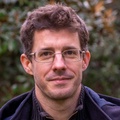
Seminar talk by Dr. Alexandre Ponrouch (Mat. Sci. Inst. Barcelona)
by Dr., Alexandre Ponrouch
Electrolytes and interphases in Post Li batteries
Large research efforts are devoted to the Li-ion battery technology, which is now mature and plays a major role in the field of portable electronics and electromobility. Aside from controversial debates on lithium and other critical raw materials supply, the development of new battery chemistries is appealing, especially in large scale stationary applications for which cost is a critical aspect. Interesting alternatives are to use sodium, calcium or magnesium instead of lithium. Current efforts on these alternative technologies are mostly devoted to the search of new electrode materials, while studies dealing with the electrolyte are much scarcer.
Electrolytes (combination of salt, solvent and additives) play a crucial role in the battery performances. Among other important requirements, the electrolyte must ensure fast mobility of electroactive species (cations) from one electrode to the other, it must wet properly the separators and the electrodes, it should remain stable in contact with fully charged electrodes (large electrochemical stability window) or lead to the formation of stable interphase preventing continuous electrolyte decomposition.
In this seminar, I will introduce the main selection criteria for electrolyte components and show comparative studies of various post-Li electrolyte formulations and their physico-chemical properties (viscosity, ionic conductivity, electrochemical and thermal stabilities). Results will be discussed together with cation solvation trends and investigations on the electrode/electrolyte interface and its impact on the performance of Na, Ca and Mg based cells. Finally, the reliability of electrochemical setups to test new electrode and electrolytes for post-Li battery will also be discussed.
May 22, 2024 - (14:00 )
Electrolytes and interphases in Post Li batteries
Large research efforts are devoted to the Li-ion battery technology, which is now mature and plays a major role in the field of portable electronics and electromobility. Aside from controversial debates on lithium and other critical raw materials supply, the development of new battery chemistries is appealing, especially in large scale stationary applications for which cost is a critical aspect. Interesting alternatives are to use sodium, calcium or magnesium instead of lithium. Current efforts on these alternative technologies are mostly devoted to the search of new electrode materials, while studies dealing with the electrolyte are much scarcer.
Electrolytes (combination of salt, solvent and additives) play a crucial role in the battery performances. Among other important requirements, the electrolyte must ensure fast mobility of electroactive species (cations) from one electrode to the other, it must wet properly the separators and the electrodes, it should remain stable in contact with fully charged electrodes (large electrochemical stability window) or lead to the formation of stable interphase preventing continuous electrolyte decomposition.
In this seminar, I will introduce the main selection criteria for electrolyte components and show comparative studies of various post-Li electrolyte formulations and their physico-chemical properties (viscosity, ionic conductivity, electrochemical and thermal stabilities). Results will be discussed together with cation solvation trends and investigations on the electrode/electrolyte interface and its impact on the performance of Na, Ca and Mg based cells. Finally, the reliability of electrochemical setups to test new electrode and electrolytes for post-Li battery will also be discussed.
Wednesday, 9 October 2024

Seminar talk by Dr. Sergei Nechaev (LPTMS, CNRS - Universite Paris-Saclay, France)
by Dr., Sergei Nechaev
Spectral peculiarity and criticality of a human connectome
In the talk, I will present our study on the spectral analysis of structural connectomes from various organisms, utilizing open-access data. We have uncovered exciting new insights into the human brain's connectome. One of our key findings is that the spectral density of the human connectome deviates more significantly from that of a random network compared to other organisms. For most animals, their connectomes can be closely replicated by a network evolution model that favors the formation of 3-cycles. However, in the case of the human brain, preserving local clustering was essential to accurately model its connectome. Furthermore, the spectral statistics of the human connectome align with a critical regime observed in condensed matter physics, which is a hybrid of Wigner-Dyson and Poisson distributions. This result strongly supports the intriguing hypothesis that the human brain operates at a critical state, a concept that has been widely debated.
Oct. 9, 2024 - (14:00 )
Spectral peculiarity and criticality of a human connectome
In the talk, I will present our study on the spectral analysis of structural connectomes from various organisms, utilizing open-access data. We have uncovered exciting new insights into the human brain's connectome. One of our key findings is that the spectral density of the human connectome deviates more significantly from that of a random network compared to other organisms. For most animals, their connectomes can be closely replicated by a network evolution model that favors the formation of 3-cycles. However, in the case of the human brain, preserving local clustering was essential to accurately model its connectome. Furthermore, the spectral statistics of the human connectome align with a critical regime observed in condensed matter physics, which is a hybrid of Wigner-Dyson and Poisson distributions. This result strongly supports the intriguing hypothesis that the human brain operates at a critical state, a concept that has been widely debated.
Thursday, 10 October 2024
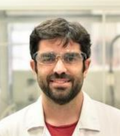
Guiding zeolite synthesis towards target frameworks and selective active site location: catalytic implications
by Dr., Manuel Moliner
Zeolites are crystalline microporous materials with application in diverse fields, especially in catalysis. The
ability to prepare zeolites with adequate physicochemical properties for a specific catalytic application is a matter of great interest, because it allows optimization of the entire chemical process. Nevertheless, directing the zeolite crystallization towards the material with the desired framework topology, crystal size, or chemical composition is not trivial, since several variables influence the nucleation and crystallization processes.
The lecture will present and discuss recent advances on the design of zeolite-based catalysts, where innovative rationalizations allow to generate precise metal active sites and maximize the stabilization of the key intermediates. These rationalized target zeolites will be applied as efficient catalysts in diverse environmental and industrial processes.
On-line attendance is possible upon request 1 day in advance at jan.prech@natur.cuni.cz
Lecture hall CH 1, Faculty of Science, Hlavova 8, Praha 2
Oct. 10, 2024 (17:30 – 19:00 )
Zeolites are crystalline microporous materials with application in diverse fields, especially in catalysis. The
ability to prepare zeolites with adequate physicochemical properties for a specific catalytic application is a matter of great interest, because it allows optimization of the entire chemical process. Nevertheless, directing the zeolite crystallization towards the material with the desired framework topology, crystal size, or chemical composition is not trivial, since several variables influence the nucleation and crystallization processes.
The lecture will present and discuss recent advances on the design of zeolite-based catalysts, where innovative rationalizations allow to generate precise metal active sites and maximize the stabilization of the key intermediates. These rationalized target zeolites will be applied as efficient catalysts in diverse environmental and industrial processes.
On-line attendance is possible upon request 1 day in advance at jan.prech@natur.cuni.cz
Lecture hall CH 1, Faculty of Science, Hlavova 8, Praha 2Tuesday, 15 October 2024
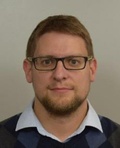
Habilitation lecture by Ondřej Sedláček
Novel approaches in poly(2-oxazoline) synthesis for drug delivery and biocompatible coatings
The habilitation lecture focuses on the synthesis and development of novel poly(2-oxazoline)s (PAOx) with potential biomedical applications, particularly in drug delivery systems, surface biocompatibility, and responsive nanomaterials. The lecture will begin with a discussion on the development of an acylation protocol for polyethylene imine (PEI), enabling the synthesis of highly defined poly(2-oxazoline)s, which overcome the limitations of traditional cationic ring-opening polymerization (CROP). The research further explores the conjugation of PAOx with therapeutic agents, demonstrating their efficacy in drug delivery applications. The introduction of novel amphiphilic gradient copolymers based on PAOx also offers new opportunities for encapsulating hydrophobic drugs and self-assembling into nanoparticles. Finally, the lecture will highlight the superior antifouling properties of poly(2-oxazine)s, presenting these polymers as highly efficient coatings for biomedical devices, surpassing traditional materials like polyethylene oxide.
Faculty of Science, Hlavova 8, Lecture hall CH3
Oct. 15, 2024 (14:00 – 15:30 )
Novel approaches in poly(2-oxazoline) synthesis for drug delivery and biocompatible coatings
The habilitation lecture focuses on the synthesis and development of novel poly(2-oxazoline)s (PAOx) with potential biomedical applications, particularly in drug delivery systems, surface biocompatibility, and responsive nanomaterials. The lecture will begin with a discussion on the development of an acylation protocol for polyethylene imine (PEI), enabling the synthesis of highly defined poly(2-oxazoline)s, which overcome the limitations of traditional cationic ring-opening polymerization (CROP). The research further explores the conjugation of PAOx with therapeutic agents, demonstrating their efficacy in drug delivery applications. The introduction of novel amphiphilic gradient copolymers based on PAOx also offers new opportunities for encapsulating hydrophobic drugs and self-assembling into nanoparticles. Finally, the lecture will highlight the superior antifouling properties of poly(2-oxazine)s, presenting these polymers as highly efficient coatings for biomedical devices, surpassing traditional materials like polyethylene oxide.
Faculty of Science, Hlavova 8, Lecture hall CH3Wednesday, 23 October 2024
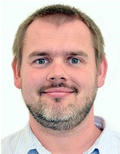
Seminar talk by Dr. Pavel Srb (IOCB Prague)
Almost everything you wanted to know about biomolecular NMR
The application of modern biomolecular NMR spectroscopy methods on proteins, nucleic acids and their complexes can reveal important molecular properties which are often inaccessible to other biophysical methods. Specifically, the inherent atomic resolution of NMR allows us to localize precisely interaction interfaces or changes in dynamics and molecular conformation. I will briefly explain how structural and dynamical features of molecules can be quickly qualitatively discussed using simple 1D 1 H and 2D N-H correlation spectra. Techniques for studies of interaction of proteins, nucleic acids and their complexes will be demonstrated along with use of spin labels using our recent work on protein-protein and protein-protein-DNA complexes.
Faculty of Science, Hlavova 8, Lecture hall CH3
Oct. 23, 2024 (14:00 – 15:30 )
Almost everything you wanted to know about biomolecular NMR
The application of modern biomolecular NMR spectroscopy methods on proteins, nucleic acids and their complexes can reveal important molecular properties which are often inaccessible to other biophysical methods. Specifically, the inherent atomic resolution of NMR allows us to localize precisely interaction interfaces or changes in dynamics and molecular conformation. I will briefly explain how structural and dynamical features of molecules can be quickly qualitatively discussed using simple 1D 1 H and 2D N-H correlation spectra. Techniques for studies of interaction of proteins, nucleic acids and their complexes will be demonstrated along with use of spin labels using our recent work on protein-protein and protein-protein-DNA complexes.
Faculty of Science, Hlavova 8, Lecture hall CH3Wednesday, 30 October 2024

Habilitation lecture by Zdeněk Tošner
Advancing Solid-State NMR by Optimal Control
In the past decade, we have witnessed significant advancements in NMR hardware, including the availability of ultra-high magnetic fields (>28 Tesla) and specialized magic angle spinning (MAS) probes capable of rotating solid samples at ultra-high frequencies (up to 150 kHz). These developments open up new opportunities for obtaining highly resolved proton NMR spectra of solids, but they also present new challenges for existing experimental techniques and the design of new pulse sequences.
In this habilitation lecture, I will focus on the design of new and improved experiments in solid-state NMR using optimal control methods. Unlike the traditional approach, which relies on analytical theories and manual development of quantum mechanics for each case, numerical optimizations allow for automated design and simple testing of new ideas. Our work has focused on multidimensional spectroscopy of solid protein samples, where we have developed, for the first time, transverse mixing recoupling elements (TROP). These pulse sequence blocks systematically enhance sensitivity by a factor of for each indirectly sampled spectral dimension, accelerating the acquisition of emerging 5D spectra by an order of magnitude.
Faculty of Science, Hlavova 8, Lecture hall CH3
Oct. 30, 2024 - (14:00 )
Advancing Solid-State NMR by Optimal Control
In the past decade, we have witnessed significant advancements in NMR hardware, including the availability of ultra-high magnetic fields (>28 Tesla) and specialized magic angle spinning (MAS) probes capable of rotating solid samples at ultra-high frequencies (up to 150 kHz). These developments open up new opportunities for obtaining highly resolved proton NMR spectra of solids, but they also present new challenges for existing experimental techniques and the design of new pulse sequences.
In this habilitation lecture, I will focus on the design of new and improved experiments in solid-state NMR using optimal control methods. Unlike the traditional approach, which relies on analytical theories and manual development of quantum mechanics for each case, numerical optimizations allow for automated design and simple testing of new ideas. Our work has focused on multidimensional spectroscopy of solid protein samples, where we have developed, for the first time, transverse mixing recoupling elements (TROP). These pulse sequence blocks systematically enhance sensitivity by a factor of for each indirectly sampled spectral dimension, accelerating the acquisition of emerging 5D spectra by an order of magnitude.
Faculty of Science, Hlavova 8, Lecture hall CH3Wednesday, 6 November 2024

Masters' students presentations
You are invited to attend next week's seminar on Wednesday 06.11, at 14:00 in CH3, which will include short presentations from five Masters' students on their ongoing research projects.
There may even be more halloween candy..
Nov. 6, 2024 - (14:00 )
You are invited to attend next week's seminar on Wednesday 06.11, at 14:00 in CH3, which will include short presentations from five Masters' students on their ongoing research projects.
There may even be more halloween candy..
Wednesday, 13 November 2024
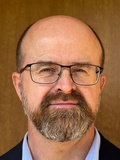
Seminar talk by David Viduna (Head of LNG & Origination at CEZ)
Challenges of Energy Industry
Mankind has always needed energy, and we consume more energy than any of the past generations. Do we have any particular requirements on the energy supply? And how shall we eventually reach those requirements? Is Europe, and the Czech Republic, keeping pace with the rest of the world? Is Europe the only continent to spend money on renewables?
Nov. 13, 2024 - (14:00 )
Challenges of Energy Industry
Mankind has always needed energy, and we consume more energy than any of the past generations. Do we have any particular requirements on the energy supply? And how shall we eventually reach those requirements? Is Europe, and the Czech Republic, keeping pace with the rest of the world? Is Europe the only continent to spend money on renewables?
Hlavova 8, CH3Wednesday, 20 November 2024

Masters' students presentations
Short presentations from five Masters' students about their scientific work
- Adéla Olšovská
- Peter Illes
- Marek Živný
- Frantisek Krakl
- Kristyna Pokorna
Nov. 20, 2024 - (14:00 )
Short presentations from five Masters' students about their scientific work
- Adéla Olšovská
- Peter Illes
- Marek Živný
- Frantisek Krakl
- Kristyna Pokorna
Thursday, 21 November 2024
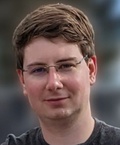
Application of Isothermal Titration Calorimetry in Self-assembly Studies
by Dr., Žiga Medoš
Nov. 21, 2024 - (14:00 )
Wednesday, 27 November 2024
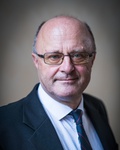
Career in Science and Evaluation of projects
by prof. Ing., DrSc., Jiří Čejka
You are warmly invited to attend the departmental seminar next week (CH3, wednesday at 14:00), which will involve a presentation and discussion with Prof. Jiří Čejka.
It will cover topics of science, career, grants, choosing a group and a field, and other interesting subjects related to the academic life. There will be a question and answer session afterwards, to which you are encouraged to bring your questions, whether about industry or academia.
Nov. 27, 2024 - (14:00 )
You are warmly invited to attend the departmental seminar next week (CH3, wednesday at 14:00), which will involve a presentation and discussion with Prof. Jiří Čejka.
It will cover topics of science, career, grants, choosing a group and a field, and other interesting subjects related to the academic life. There will be a question and answer session afterwards, to which you are encouraged to bring your questions, whether about industry or academia.
Hlavova 8, CH3Wednesday, 4 December 2024
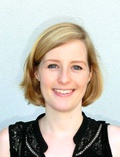
Insight into heterogeneous catalysts by advanced solid-state NMR spectroscopy
by Dr., Dorothea Wisser
Solid-state NMR spectroscopy is one of the most powerful techniques and a thriving field of methodological advances for atomic level characterization of materials, small molecules and biologic matter. In the Wisser solid-state NMR group at FAU Erlangen-Nürnberg, we take a close look at the surfaces and interfaces in modern, functional materials and catalysts.
Chemistry happens at these interfaces, therefore we want to obtain a molecular understanding of structures and active centers and their impact on function and reactivity. We further develop methods for real time observation, under in situ and operando conditions of chemical reactions and catalysis.
Examples of our current research on Supported Ionic Liquid Phase catalysts, carbon-based materials and metal-organic frameworks will be presented.
Lecture Hall CH3, Faculty of Sciences, Hlavova 8, Prague
Dec. 4, 2024 - (14:00 )
Solid-state NMR spectroscopy is one of the most powerful techniques and a thriving field of methodological advances for atomic level characterization of materials, small molecules and biologic matter. In the Wisser solid-state NMR group at FAU Erlangen-Nürnberg, we take a close look at the surfaces and interfaces in modern, functional materials and catalysts.
Chemistry happens at these interfaces, therefore we want to obtain a molecular understanding of structures and active centers and their impact on function and reactivity. We further develop methods for real time observation, under in situ and operando conditions of chemical reactions and catalysis.
Examples of our current research on Supported Ionic Liquid Phase catalysts, carbon-based materials and metal-organic frameworks will be presented.
Lecture Hall CH3, Faculty of Sciences, Hlavova 8, PragueWednesday, 11 December 2024

Opening of AFM/SEM Laboratory
by FRS FRSE FRSC FLSW, Russell Edward Morris
To officially open the new AFM/SEM laboratory at the faculty, we will have a program of presentations followed by an open discussion and a tour of the new facility.
Lecture hall CH1, Faculty of Science, Hlavova 8, Praha 2
Dec. 11, 2024 - (14:00 )
To officially open the new AFM/SEM laboratory at the faculty, we will have a program of presentations followed by an open discussion and a tour of the new facility.
Lecture hall CH1, Faculty of Science, Hlavova 8, Praha 2Wednesday, 5 February 2025

Will Nano-Zeolites have an impact on the Energy Transition…& beyond?
by Prof., Jean-Pierre Gilson
After a short introduction highlighting the current importance of zeolites in oil refining and petrochemistry, I will introduce the "Zeolite Crystal Engineering" as practiced in Caen. Nanosized zeolites are just one facet of Zeolite Crystal Engineering where the properties of a particular structure are tuned to meet the requirements of specific applications.
Nanozeolites are not only a laboratory invention but a commercial reality that found its place in catalytic processes and separations by adsorption. However, as potentially new applications of zeolites in the energy transition will push them outside their current comfort zone (i.e. working at high T in very endothermic reactions or working in hot water conditions), their resilience to extreme environment will be tested.
I will use two examples, one in catalysis (CH4 upgrading to H2 and aromatics) and one in adsorption (selective CO2 adsorption from a CH4/CO2 mixture) to highlight their potential and illustrate the challenges encountered.
Finally, I will show promising results leading to the use of nanozeolites in glioblastoma (a debilitating form of brain cancer) theragnostic.
Lecture hall CH3, Faculty of Science, Hlavova 8, Praha 2
Feb. 5, 2025 - (14:00 )
After a short introduction highlighting the current importance of zeolites in oil refining and petrochemistry, I will introduce the "Zeolite Crystal Engineering" as practiced in Caen. Nanosized zeolites are just one facet of Zeolite Crystal Engineering where the properties of a particular structure are tuned to meet the requirements of specific applications.
Nanozeolites are not only a laboratory invention but a commercial reality that found its place in catalytic processes and separations by adsorption. However, as potentially new applications of zeolites in the energy transition will push them outside their current comfort zone (i.e. working at high T in very endothermic reactions or working in hot water conditions), their resilience to extreme environment will be tested.
I will use two examples, one in catalysis (CH4 upgrading to H2 and aromatics) and one in adsorption (selective CO2 adsorption from a CH4/CO2 mixture) to highlight their potential and illustrate the challenges encountered.
Finally, I will show promising results leading to the use of nanozeolites in glioblastoma (a debilitating form of brain cancer) theragnostic.
Lecture hall CH3, Faculty of Science, Hlavova 8, Praha 2Tuesday, 11 February 2025

Conference for Master’s and Ph.D. Students
We warmly invite all students and attendees to join the presentation competition for Master’s and Ph.D. students of our department! Come support your colleagues, get inspired by their research projects, and participate in discussions with experts in the field. The conference will be held on the 11th of February in the lecture hall CH2.
For more details, visit https://physchem.cz/news/cnf2025/.
Feb. 11, 2025 - (09:00 )
We warmly invite all students and attendees to join the presentation competition for Master’s and Ph.D. students of our department! Come support your colleagues, get inspired by their research projects, and participate in discussions with experts in the field. The conference will be held on the 11th of February in the lecture hall CH2.
For more details, visit https://physchem.cz/news/cnf2025/.
CH2 Lecture Hall
Friday, 28 February 2025

Molecular Insights into PFAS Adsorption in Hydrophobic Zeolites
by Dr., Özgür Yazaydin
Per- and polyfluoroalkyl substances (PFAS) represent a group of synthetic chemicals that have garnered considerable attention in recent years due to their widespread use and persistent presence in the environment. These compounds, often referred to as "forever chemicals," are renowned for their resistance to degradation, posing significant challenges for environmental and human health. PFAS demonstrate notable diversity in their physical and chemical properties, which are contingent upon factors such as the type of the polar head group and length of the perfluorinated non-polar tail. Such diverse chemical and physical attributes, combined with their high mobility in soil and ground, render the traditional water treatment technologies ineffective for the removal of PFAS from water.
My research group has been studying the adsorption of PFAS from water in porous materials, including polymers, metal-organic frameworks, zeolites, and covalent organic frameworks, by employing advanced molecular simulation techniques. In my seminar, I will present our recent research on the effects of surface thermodynamics, fluorinated tail length, and acid head group type on the kinetics and energetics of PFAS adsorption in hydrophobic zeolites, using enhanced sampling methods and ab initio molecular dynamics. Time permitting, I will also briefly discuss our ongoing research on machine learning-assisted exploration of covalent organic frameworks for the removal of short-chain PFAS from water.
Lecture hall CH2, Faculty of Science, Hlavova 8, Praha 2
Feb. 28, 2025 - (10:00 )
Per- and polyfluoroalkyl substances (PFAS) represent a group of synthetic chemicals that have garnered considerable attention in recent years due to their widespread use and persistent presence in the environment. These compounds, often referred to as "forever chemicals," are renowned for their resistance to degradation, posing significant challenges for environmental and human health. PFAS demonstrate notable diversity in their physical and chemical properties, which are contingent upon factors such as the type of the polar head group and length of the perfluorinated non-polar tail. Such diverse chemical and physical attributes, combined with their high mobility in soil and ground, render the traditional water treatment technologies ineffective for the removal of PFAS from water.
My research group has been studying the adsorption of PFAS from water in porous materials, including polymers, metal-organic frameworks, zeolites, and covalent organic frameworks, by employing advanced molecular simulation techniques. In my seminar, I will present our recent research on the effects of surface thermodynamics, fluorinated tail length, and acid head group type on the kinetics and energetics of PFAS adsorption in hydrophobic zeolites, using enhanced sampling methods and ab initio molecular dynamics. Time permitting, I will also briefly discuss our ongoing research on machine learning-assisted exploration of covalent organic frameworks for the removal of short-chain PFAS from water.
Lecture hall CH2, Faculty of Science, Hlavova 8, Praha 2Wednesday, 5 March 2025

Seminar talk
by , Roger Glaser
Lecture hall CH3, Faculty of Science, Hlavova 8, Praha 2
March 5, 2025 - (14:00 )
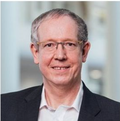
Heterogeneous Catalysis in Nanopores: The Benefit of Hierarchical Pore Systems
by Dr., Roger Glaser
Nanoporous catalysts are applied in a broad range ofchemical conversions. Often, however, low catalyst effectiveness factors may result, if mass-transfer limitations exist. Additional pore systems with larger dimensions in the macro- and mesoporous range may help to increase accessibility and mass-transfer to and away from the catalytically active sites. This presentation will highlightseveral examples in the field of catalysis over hierarchically structured materials. In particular, the role of diffusion forchemical reactions occurring on and in hierarchical nanoporous catalysts will be emphasized. First, microporous catalysts with a secondary “auxiliary” system of larger, mainly mesopores and, thus, improved catalyticactivity or stability will be treated.
The discussion will involve the transport scenarios of fast and slow molecular exchange, accessibility of active sites as well as the potential influence of surface barriers on the prevailing transport properties within the catalysts. Secondly, the potential of ntroducing larger (macro)pores and optimizing the geometry of hierarchical pore systems for the use in heterogeneous catalysis will be outlined. Considerable rate enhancements can be achieved, e.g., for the selective catalytic reduction of NO with NH3 over eso-/macroporous V2O5/TiO2 catalysts, based on theoretical evidence, or for the methanation of CO2 over Ni on over meso/macroporous Al2O3 monoliths. Finally, future challenges will be derived enabling a rational design of catalysts with complex ierarchical pore systems based on advanced experimental and theoretical methods to study molecular diffusion and conversion.
Lecture hall CH3, Faculty of Science, Hlavova 8, Praha 2
March 5, 2025 - (14:00 )
Nanoporous catalysts are applied in a broad range ofchemical conversions. Often, however, low catalyst effectiveness factors may result, if mass-transfer limitations exist. Additional pore systems with larger dimensions in the macro- and mesoporous range may help to increase accessibility and mass-transfer to and away from the catalytically active sites. This presentation will highlightseveral examples in the field of catalysis over hierarchically structured materials. In particular, the role of diffusion forchemical reactions occurring on and in hierarchical nanoporous catalysts will be emphasized. First, microporous catalysts with a secondary “auxiliary” system of larger, mainly mesopores and, thus, improved catalyticactivity or stability will be treated.
The discussion will involve the transport scenarios of fast and slow molecular exchange, accessibility of active sites as well as the potential influence of surface barriers on the prevailing transport properties within the catalysts. Secondly, the potential of ntroducing larger (macro)pores and optimizing the geometry of hierarchical pore systems for the use in heterogeneous catalysis will be outlined. Considerable rate enhancements can be achieved, e.g., for the selective catalytic reduction of NO with NH3 over eso-/macroporous V2O5/TiO2 catalysts, based on theoretical evidence, or for the methanation of CO2 over Ni on over meso/macroporous Al2O3 monoliths. Finally, future challenges will be derived enabling a rational design of catalysts with complex ierarchical pore systems based on advanced experimental and theoretical methods to study molecular diffusion and conversion.
Lecture hall CH3, Faculty of Science, Hlavova 8, Praha 2Wednesday, 12 March 2025
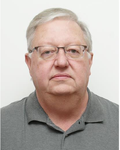
Key Concepts for Biomass Burial as a Negative Emissions Technology
by Dr., Jeff Amelse
Terrestrial Storage of Biomass (TSB) is a Negative Emission Technology for removing CO2 already in the atmosphere. Compared to other NETs, TSB is a natural, carbon- and energy-efficient, and low-cost option. Nature performs the work of removal by growing biomass via photosynthesis. The key to permanent carbon sequestration is to bury the biomass in pits designed to minimize decomposition. Decomposition of wood follows the same path as decomposition of municipal waste in landfills. A review of the chemistry of biomass formation and decomposition leads to key concepts for TSB burial pit design. Decomposition is inherently slow due to the cross-linking and dense packing of cellulose. Like catalytic reactions, decomposition attack can only occur at the surface. Methane formation from even asmall amount of decomposition has been raised as a concern due to its high global warming potential. This concern is shown to be unfounded due to a great difference in time constants for methane formation and its removal from the air by ozone oxidation. The small extent of woody biomass decomposition is spread over hundreds to thousands of years. However, methane has a short lifetime in air of only about 12 years. A model that couples the exceedingly slow rate of methane formation with the fast
removal by oxidation predicts that methane will peak at a very small fraction of the buried biomass carbon within about 10 years and then rapidly decay towards zero. The implication is that no additional equipment needs to be added to TSB to collect and burn
the methane as is done in municipal landfills.
Lecture hall CH3, Faculty of Science, Hlavova 8, Praha 2
March 12, 2025 - (14:00 )
Terrestrial Storage of Biomass (TSB) is a Negative Emission Technology for removing CO2 already in the atmosphere. Compared to other NETs, TSB is a natural, carbon- and energy-efficient, and low-cost option. Nature performs the work of removal by growing biomass via photosynthesis. The key to permanent carbon sequestration is to bury the biomass in pits designed to minimize decomposition. Decomposition of wood follows the same path as decomposition of municipal waste in landfills. A review of the chemistry of biomass formation and decomposition leads to key concepts for TSB burial pit design. Decomposition is inherently slow due to the cross-linking and dense packing of cellulose. Like catalytic reactions, decomposition attack can only occur at the surface. Methane formation from even asmall amount of decomposition has been raised as a concern due to its high global warming potential. This concern is shown to be unfounded due to a great difference in time constants for methane formation and its removal from the air by ozone oxidation. The small extent of woody biomass decomposition is spread over hundreds to thousands of years. However, methane has a short lifetime in air of only about 12 years. A model that couples the exceedingly slow rate of methane formation with the fast
removal by oxidation predicts that methane will peak at a very small fraction of the buried biomass carbon within about 10 years and then rapidly decay towards zero. The implication is that no additional equipment needs to be added to TSB to collect and burn
the methane as is done in municipal landfills.
Lecture hall CH3, Faculty of Science, Hlavova 8, Praha 2
Wednesday, 26 March 2025

1st year master students presentations
Lecture hall CH3, Faculty of Science, Hlavova 8, Praha 2
March 26, 2025 - (14:00 )
Wednesday, 2 April 2025
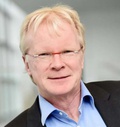
Mechanochemistry as a tool for catalyst synthesis and catalysis
by Dr., Ferdi Schueth
Mechanochemistry is a topic of high current interest and has been used for the synthesis of many different materials. Especially if done in ball mills, it is an excellent method for applications in catalysis, both in the synthesis of catalytic materials and in the catalytic reaction itself.
Ball milling approaches can be used for the synthesis of supported catalysts in a very simple manner by just mixing support and macroscopic metal powder, followed by milling. This does not only result in the formation of nanometer sized metal particles on the support, but also unusual alloys, which are hardly accessible by other methods, can be prepared. Ball milling can also lead to the conversion between polymorphs, and one of the most striking examples is the synthesis of corundum with very high surface area by the mechanochemically driven dehydrative phase transformation of boehmite, which, incidentally, can also be used to synthesize rare materials in the aluminum-oxygen-hydrogen system. The a-alumina thus produced is highly stable and is useful in different catalytic transformations.
Also catalytic reactions themselves can be driven by ball milling. This has been shown for a number of different reactions, such as CO-oxidation, preferential CO-oxidation in hydrogen, depolymerization of different polymers, or the chlorination of methane. The most spectacular examples for a catalytic reaction in a ball mill is the continuous synthesis of ammonia from the elements at atmospheric pressure and room temperature over an iron catalyst modified by metallic cesium.
The presentation will give an overview over different aspects of mechanochemistry in catalysis and also touch the issue of scaling up milling processes.
Lecture hall CH3, Faculty of Science, Hlavova 8, Praha 2
April 2, 2025 - (14:00 )
Mechanochemistry is a topic of high current interest and has been used for the synthesis of many different materials. Especially if done in ball mills, it is an excellent method for applications in catalysis, both in the synthesis of catalytic materials and in the catalytic reaction itself.
Ball milling approaches can be used for the synthesis of supported catalysts in a very simple manner by just mixing support and macroscopic metal powder, followed by milling. This does not only result in the formation of nanometer sized metal particles on the support, but also unusual alloys, which are hardly accessible by other methods, can be prepared. Ball milling can also lead to the conversion between polymorphs, and one of the most striking examples is the synthesis of corundum with very high surface area by the mechanochemically driven dehydrative phase transformation of boehmite, which, incidentally, can also be used to synthesize rare materials in the aluminum-oxygen-hydrogen system. The a-alumina thus produced is highly stable and is useful in different catalytic transformations.
Also catalytic reactions themselves can be driven by ball milling. This has been shown for a number of different reactions, such as CO-oxidation, preferential CO-oxidation in hydrogen, depolymerization of different polymers, or the chlorination of methane. The most spectacular examples for a catalytic reaction in a ball mill is the continuous synthesis of ammonia from the elements at atmospheric pressure and room temperature over an iron catalyst modified by metallic cesium.
The presentation will give an overview over different aspects of mechanochemistry in catalysis and also touch the issue of scaling up milling processes.
Lecture hall CH3, Faculty of Science, Hlavova 8, Praha 2Wednesday, 9 April 2025

1st year master students presentations
Lecture hall CH3, Faculty of Science, Hlavova 8, Praha 2
April 9, 2025 - (14:00 )
Wednesday, 16 April 2025

Why Czech science does not meet its potential? Some unsolicited advice from Dejvice.
by Dr., Jan Kovalinka
The speaker will try to list some weak points of the Czech research environment from his personal viewpoint. He will try to argue that on top of insufficient financing,other important issues involve fragmentation of research (too many universities with too many faculties, too many study programs, too many institutes of the Academy); separation of executive power and responsibilities and poorly understood academic freedom; complicated legal system, fear of changes and prevailing inbreeding in the Czech Academia.
Collectively, these factors lead to continuous lagging of Czech science behind EU/US standards. This situation, 35 years after the regime change and 20 years after entering the EU is not acceptable and needs to change.
Several well known and already tested pathways to excellence will be reviewed and some positive examples shown.
We can and ought to do better.
Lecture hall CH3, Faculty of Science, Hlavova 8, Praha 2
April 16, 2025 - (14:00 )
The speaker will try to list some weak points of the Czech research environment from his personal viewpoint. He will try to argue that on top of insufficient financing,other important issues involve fragmentation of research (too many universities with too many faculties, too many study programs, too many institutes of the Academy); separation of executive power and responsibilities and poorly understood academic freedom; complicated legal system, fear of changes and prevailing inbreeding in the Czech Academia.
Collectively, these factors lead to continuous lagging of Czech science behind EU/US standards. This situation, 35 years after the regime change and 20 years after entering the EU is not acceptable and needs to change.
Several well known and already tested pathways to excellence will be reviewed and some positive examples shown.
We can and ought to do better.
Lecture hall CH3, Faculty of Science, Hlavova 8, Praha 2Wednesday, 23 April 2025

1st year PhD students presentations
Lecture hall CH3, Faculty of Science, Hlavova 8, Praha 2
April 23, 2025 - (14:00 )
Wednesday, 7 May 2025

1st year PhD students presentations
Lecture hall CH3, Faculty of Science, Hlavova 8, Praha 2
May 7, 2025 - (14:00 )
Wednesday, 14 May 2025

Spectroscopic insights on atomic level organization of zeolites
by Dr., Eddy Dib
Zeolites catalysts and adsorbents find their key-roles in the chemical industry by favoring desired reaction pathways. The increase of efficiency of chemical processes thanks to zeolites render them very attractive in addressing circular economy needs. In this line, the zeolite family offered indispensable catalysts and adsorbents for several key-reactions and it continues to show remarkable properties in new sustainable processes. This is due to their high thermal stability arising from their crystallinity, tunable chemical composition, acidity, and shape selectivity linked to their uniform porous networks.
It is tempting to view zeolites as perfectly crystalline porous materials, however, such view of long-range order is unable to give insights on their atomic level ordering; the latter are often complex features which are still difficult to characterize as they include acid sites, hydroxyl groups, and metallic species. Thus, beyond the intimate structure-spectroscopy relationships, the structure-property relationship is far from trivial and many questions are still open on e.g. acidity and sorption properties of zeolites. Thus, atomic scale spectroscopic characterization and modelling are required for a further understanding of zeolites and the improvement of their performance.
In this presentation, we will explore the insights derived from the combination of experimental and theoretical spectroscopic approaches, mainly NMR, and their potential in understanding the complexity of the atomic organization of zeolites e.g. localization of acid sites and silanol groups and the role of organic templates. The impact of the structural and dynamical information derived from these approaches on the understanding of catalysis and adsorption properties will be shown as well.
Lecture hall CH3, Faculty of Science, Hlavova 8, Praha 2
May 14, 2025 - (14:00 )
Zeolites catalysts and adsorbents find their key-roles in the chemical industry by favoring desired reaction pathways. The increase of efficiency of chemical processes thanks to zeolites render them very attractive in addressing circular economy needs. In this line, the zeolite family offered indispensable catalysts and adsorbents for several key-reactions and it continues to show remarkable properties in new sustainable processes. This is due to their high thermal stability arising from their crystallinity, tunable chemical composition, acidity, and shape selectivity linked to their uniform porous networks.
It is tempting to view zeolites as perfectly crystalline porous materials, however, such view of long-range order is unable to give insights on their atomic level ordering; the latter are often complex features which are still difficult to characterize as they include acid sites, hydroxyl groups, and metallic species. Thus, beyond the intimate structure-spectroscopy relationships, the structure-property relationship is far from trivial and many questions are still open on e.g. acidity and sorption properties of zeolites. Thus, atomic scale spectroscopic characterization and modelling are required for a further understanding of zeolites and the improvement of their performance.
In this presentation, we will explore the insights derived from the combination of experimental and theoretical spectroscopic approaches, mainly NMR, and their potential in understanding the complexity of the atomic organization of zeolites e.g. localization of acid sites and silanol groups and the role of organic templates. The impact of the structural and dynamical information derived from these approaches on the understanding of catalysis and adsorption properties will be shown as well.
Lecture hall CH3, Faculty of Science, Hlavova 8, Praha 2Wednesday, 21 May 2025

Liblice retreat
Wednesday 21.5.
12.00-14.00 Arrival and Accommodation
14.00-14.15 Opening and foreword – Filip Uhlík
14.15-15.30 Postdoc Lectures (10 min + 5 min discussion) – Po01 – Zhaobo Zhou, Po02 – Pavel Švec, Po03 – Subha Samantha, Po04 – M Mariyamuthu
15.30-16.00 Coffee break
16.00-16.45 Postdoc Lectures (10 min + 5 min discussion) – Po05 – Kim, Po06 – Luis Carracosa, Po07 – Carlos Bornes
16.45-19.00 Free afternoon – volleyball
19.30- Dinner at the fire (it depends on the weather)
Thursday 22.5.
9.00-10.00 Prof. Jan Černý (PřF UK): "Identity crisis" - concept of chimerism in physiology and pathology?
10.00-10.30 Lectures of PhD students (1 st year students 5-10 min + 5 min discussion, other 10 min + 5min discussion) - 01 – Talat Zakeri, 02 – Andrej Tekel
10.30-11.00 Coffee break
11.00-12.15 Lectures of PhD students - 03 – Michaela Vaňková, 04 – Saeed Salamatgharamaleki, 05 – Ipsita Padhee, 06 – Magdalena Nejedlá, 07 - Guilherme Martins
12.15-14.00 Lunch
14.00-15.30 Lectures of PhD students - 08 – Niccolo Lusiani, 09 – Anna Laštovičková, 10 – Ondrej Kopilec, 11 – Fateme Poorhsrabarf, 12 – Timea Dererova
15.30-16.00 Coffee break
16.00-16.30 Lectures of PhD students - 13 – Adam Brzezina, 14 – Brako Amofao
16.30-17.30 Prof. Miroslav Bárta (Czech Institute of Egyptology) - The World on the Edge and the Seven Laws of Civilization
19.00 Dinner
Friday 23.5.
8.00 Breakfast and Departure
May 21, 2025 - (09:00 )
Wednesday 21.5.
12.00-14.00 Arrival and Accommodation
14.00-14.15 Opening and foreword – Filip Uhlík
14.15-15.30 Postdoc Lectures (10 min + 5 min discussion) – Po01 – Zhaobo Zhou, Po02 – Pavel Švec, Po03 – Subha Samantha, Po04 – M Mariyamuthu
15.30-16.00 Coffee break
16.00-16.45 Postdoc Lectures (10 min + 5 min discussion) – Po05 – Kim, Po06 – Luis Carracosa, Po07 – Carlos Bornes
16.45-19.00 Free afternoon – volleyball
19.30- Dinner at the fire (it depends on the weather)
Thursday 22.5.
9.00-10.00 Prof. Jan Černý (PřF UK): "Identity crisis" - concept of chimerism in physiology and pathology?
10.00-10.30 Lectures of PhD students (1 st year students 5-10 min + 5 min discussion, other 10 min + 5min discussion) - 01 – Talat Zakeri, 02 – Andrej Tekel
10.30-11.00 Coffee break
11.00-12.15 Lectures of PhD students - 03 – Michaela Vaňková, 04 – Saeed Salamatgharamaleki, 05 – Ipsita Padhee, 06 – Magdalena Nejedlá, 07 - Guilherme Martins
12.15-14.00 Lunch
14.00-15.30 Lectures of PhD students - 08 – Niccolo Lusiani, 09 – Anna Laštovičková, 10 – Ondrej Kopilec, 11 – Fateme Poorhsrabarf, 12 – Timea Dererova
15.30-16.00 Coffee break
16.00-16.30 Lectures of PhD students - 13 – Adam Brzezina, 14 – Brako Amofao
16.30-17.30 Prof. Miroslav Bárta (Czech Institute of Egyptology) - The World on the Edge and the Seven Laws of Civilization
19.00 Dinner
Friday 23.5.
8.00 Breakfast and Departure
Wednesday, 28 May 2025
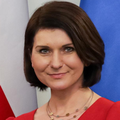
There is Still Plenty of Room for IR Spectroscopy in Catalysis
Developing novel catalysts requires a comprehensive characterization of the potential and existing catalysts. The catalytic activity is intrinsically linked to the active centres of the catalyst. Therefore, it is not surprising that the question of catalytic activity is, in fact, a question of active sites. How can we identify the active sites responsible for the desired activity among many other centers? Can we also quantify these active sites? Furthermore, by differentiating between reactive intermediates and spectator species, can we understand the reaction pathway that each active site influences? The best candidates for answering these questions are IR and UV-Vis spectroscopies.
Both provide a complete picture of the catalytic process by fusing quantitative and qualitative insights. Both aid in tracking the reaction process and enhance our understanding of the role of active sites. As scientists, we still face the challenge of examining active catalysts in real "working conditions”. We investigate extremely fast processes, such as diffusion, adsorption, and rearrangement of molecules on the catalyst surface, which usually take place in fractions of seconds. Time-resolved mode (rapid scan) IR measurements supported by 2D correlation analysis and Multivariate Curve Resolution-Alternating Least Squares algorithms are extremely effective in isolating species relevant to the catalytic process from many others. This allows us to determine the sequence of events in the catalytic nanoscale world. Finally, combining spectroscopic methods with measurements of catalyst activity and selectivity, via mass spectrometry and gas chromatography (GC) analysis, facilitates the assessment of the reaction's progress in real time.
Lecture hall CH2, Faculty of Science, Hlavova 8, Praha 2
May 28, 2025 - (14:00 )
Developing novel catalysts requires a comprehensive characterization of the potential and existing catalysts. The catalytic activity is intrinsically linked to the active centres of the catalyst. Therefore, it is not surprising that the question of catalytic activity is, in fact, a question of active sites. How can we identify the active sites responsible for the desired activity among many other centers? Can we also quantify these active sites? Furthermore, by differentiating between reactive intermediates and spectator species, can we understand the reaction pathway that each active site influences? The best candidates for answering these questions are IR and UV-Vis spectroscopies.
Both provide a complete picture of the catalytic process by fusing quantitative and qualitative insights. Both aid in tracking the reaction process and enhance our understanding of the role of active sites. As scientists, we still face the challenge of examining active catalysts in real "working conditions”. We investigate extremely fast processes, such as diffusion, adsorption, and rearrangement of molecules on the catalyst surface, which usually take place in fractions of seconds. Time-resolved mode (rapid scan) IR measurements supported by 2D correlation analysis and Multivariate Curve Resolution-Alternating Least Squares algorithms are extremely effective in isolating species relevant to the catalytic process from many others. This allows us to determine the sequence of events in the catalytic nanoscale world. Finally, combining spectroscopic methods with measurements of catalyst activity and selectivity, via mass spectrometry and gas chromatography (GC) analysis, facilitates the assessment of the reaction's progress in real time.
